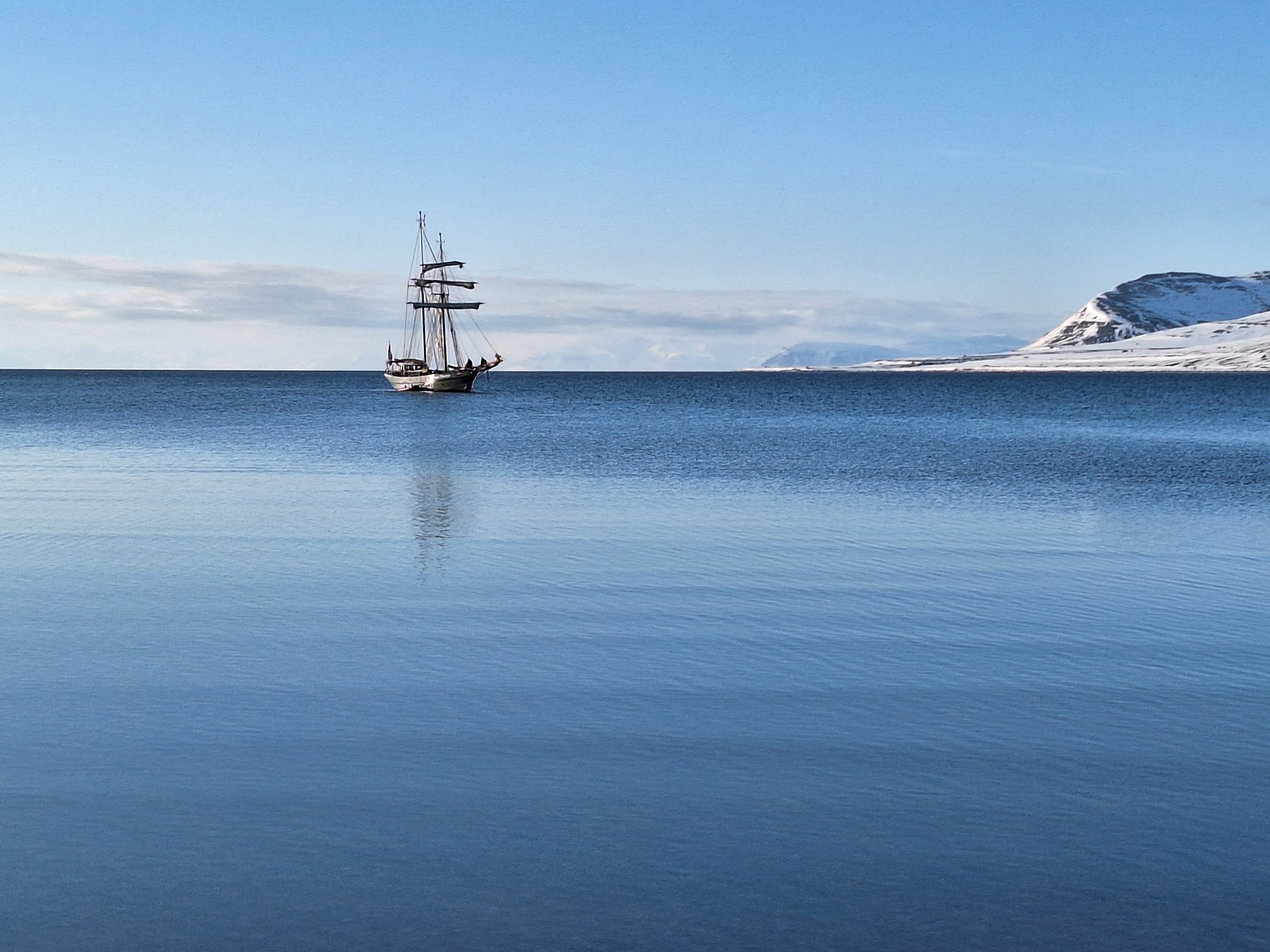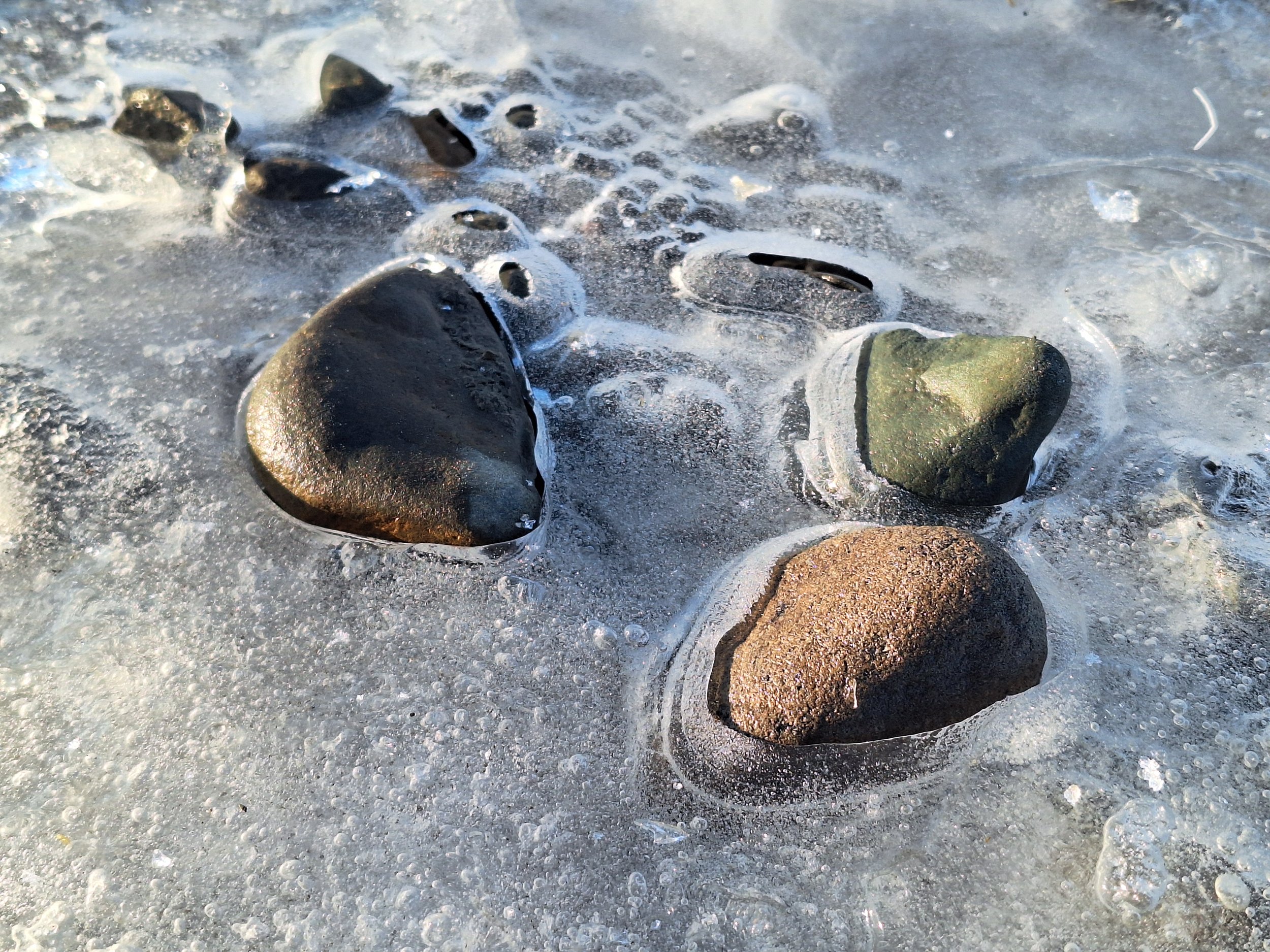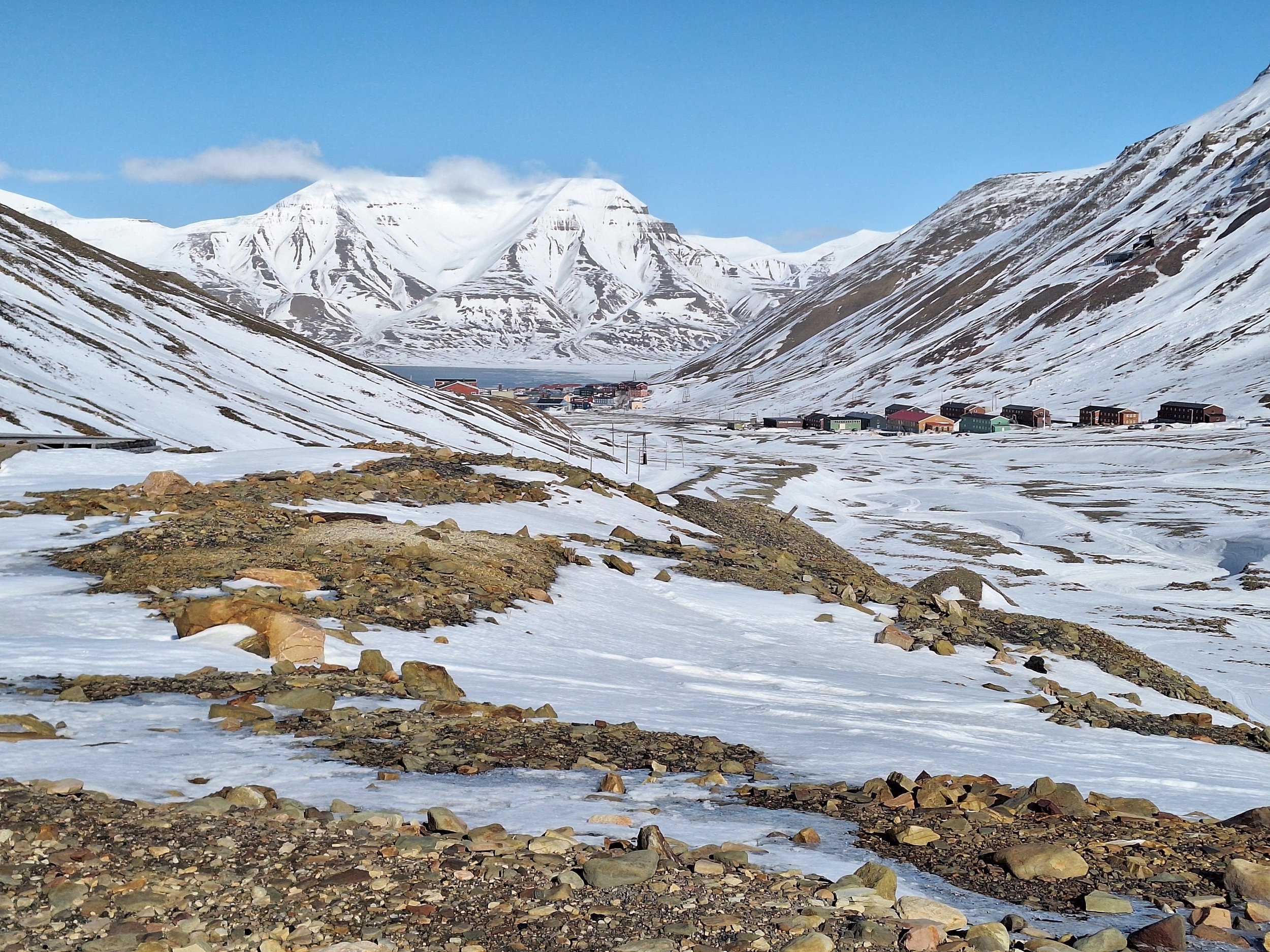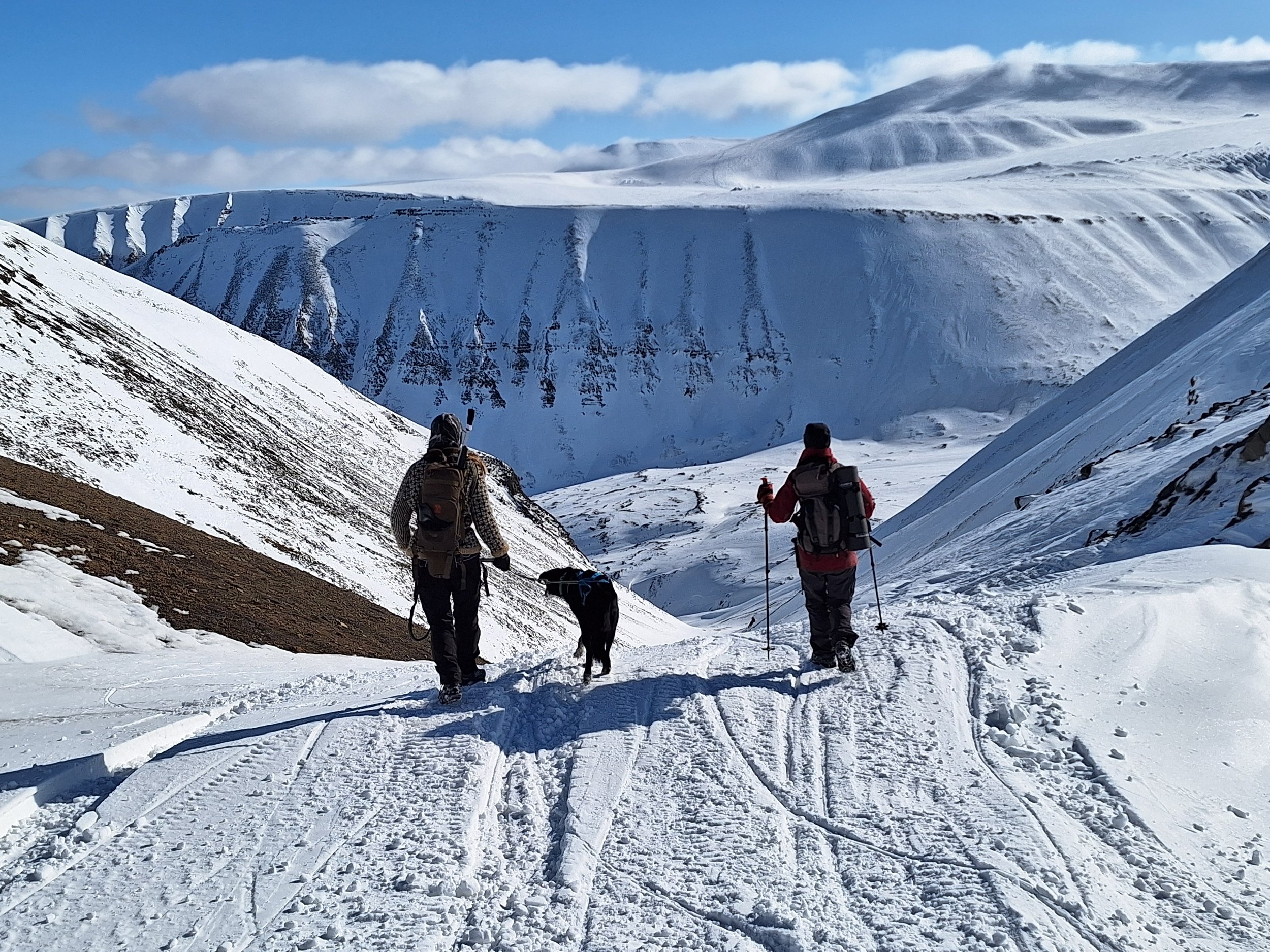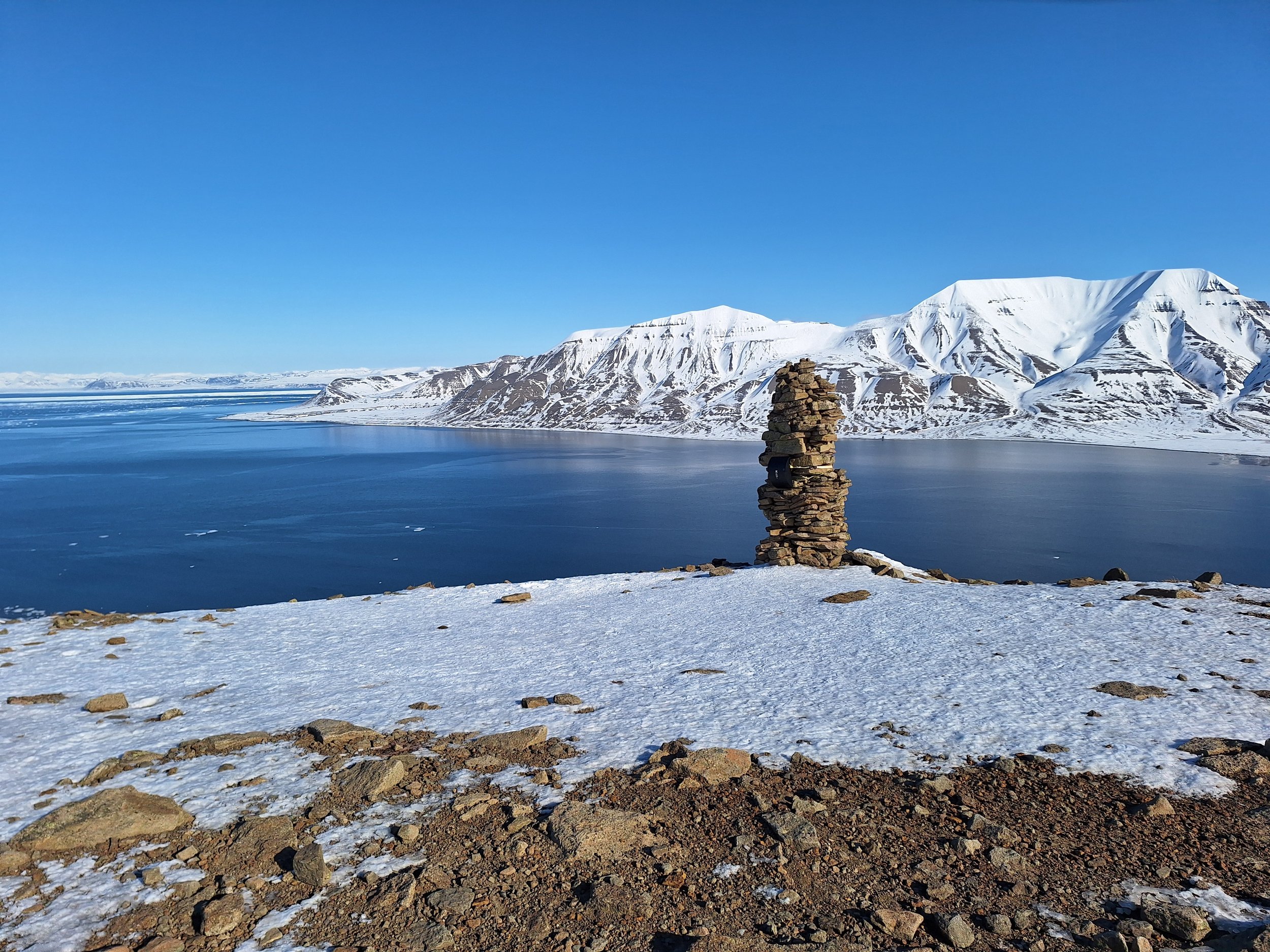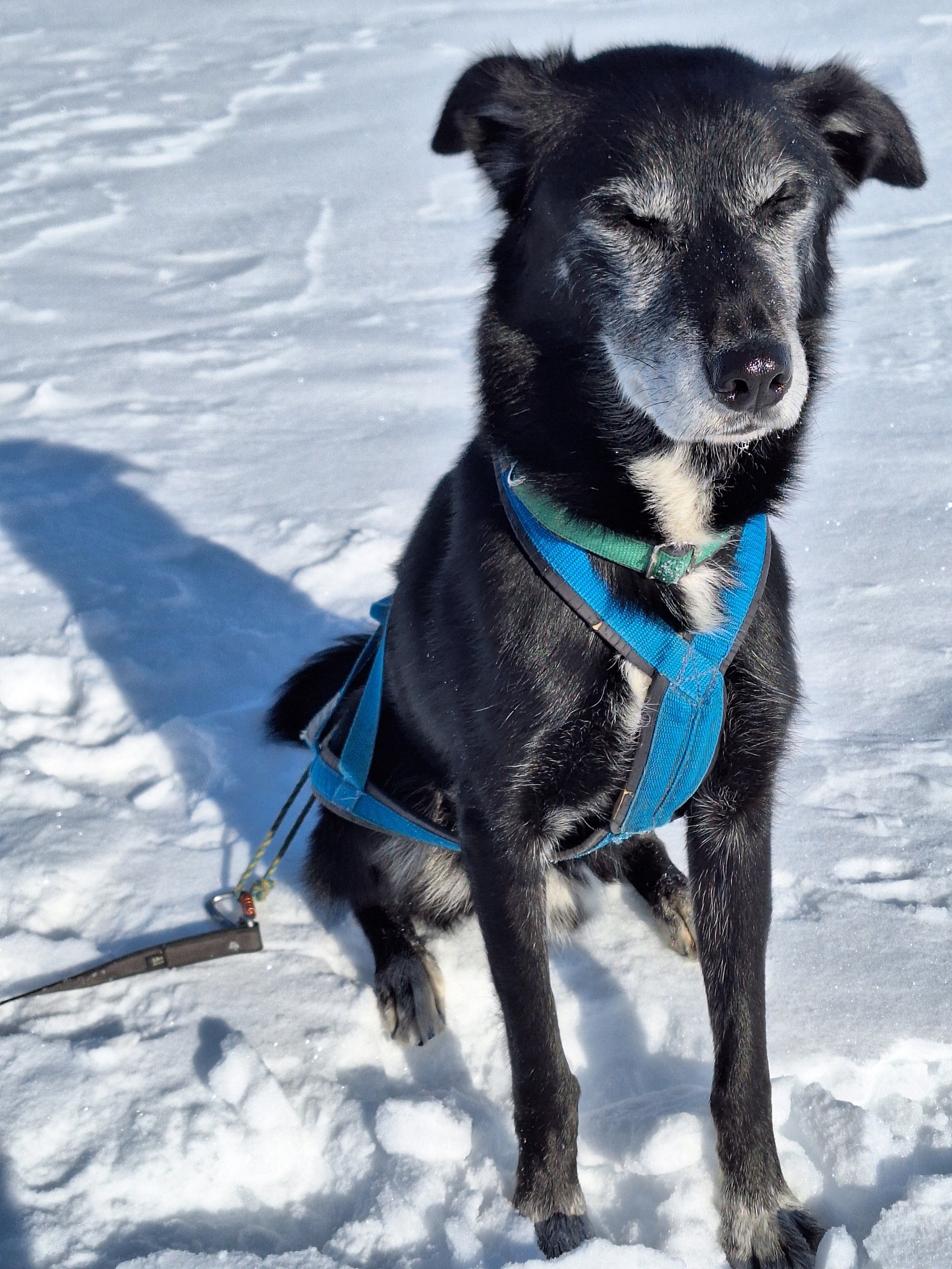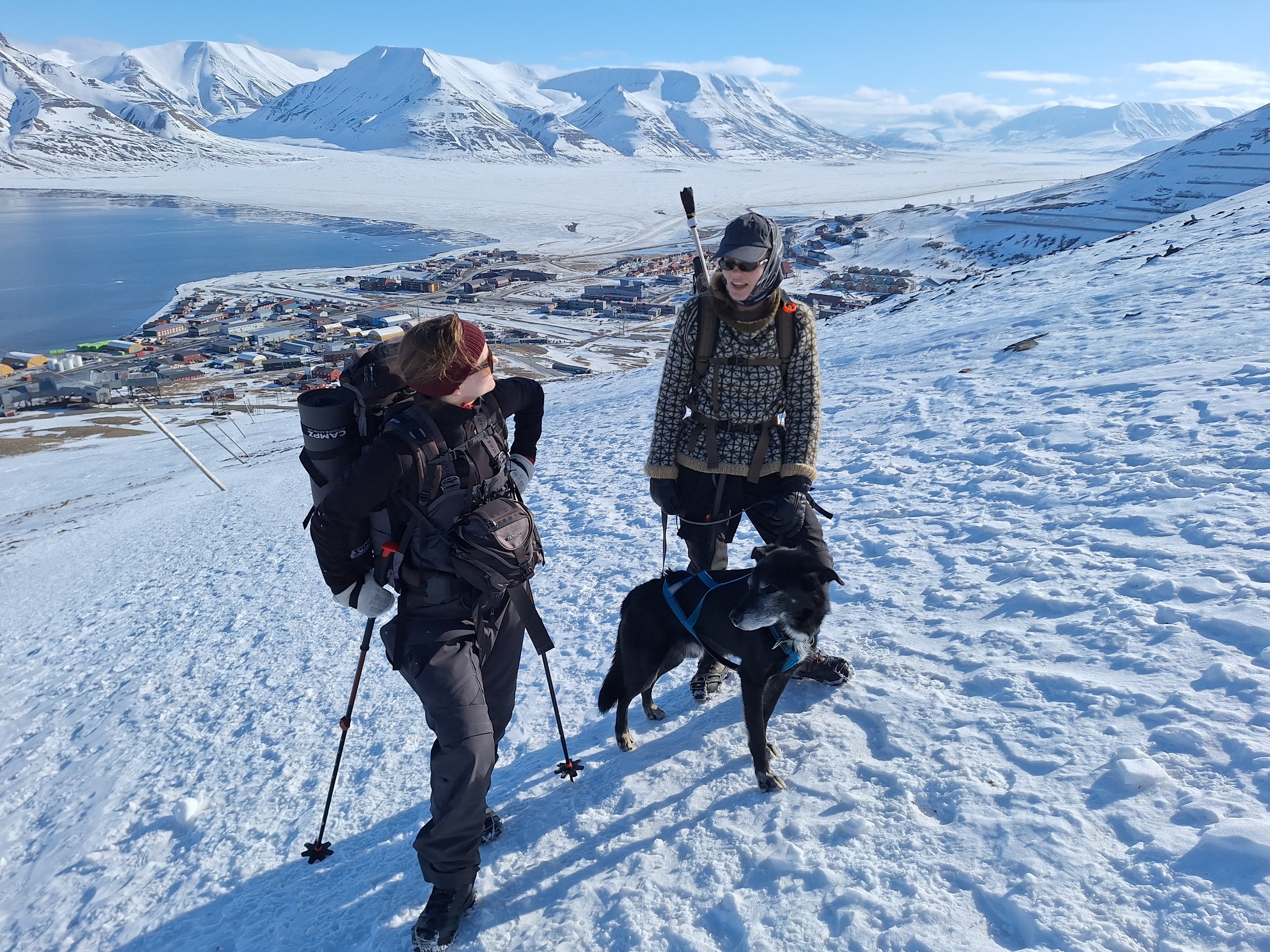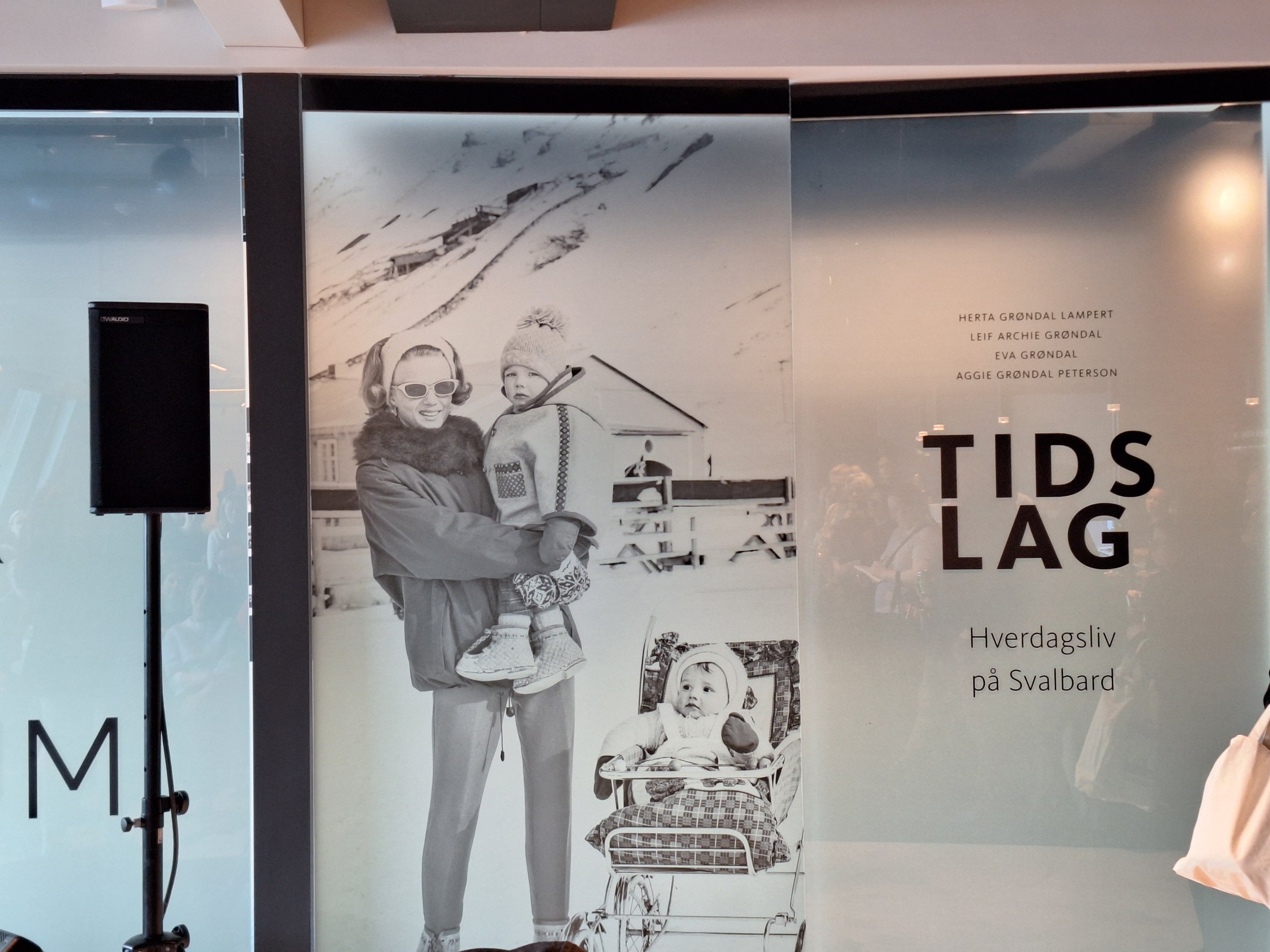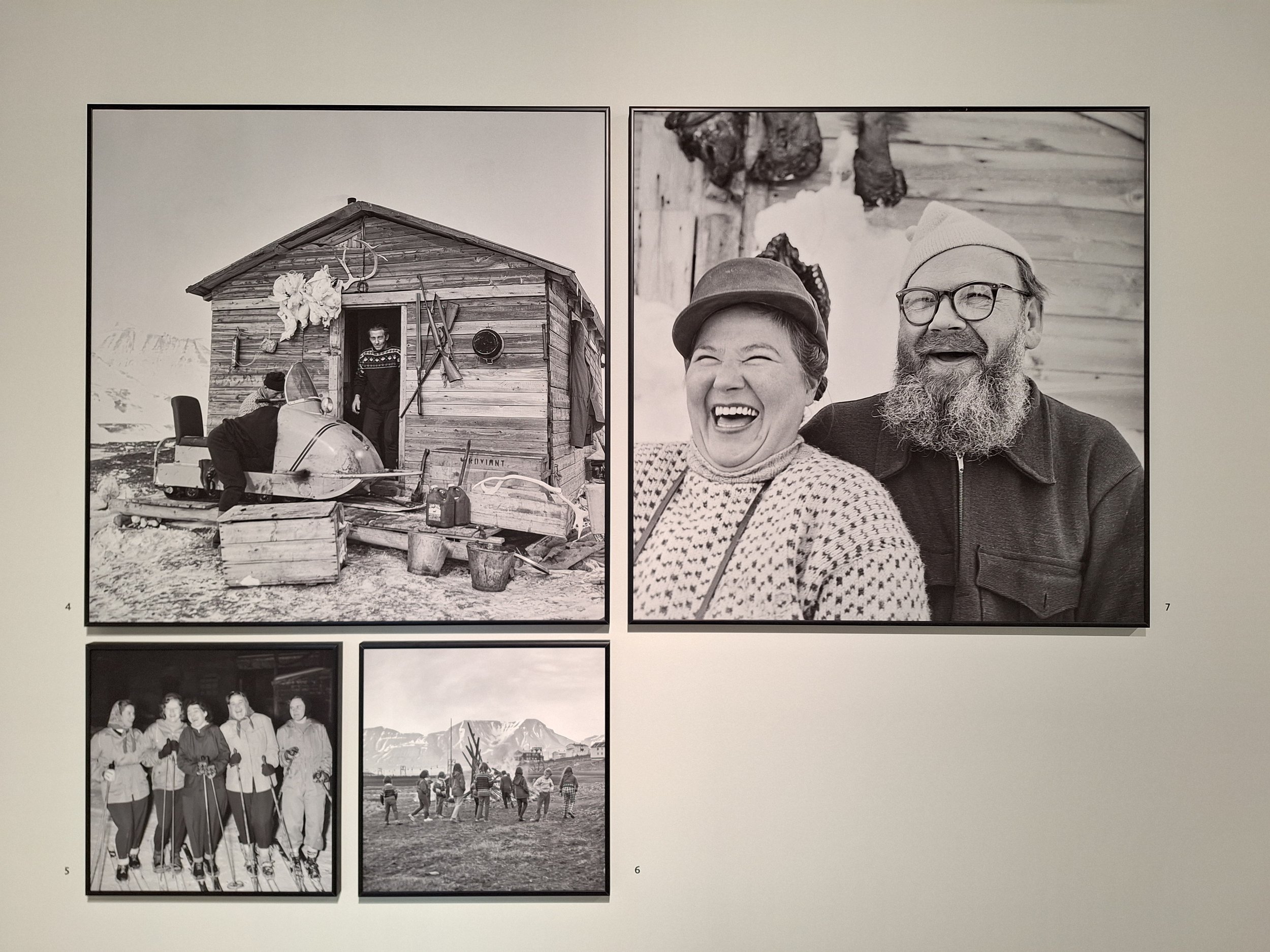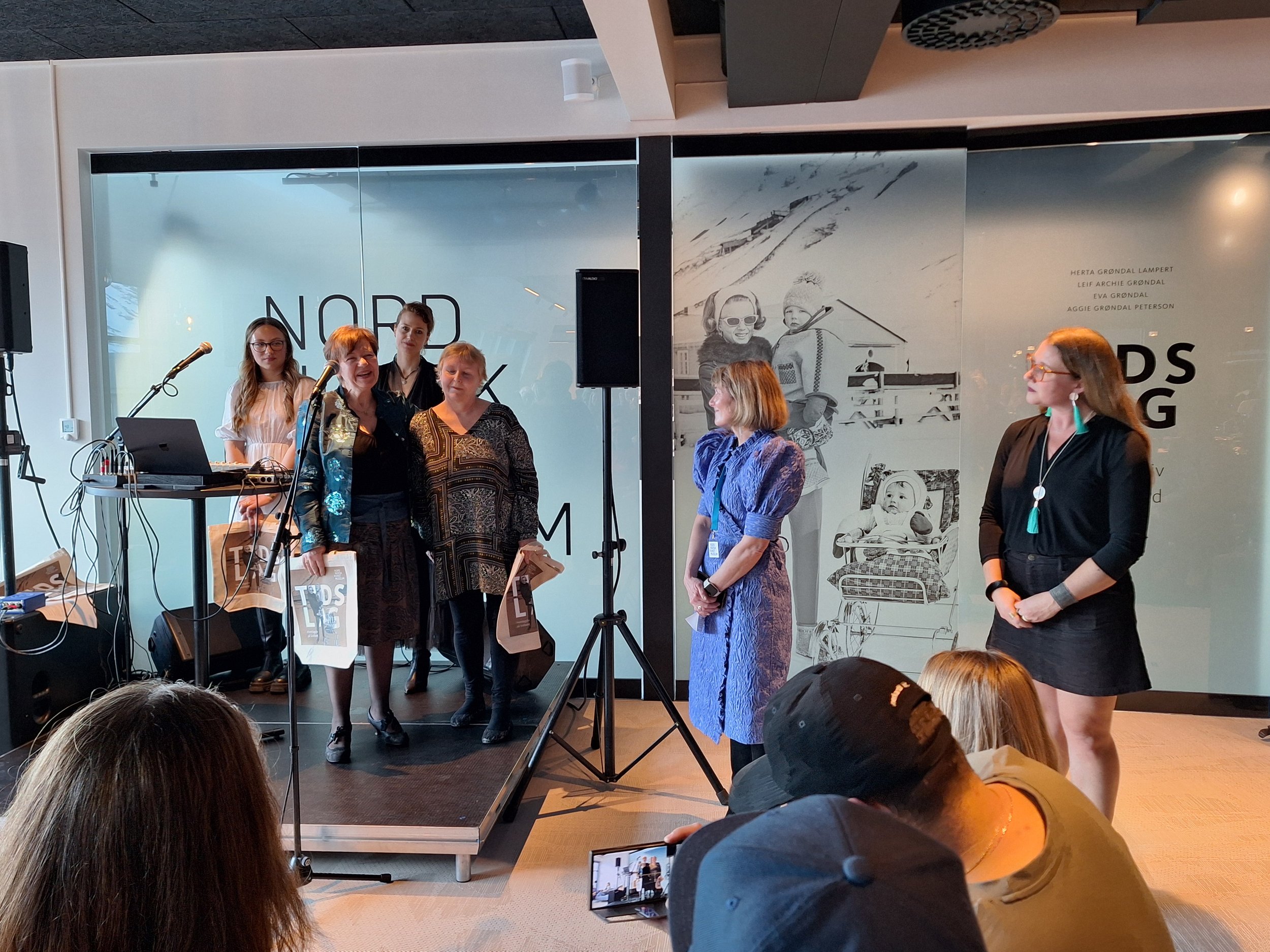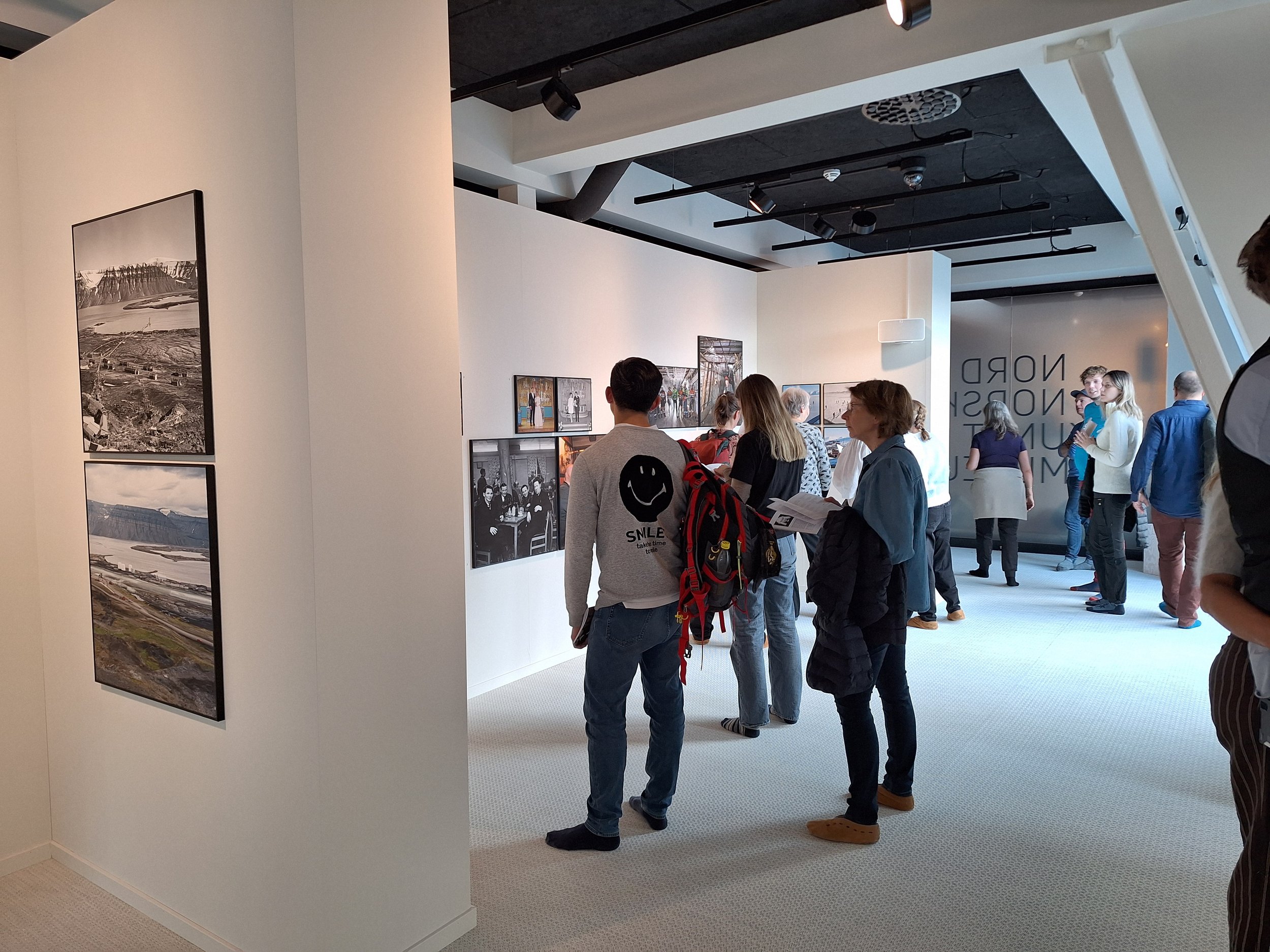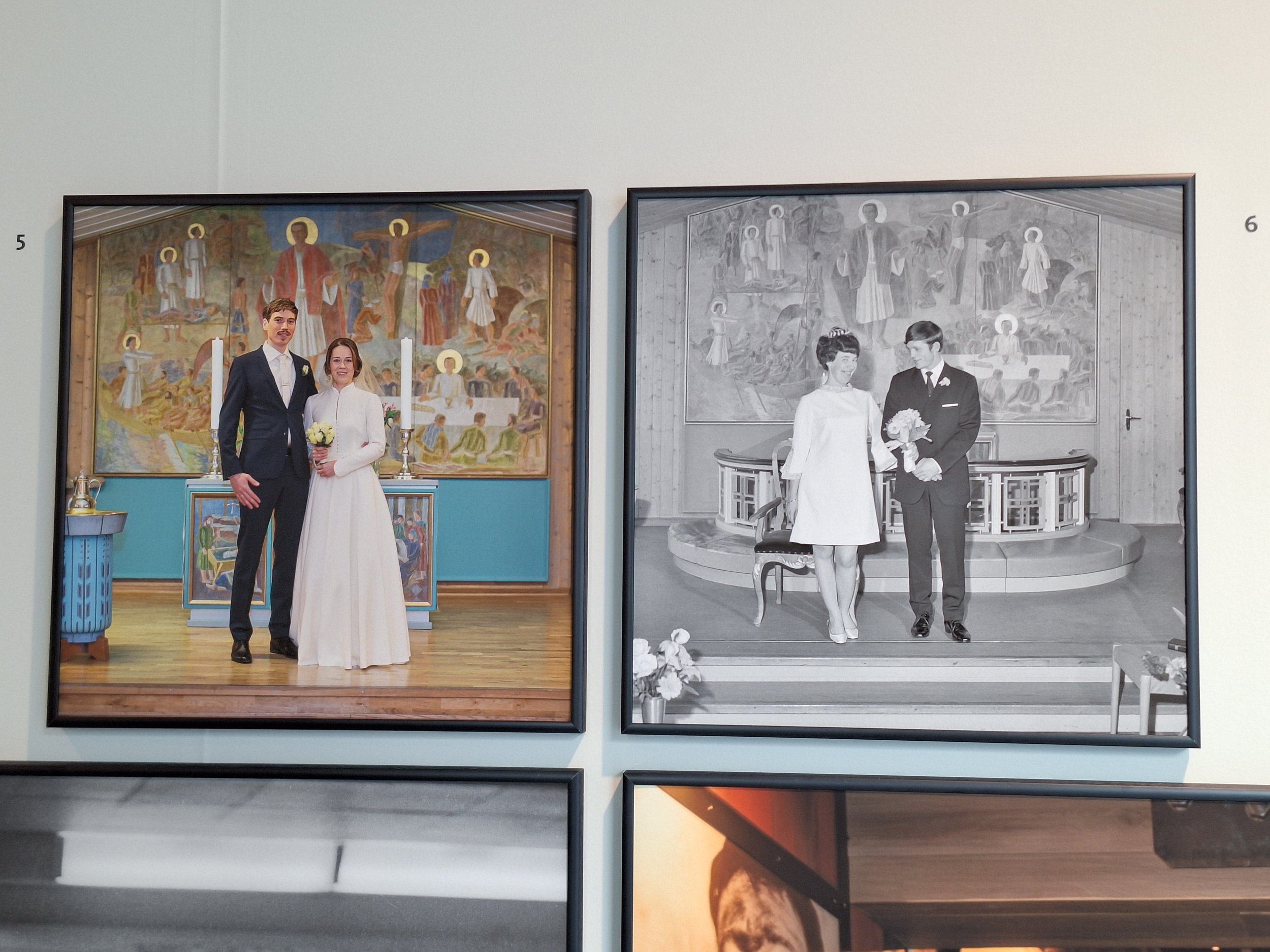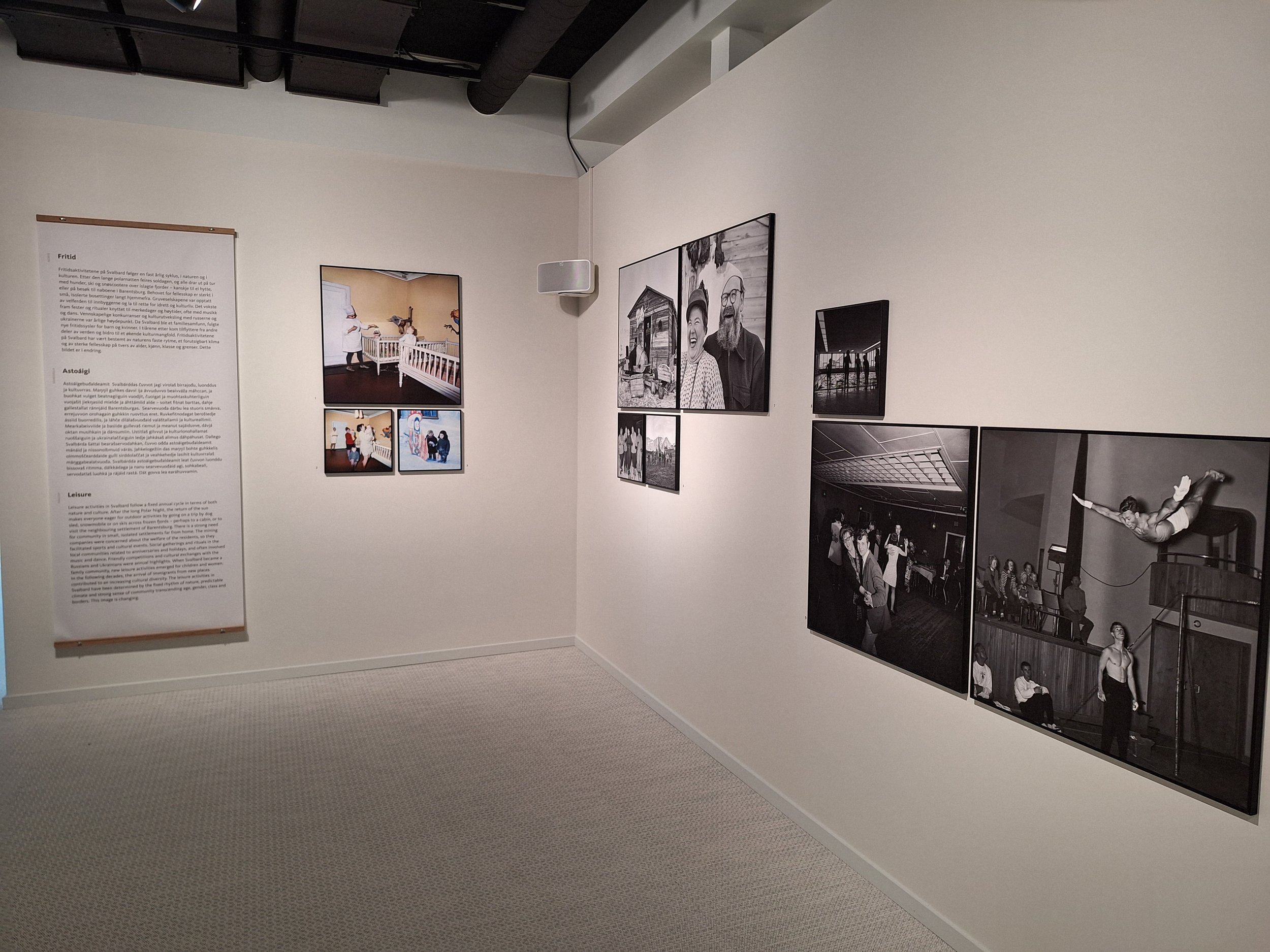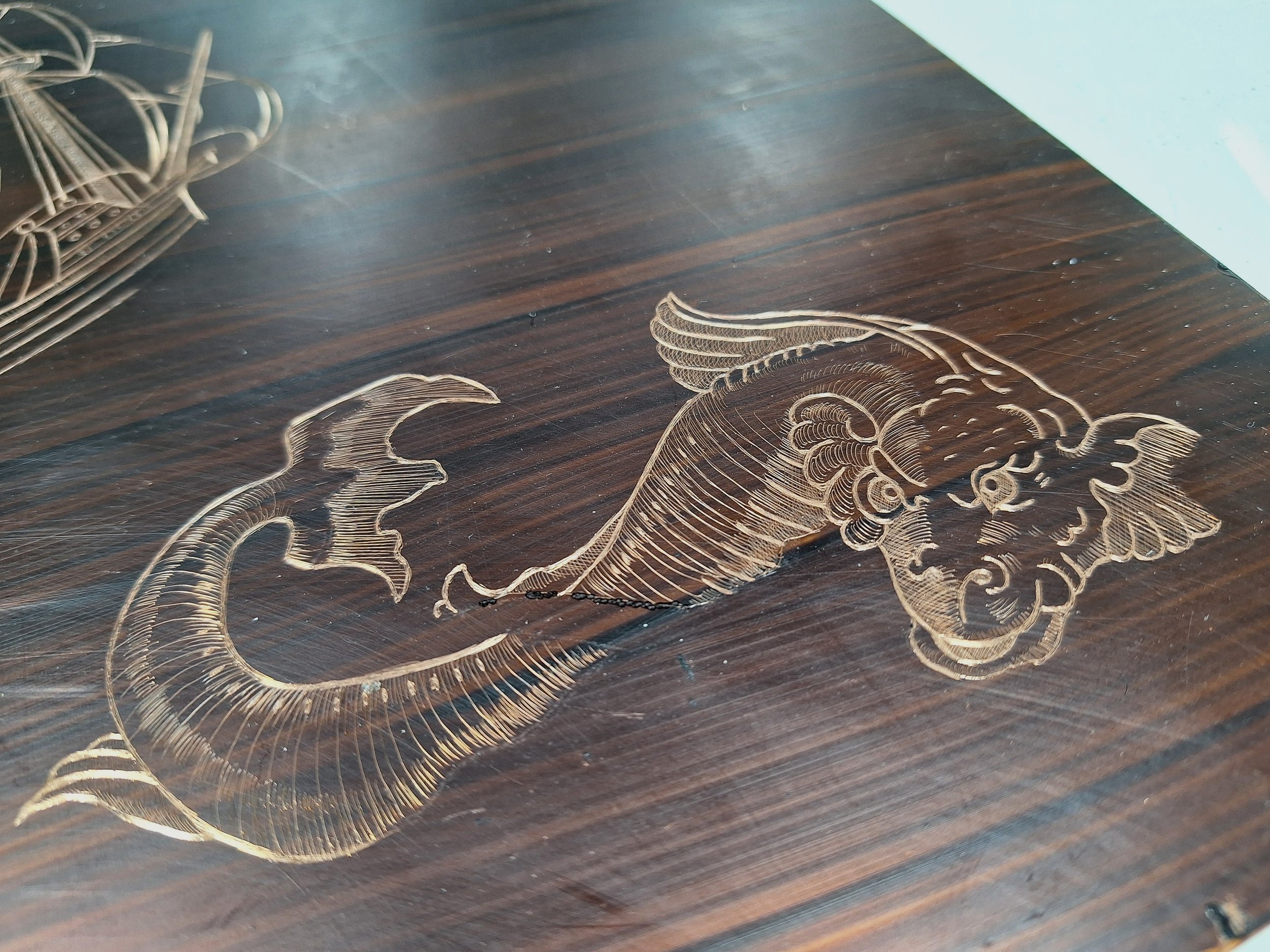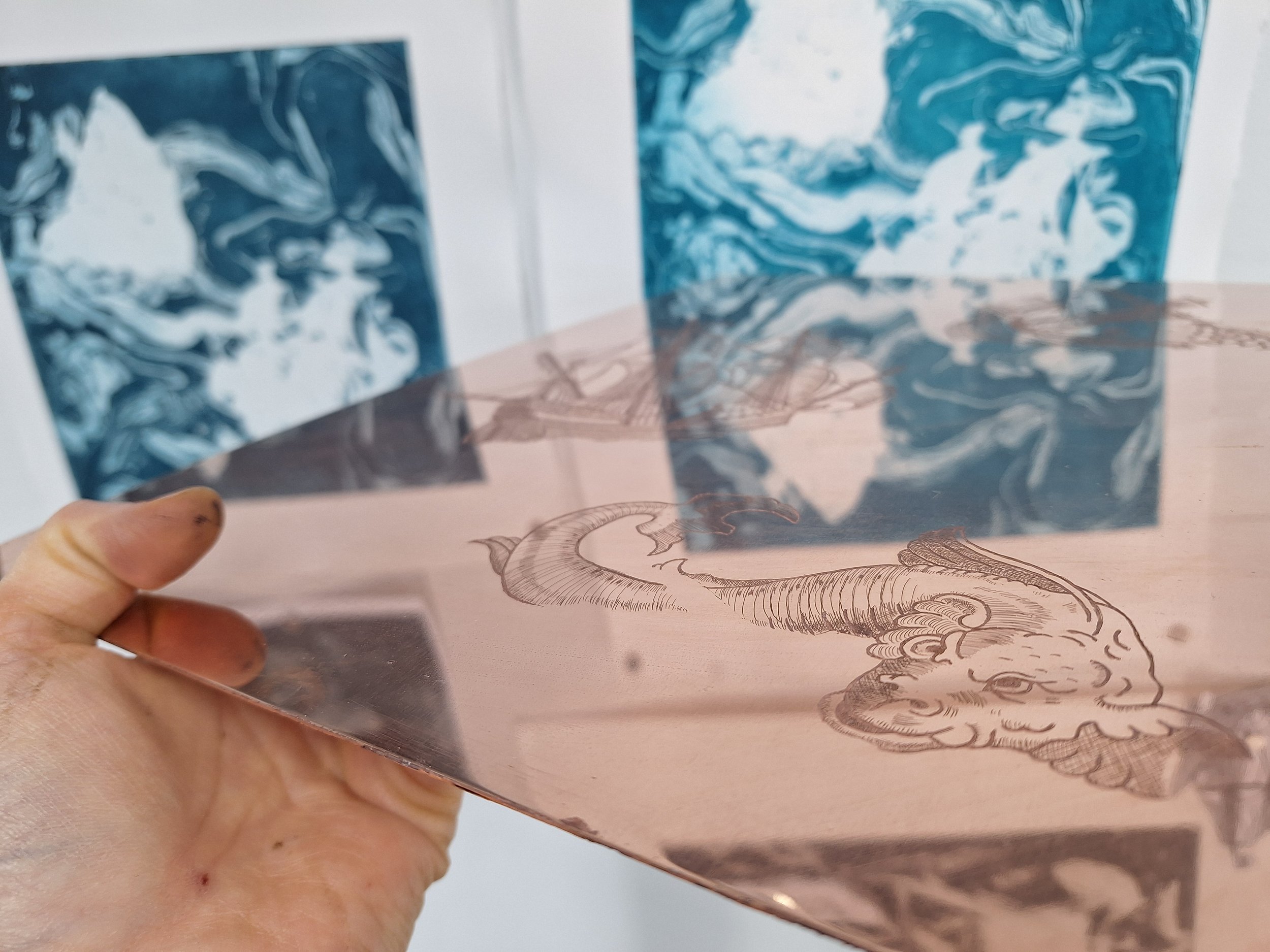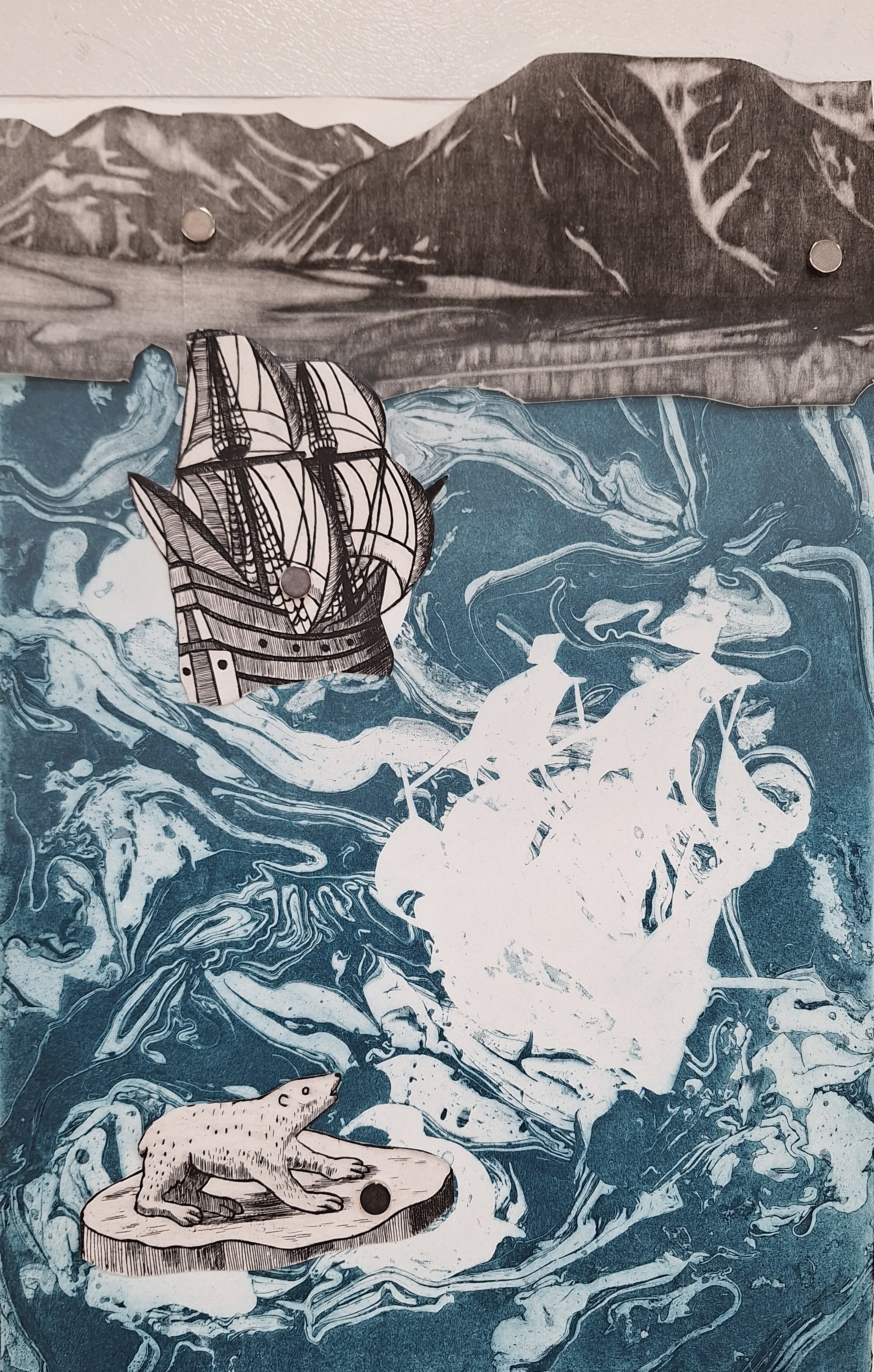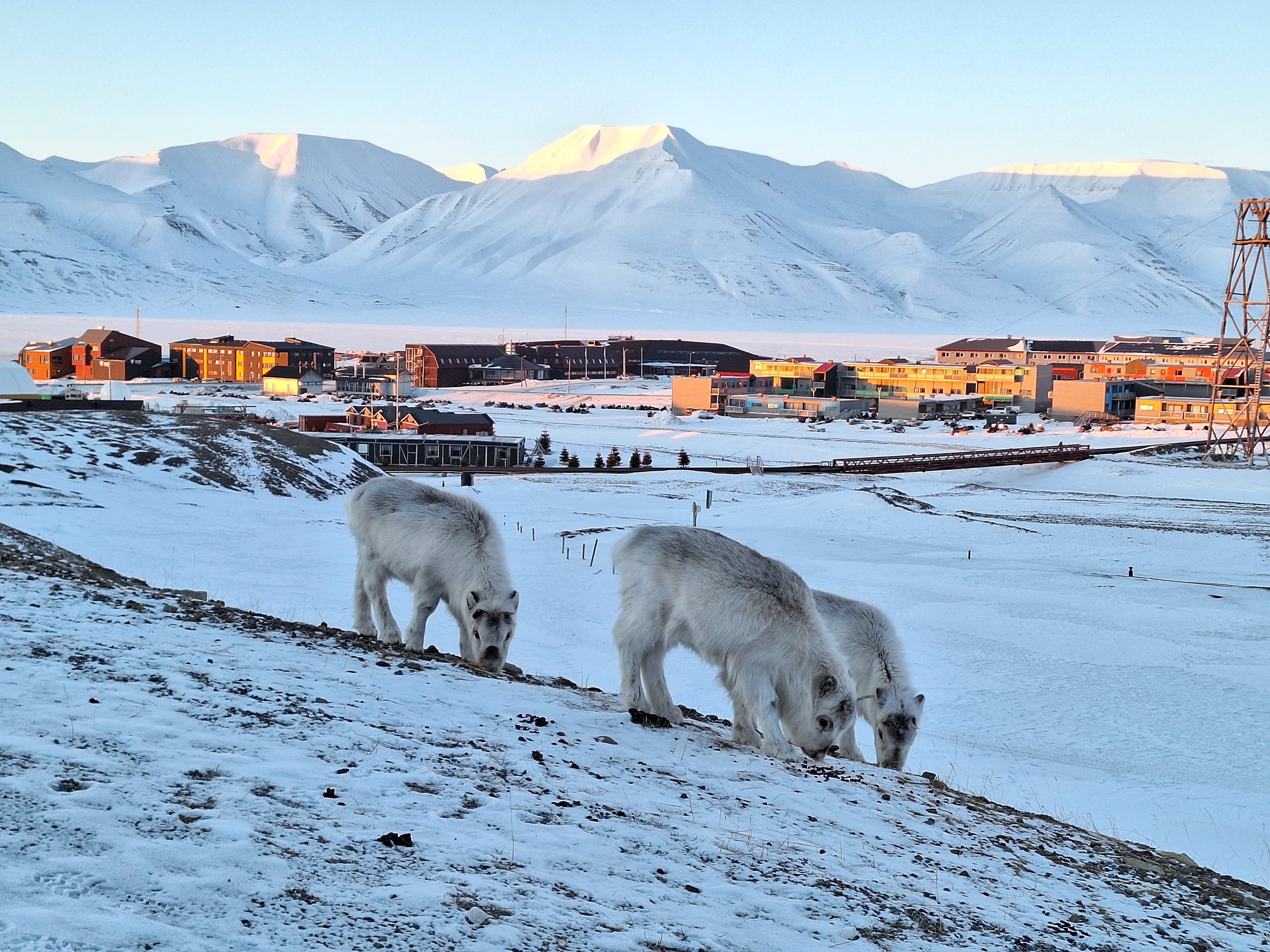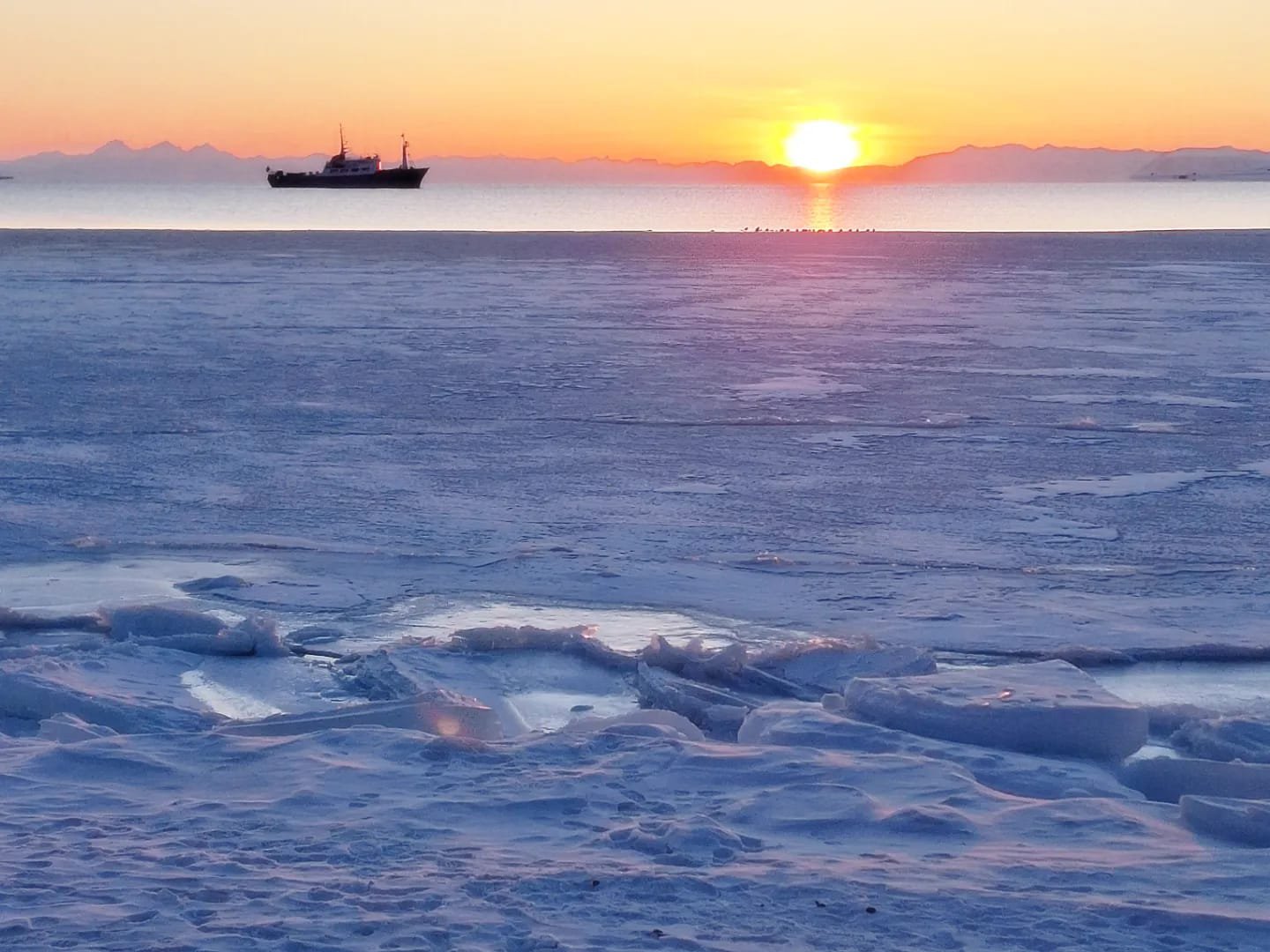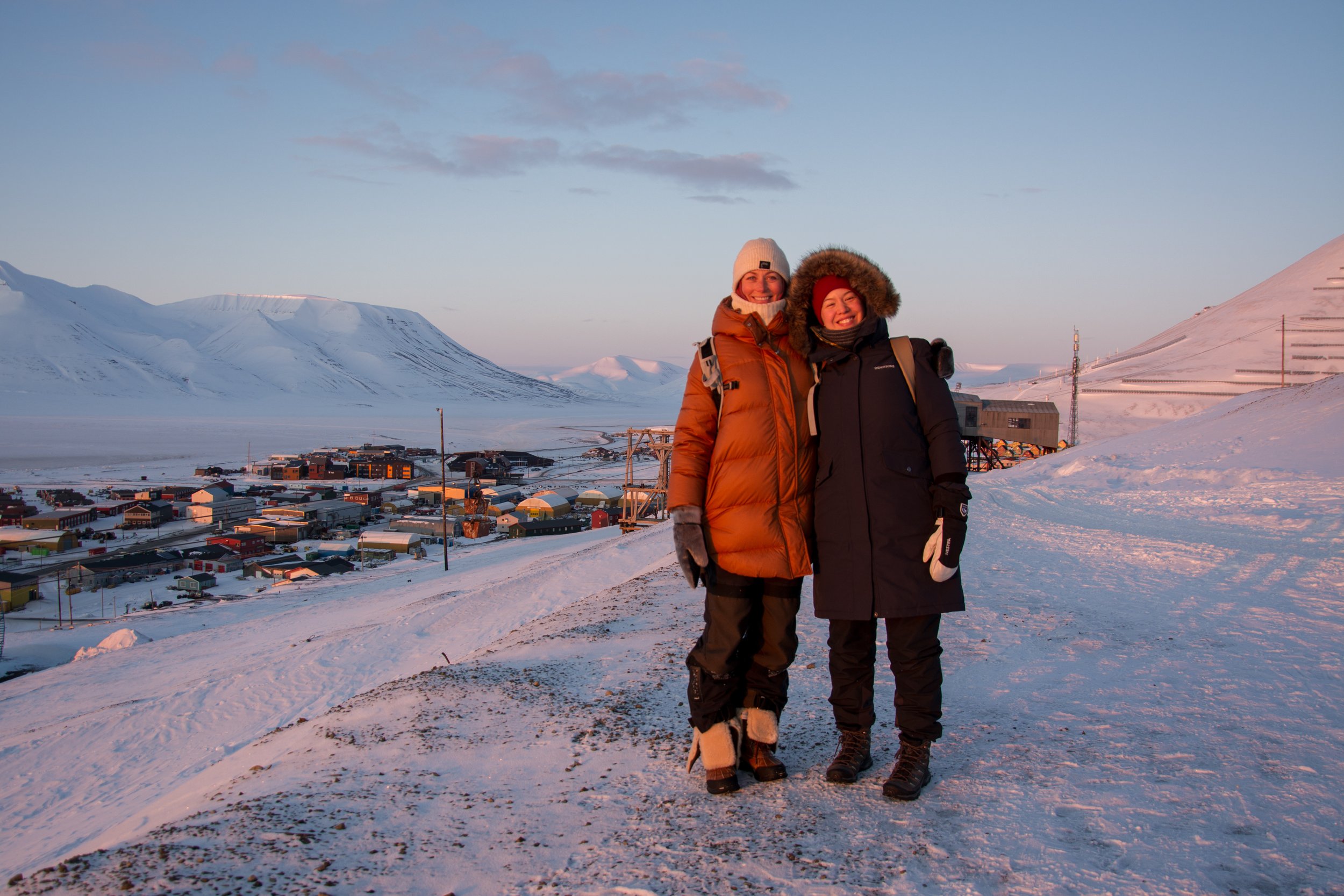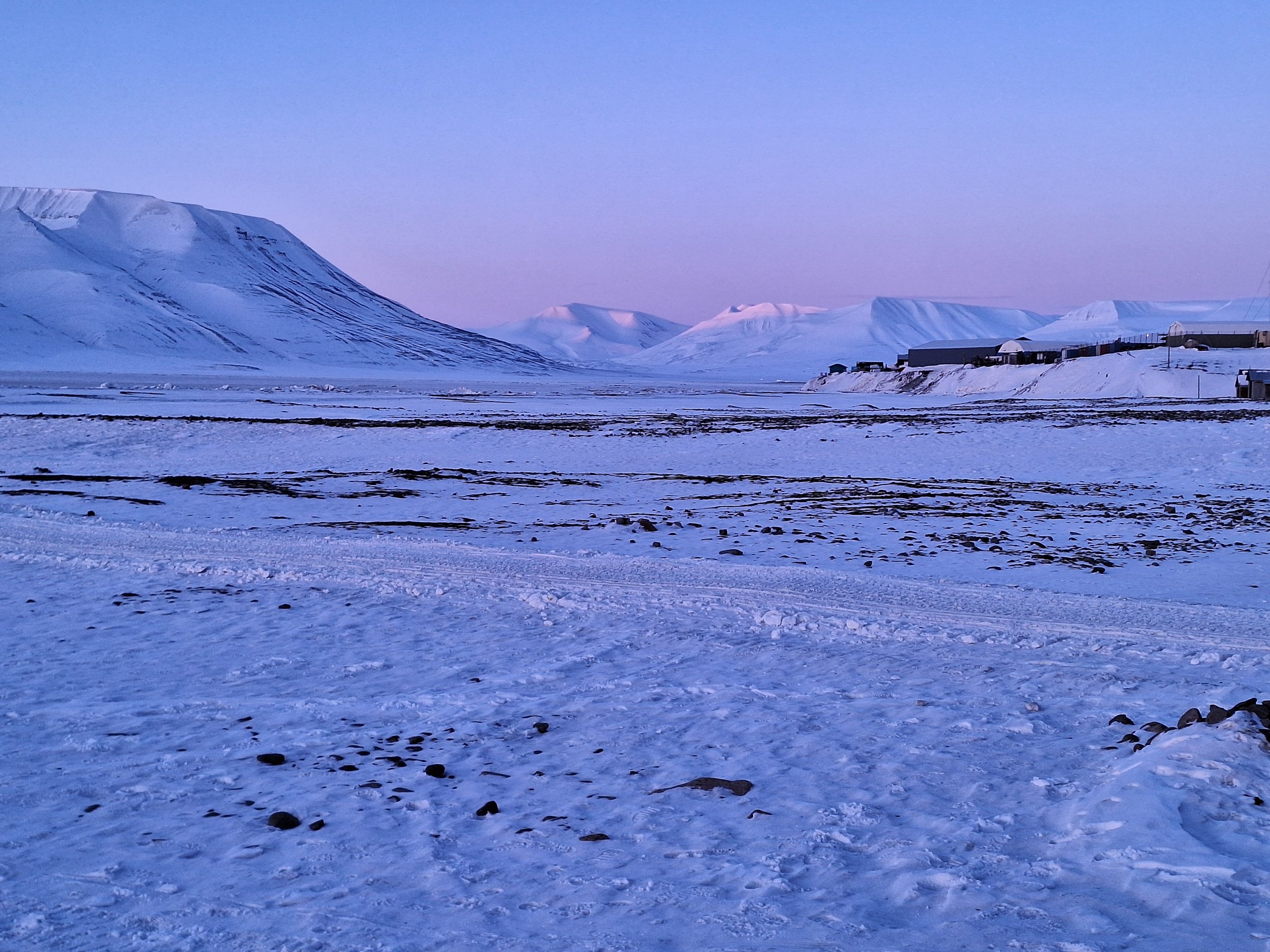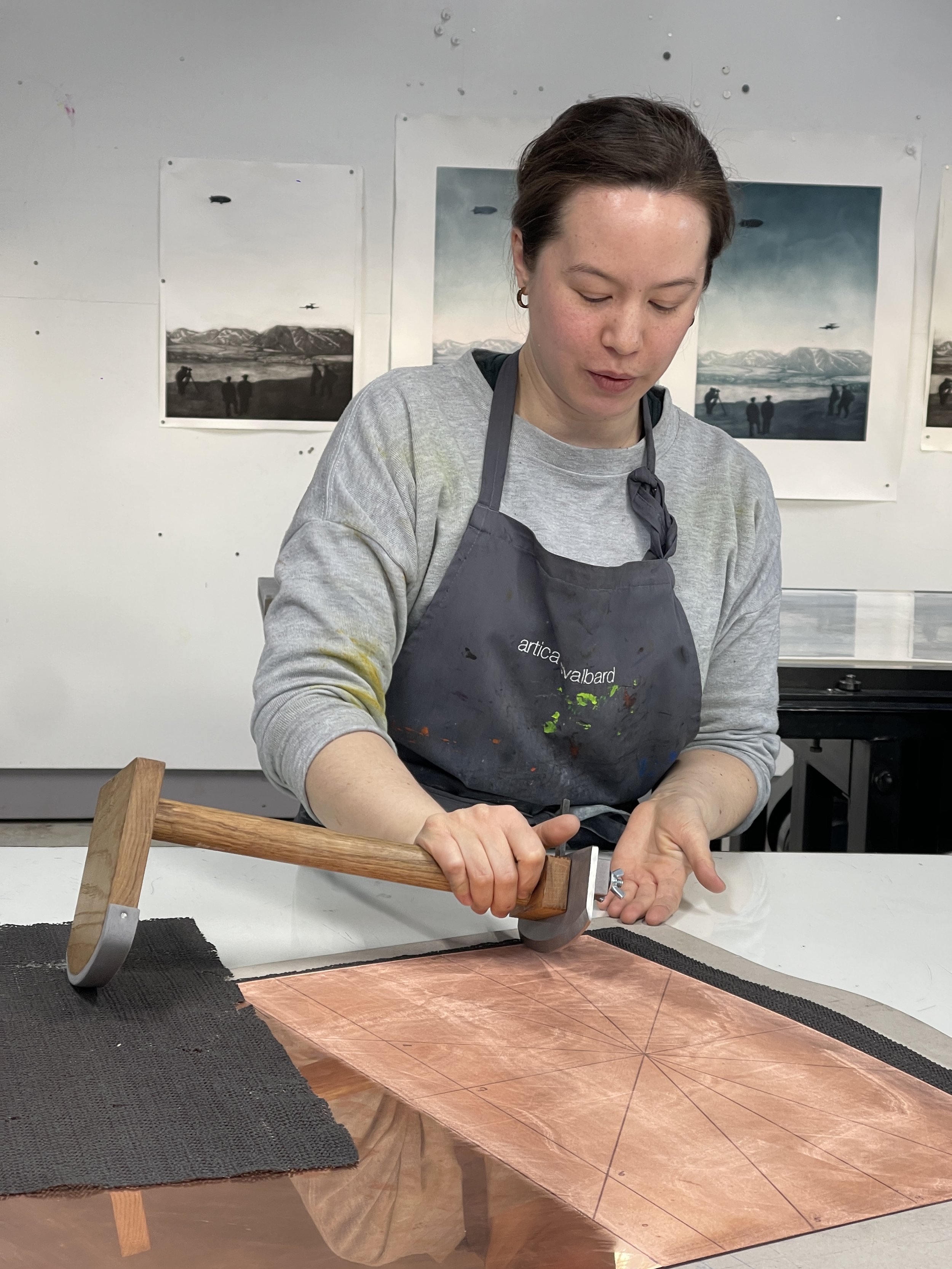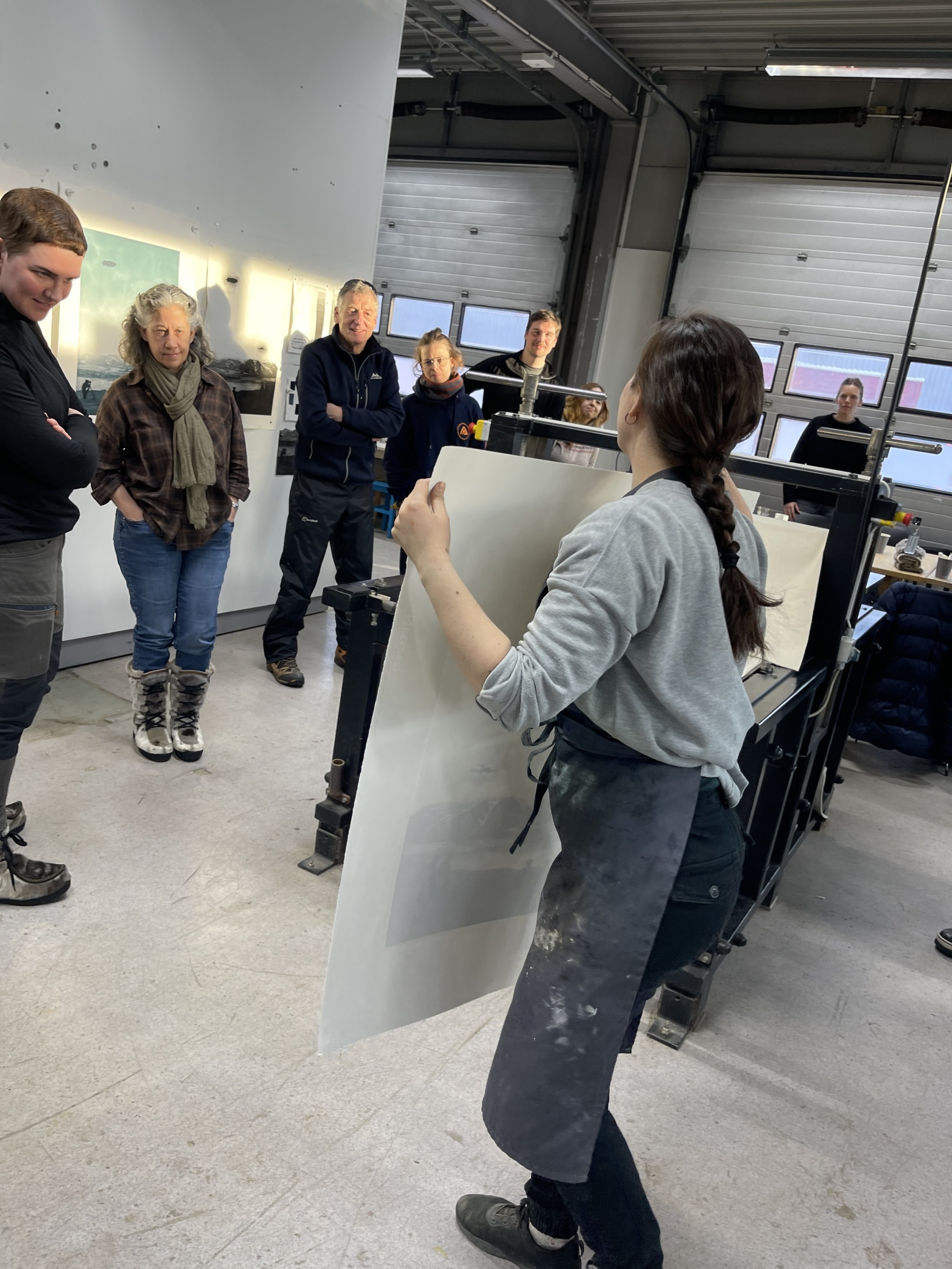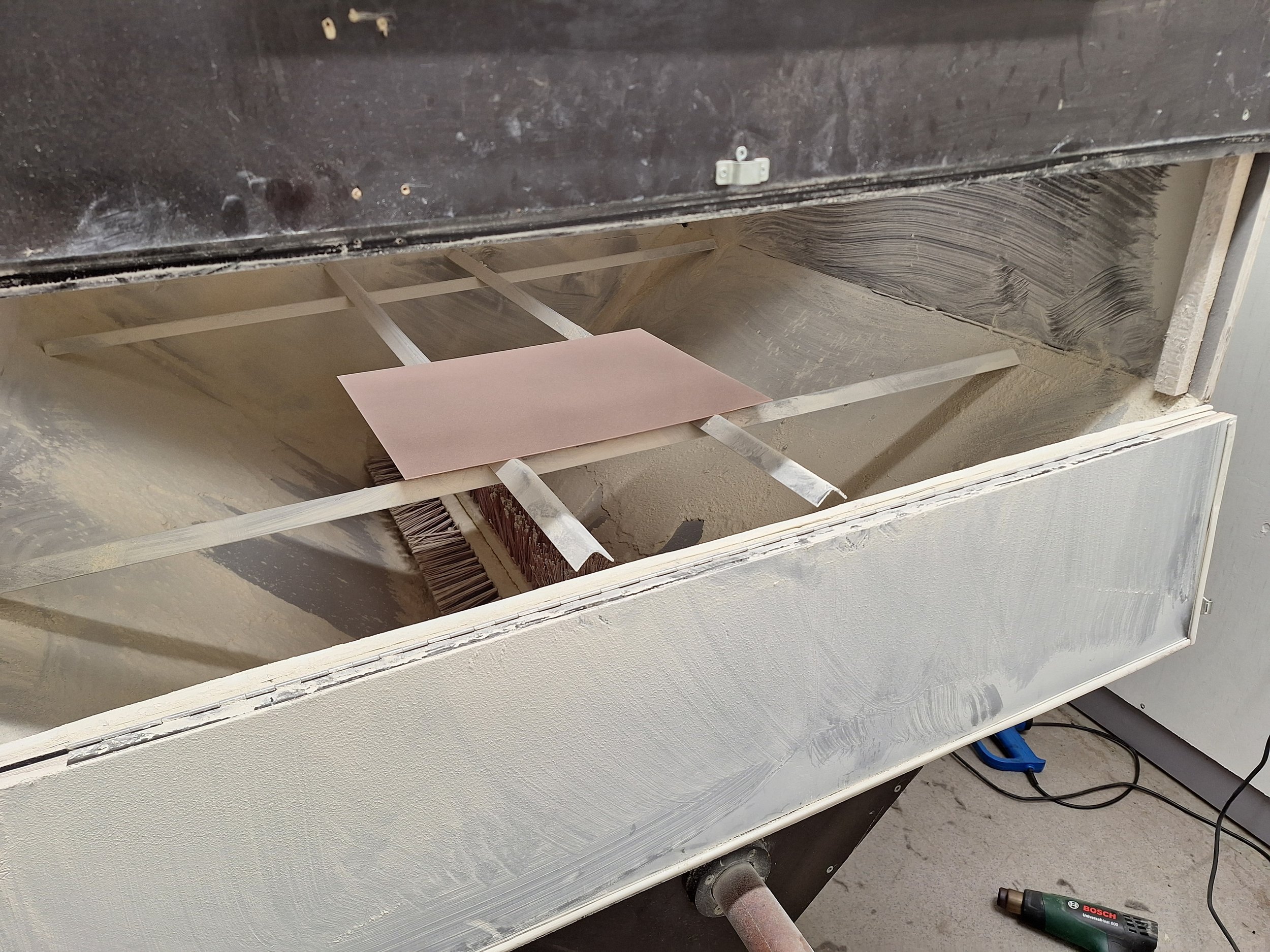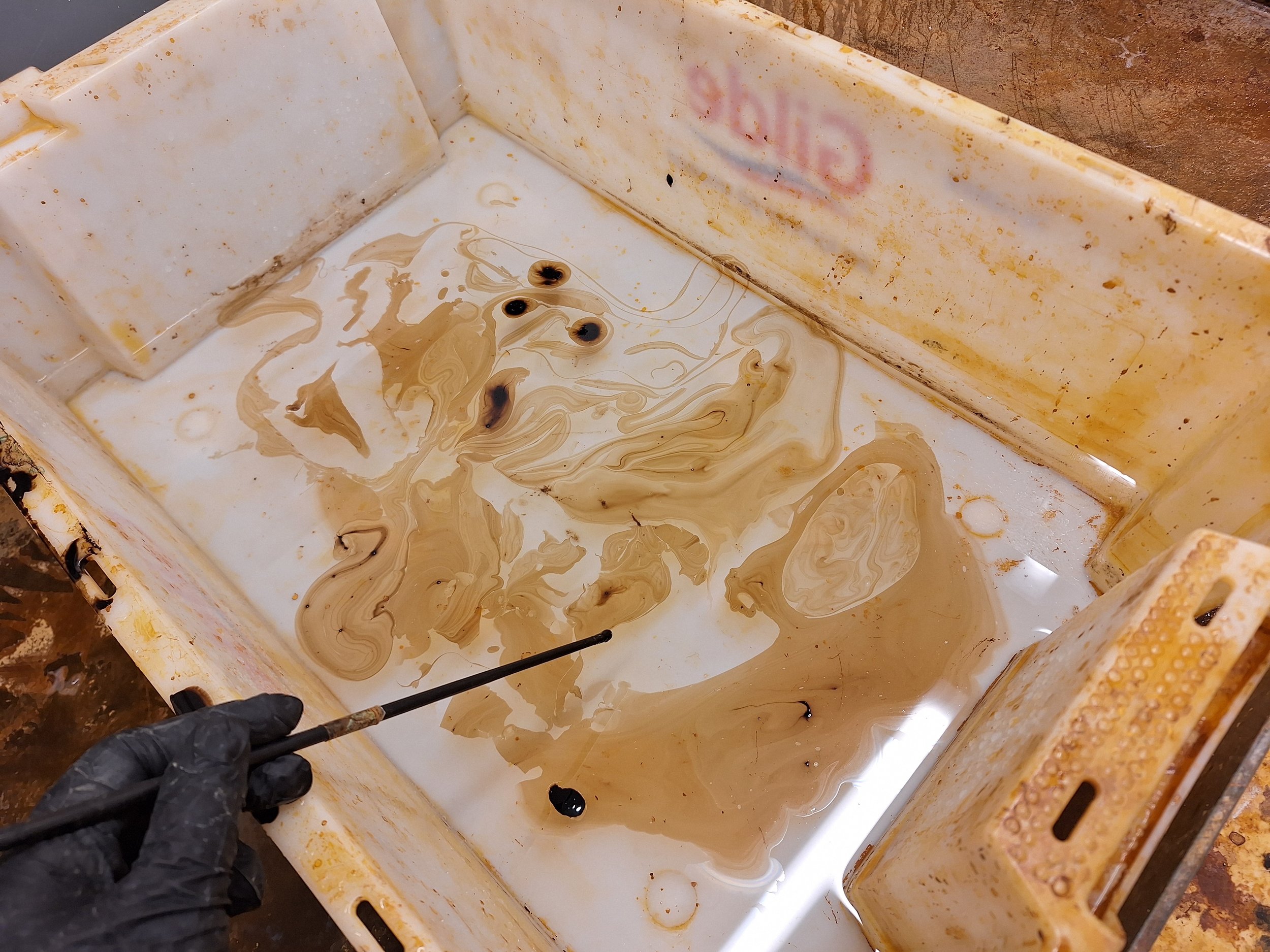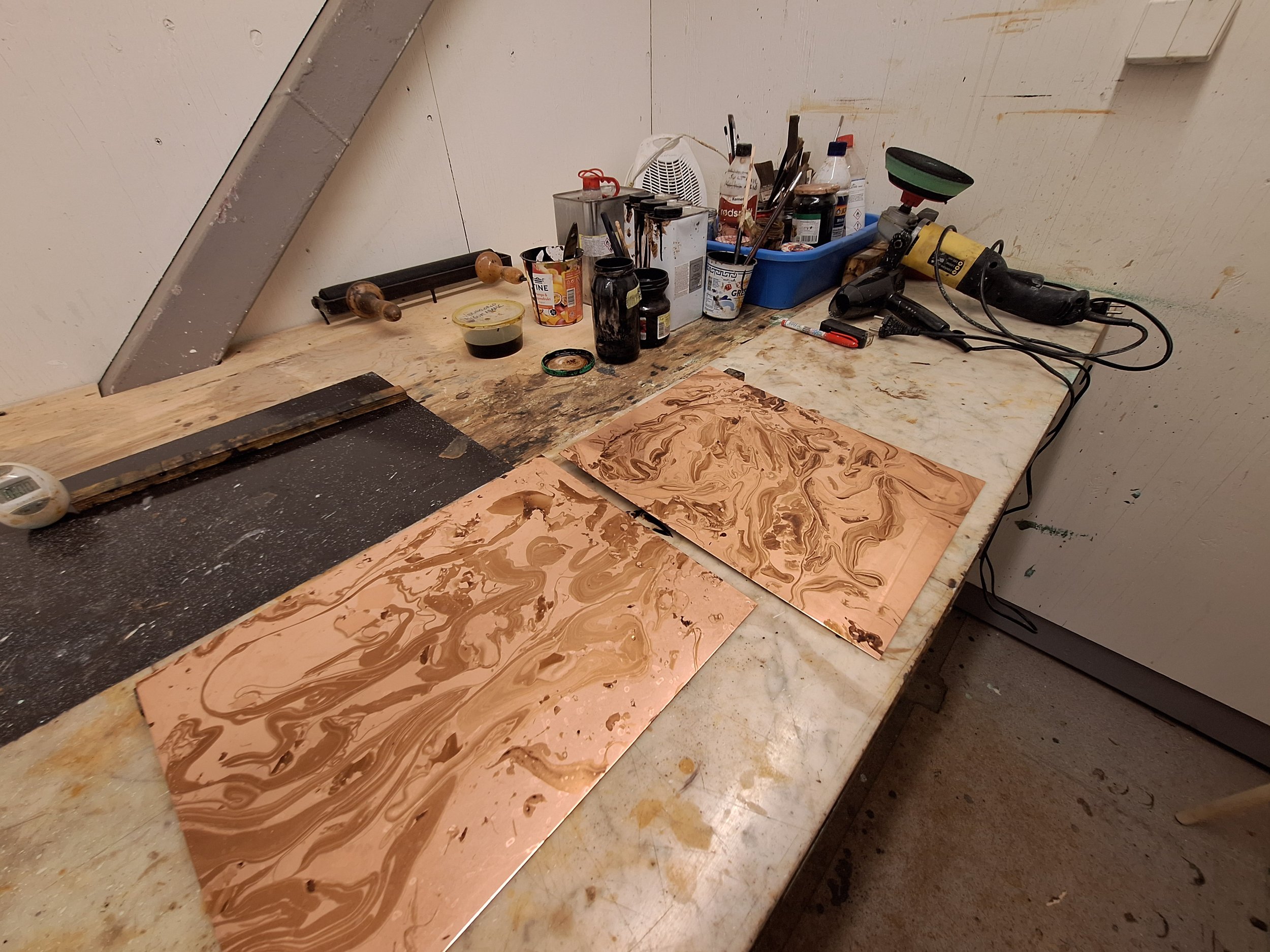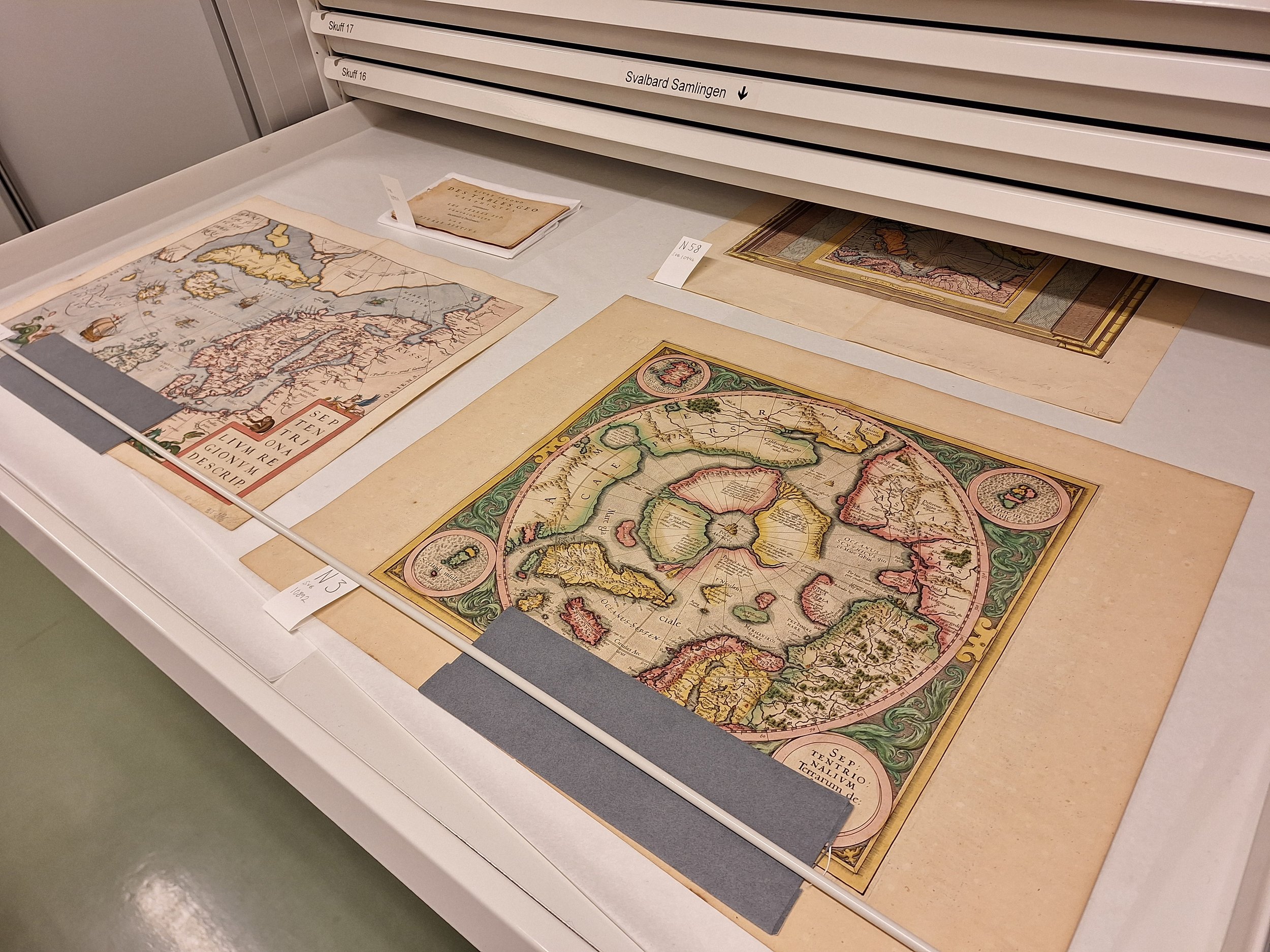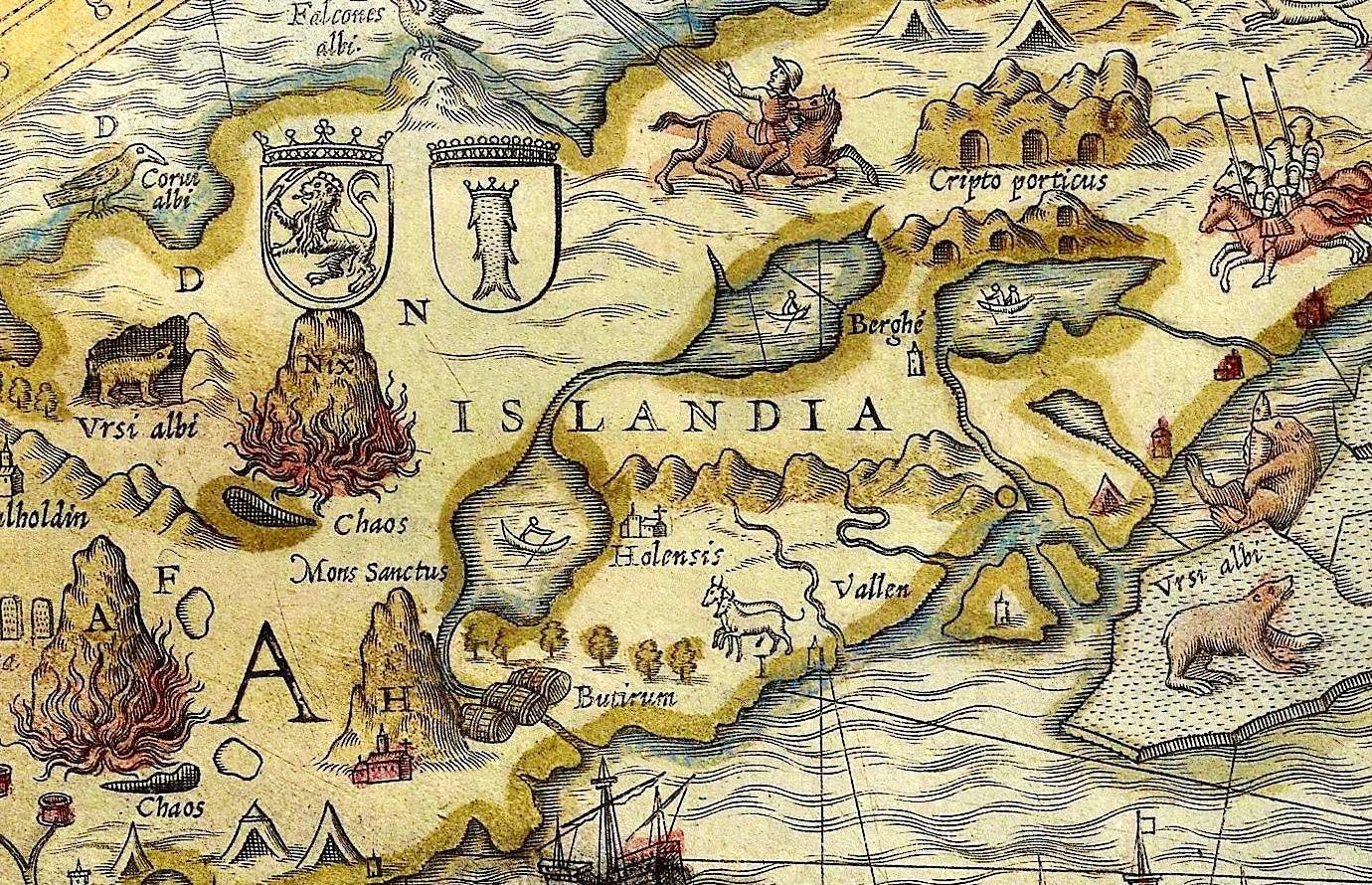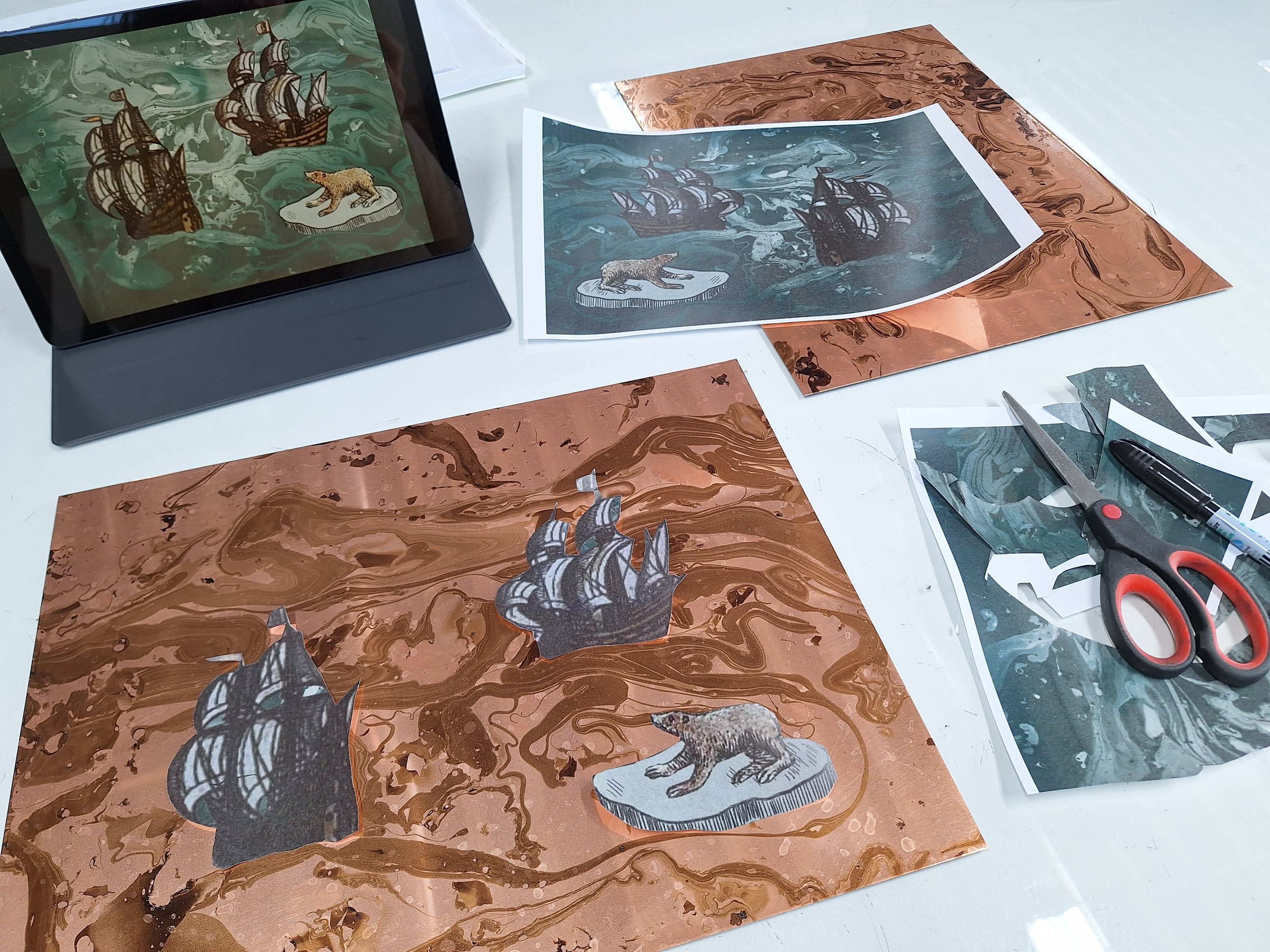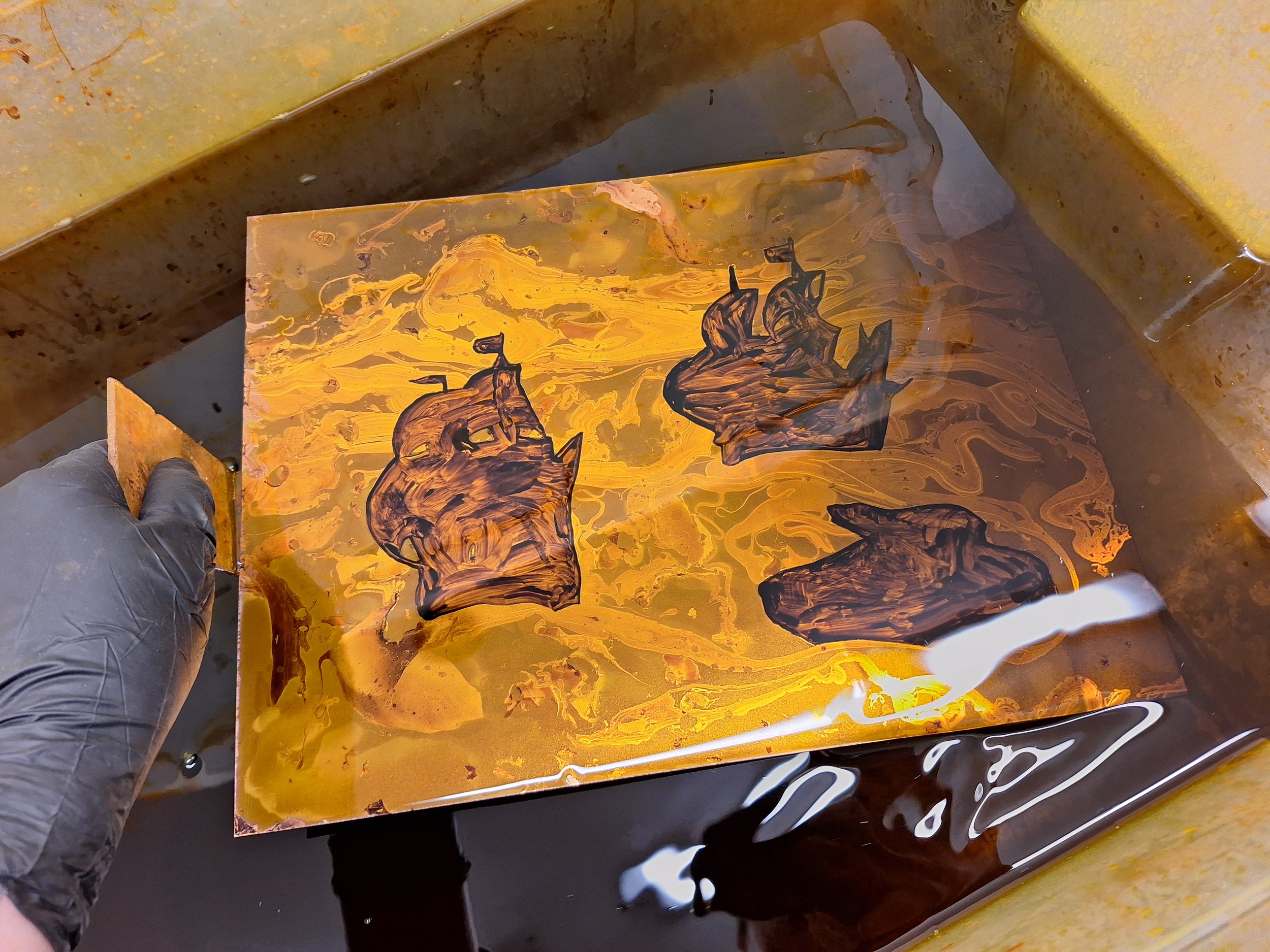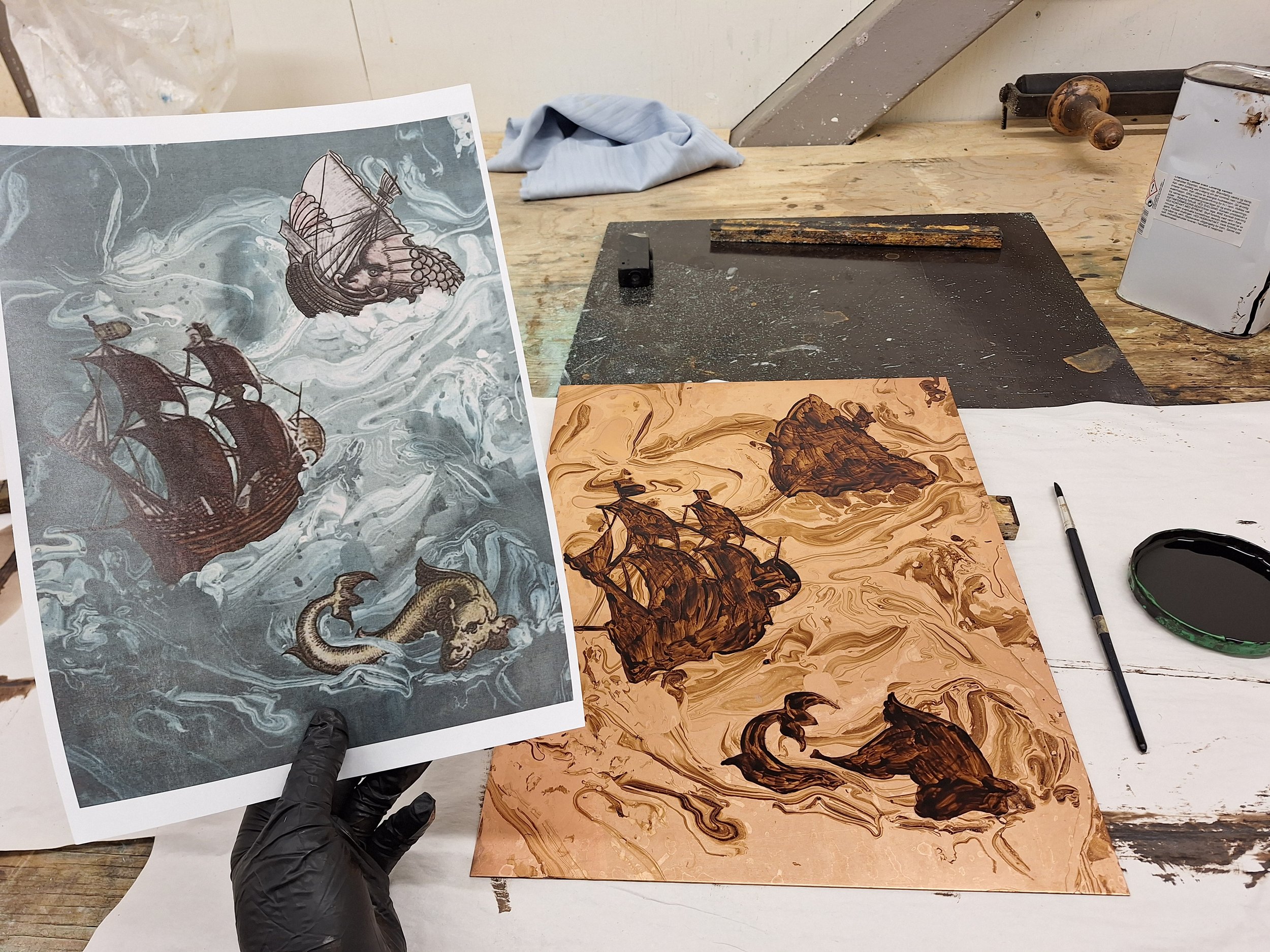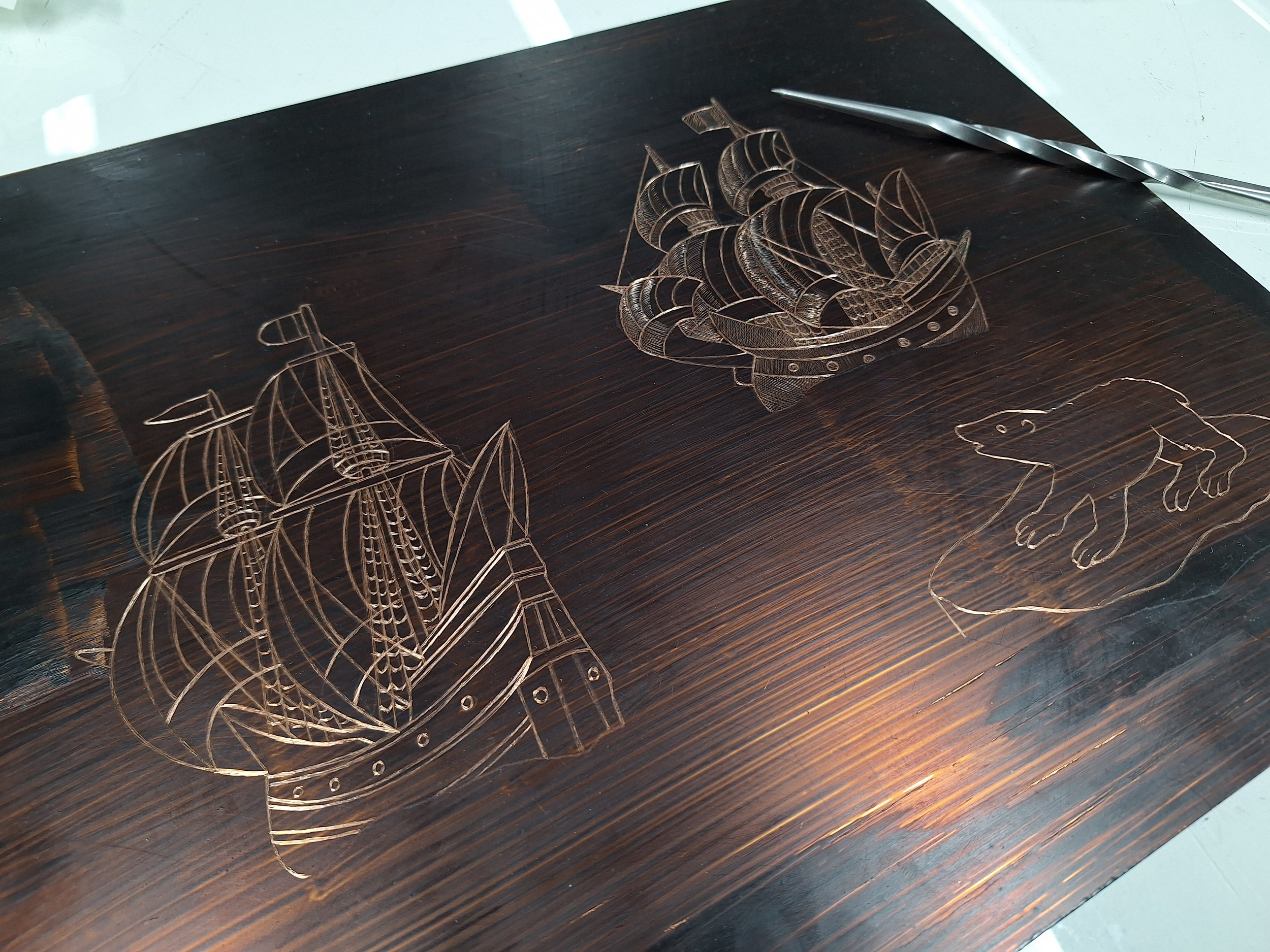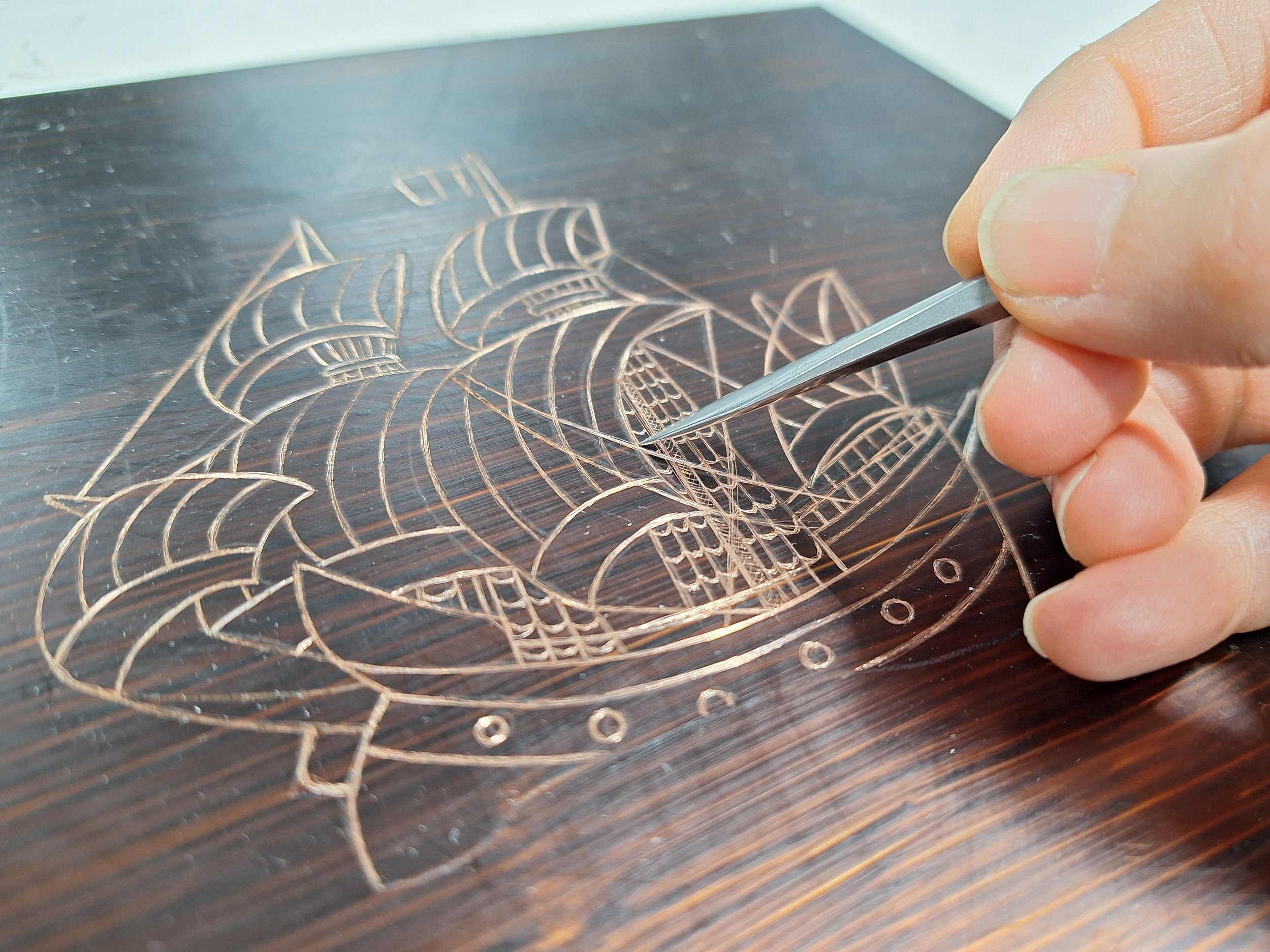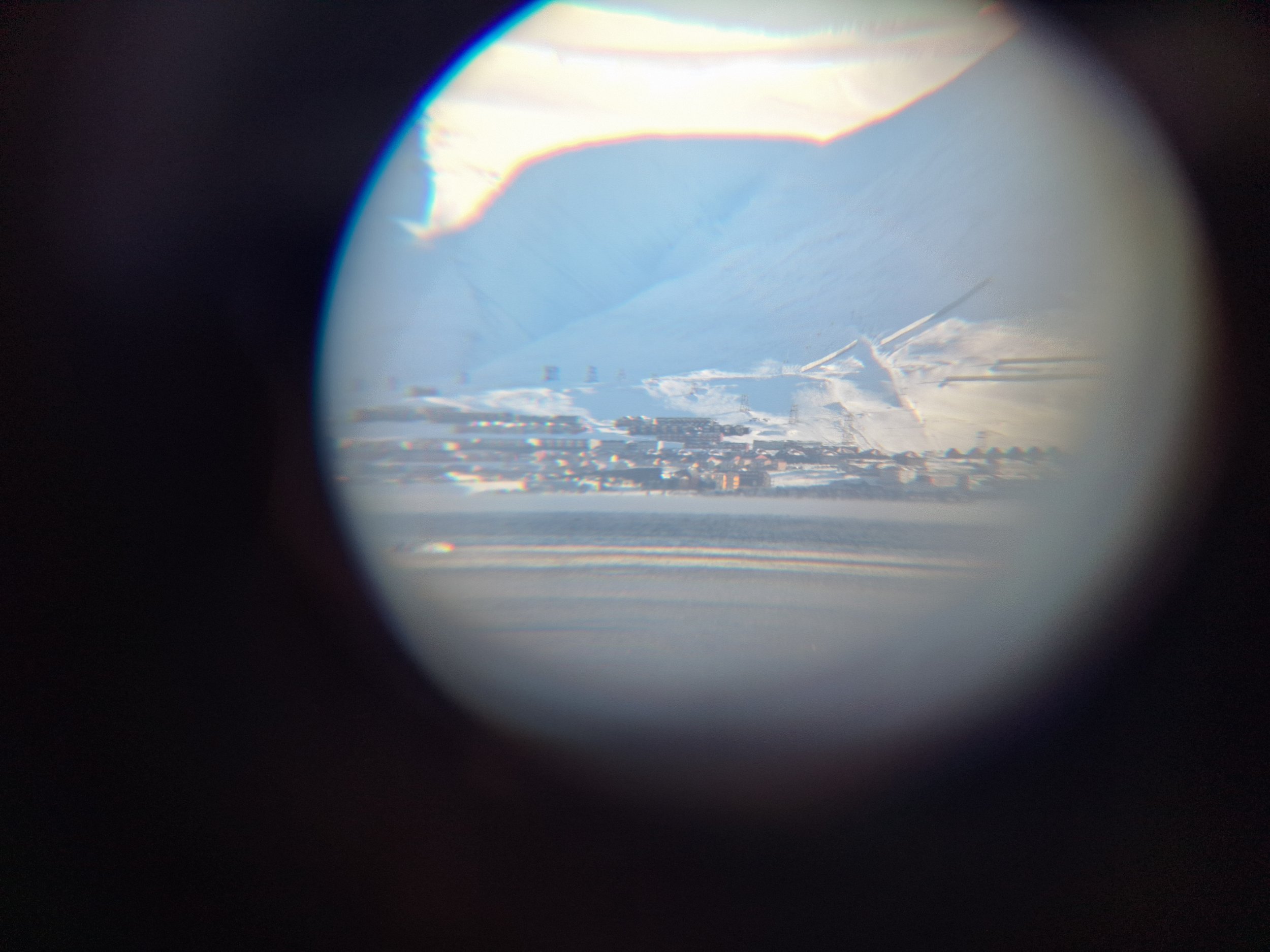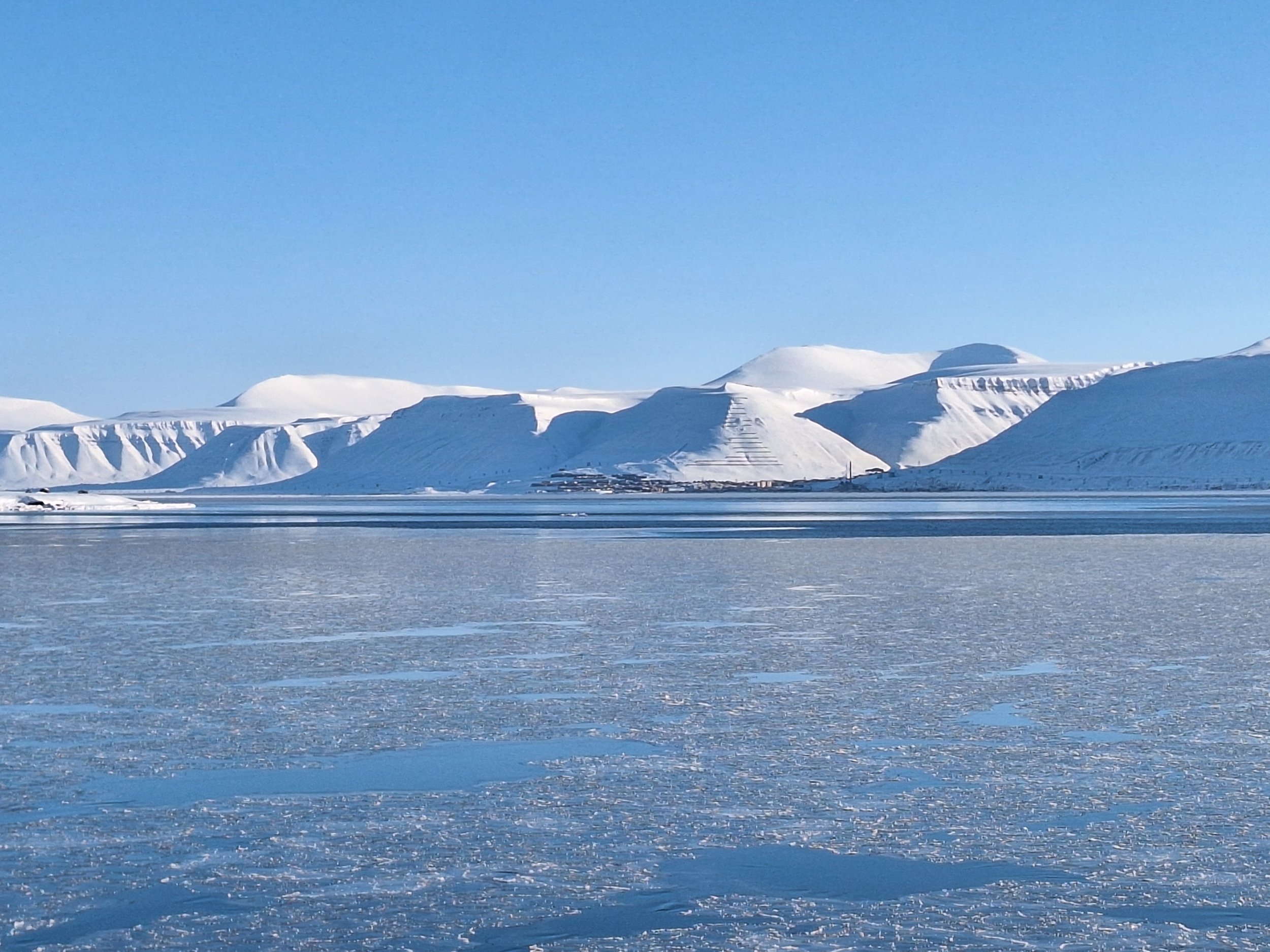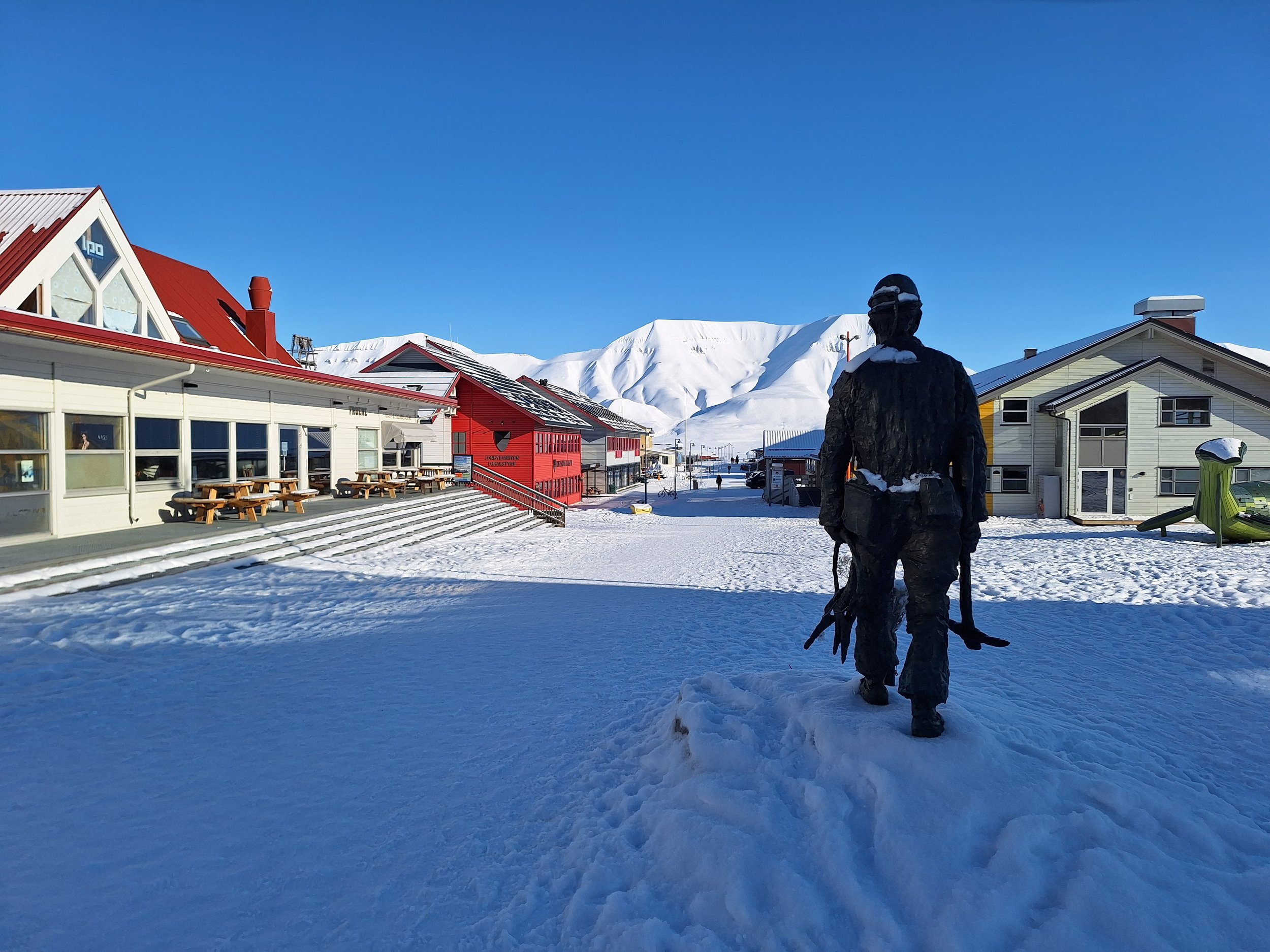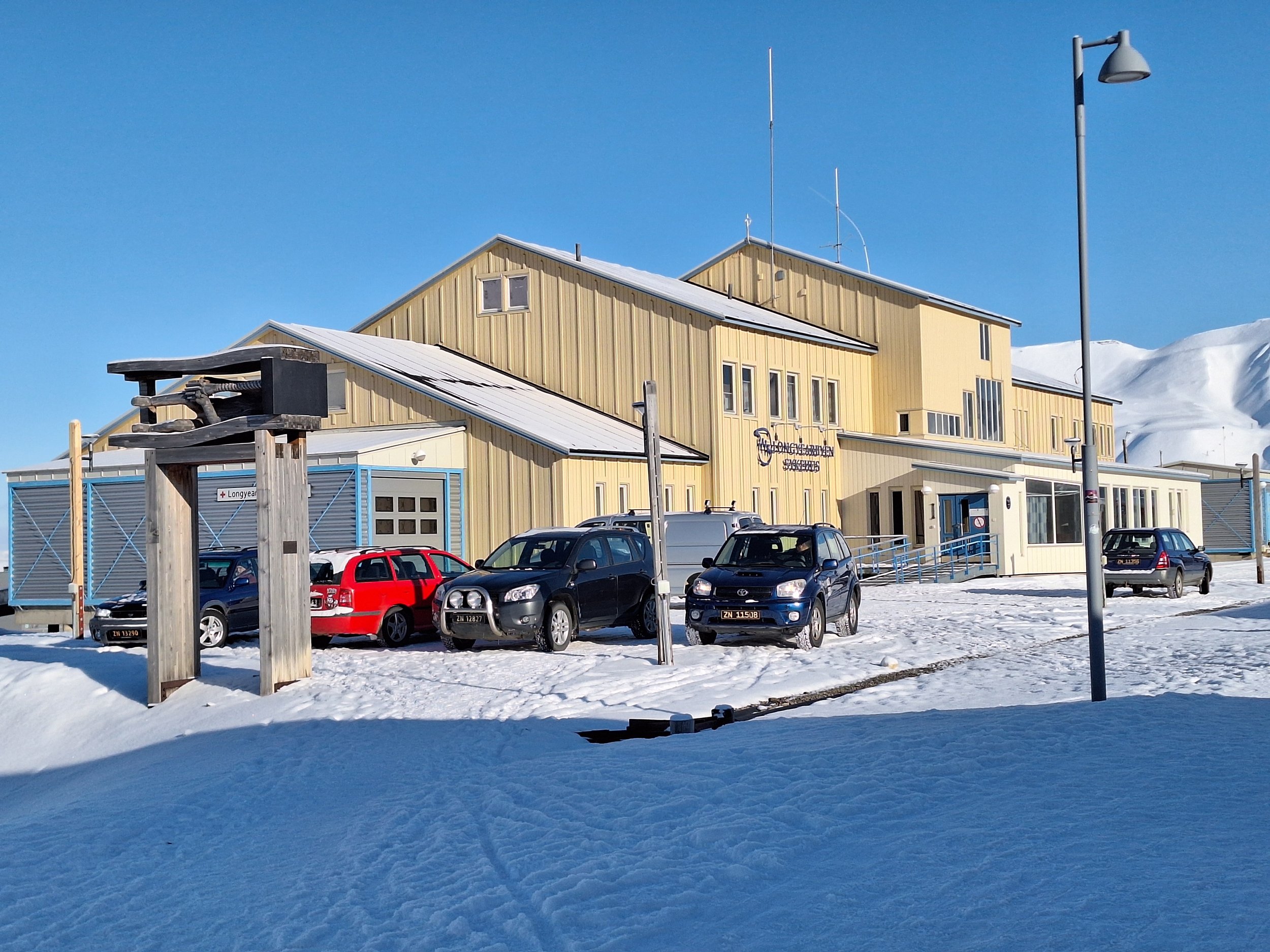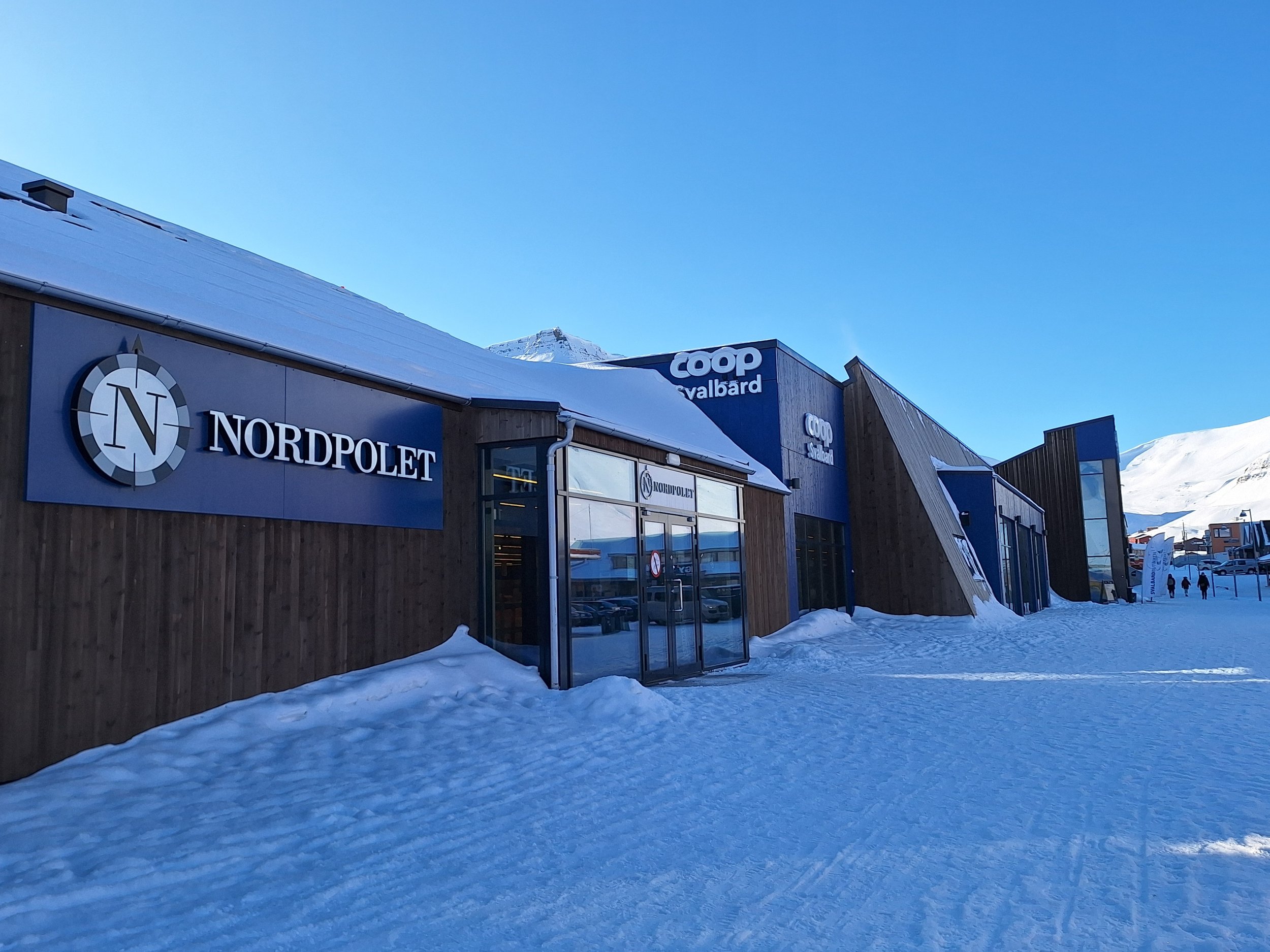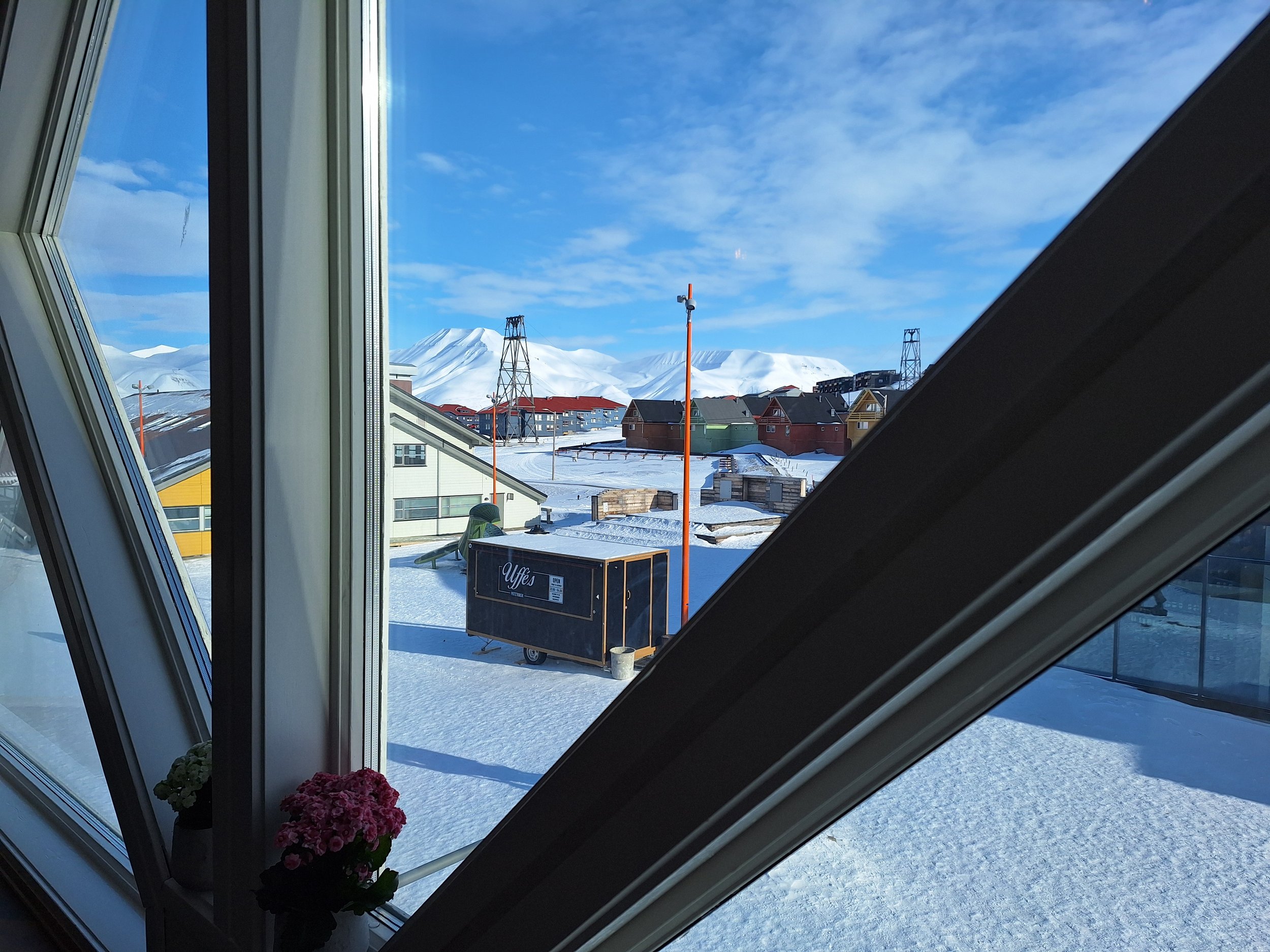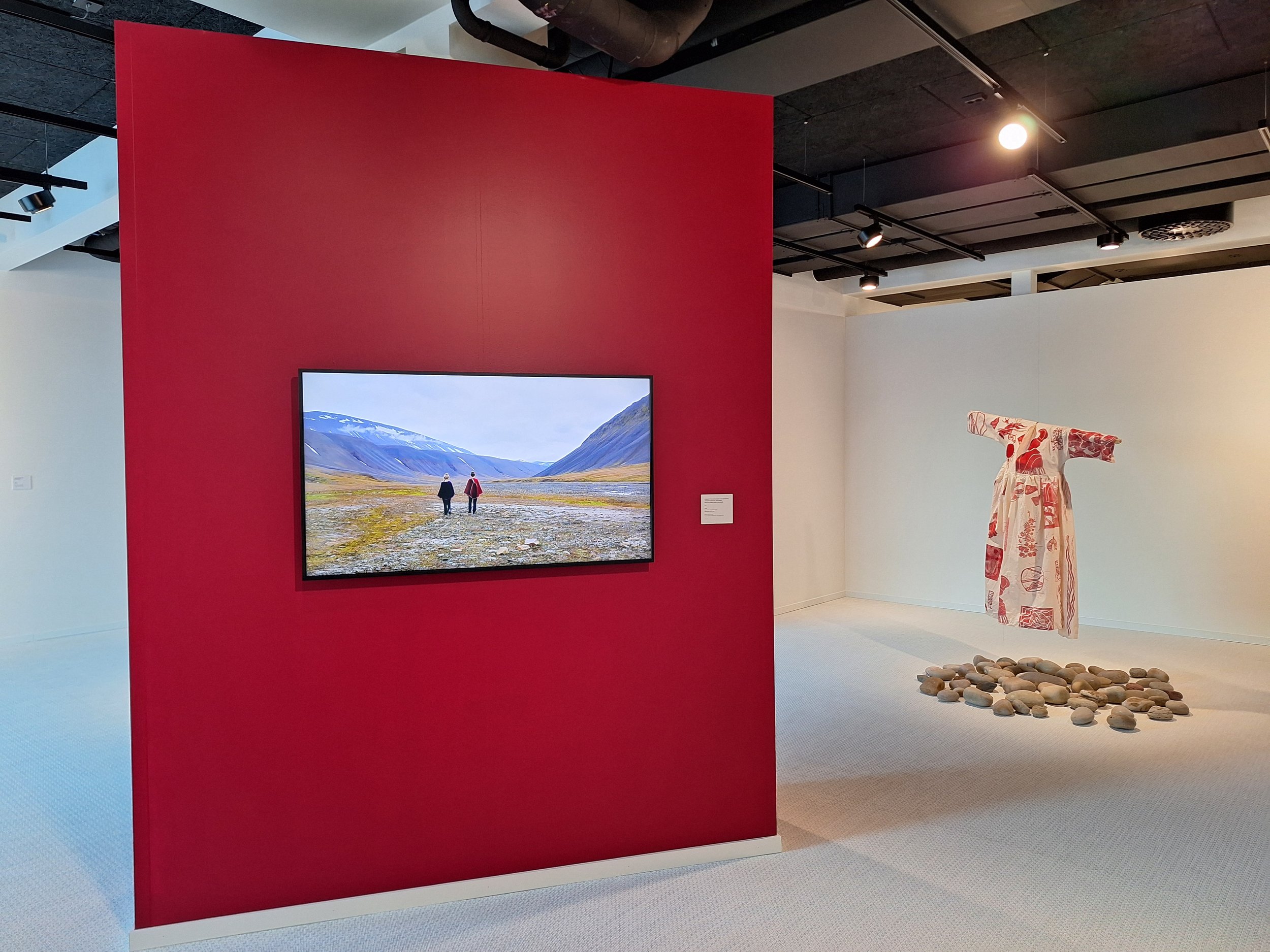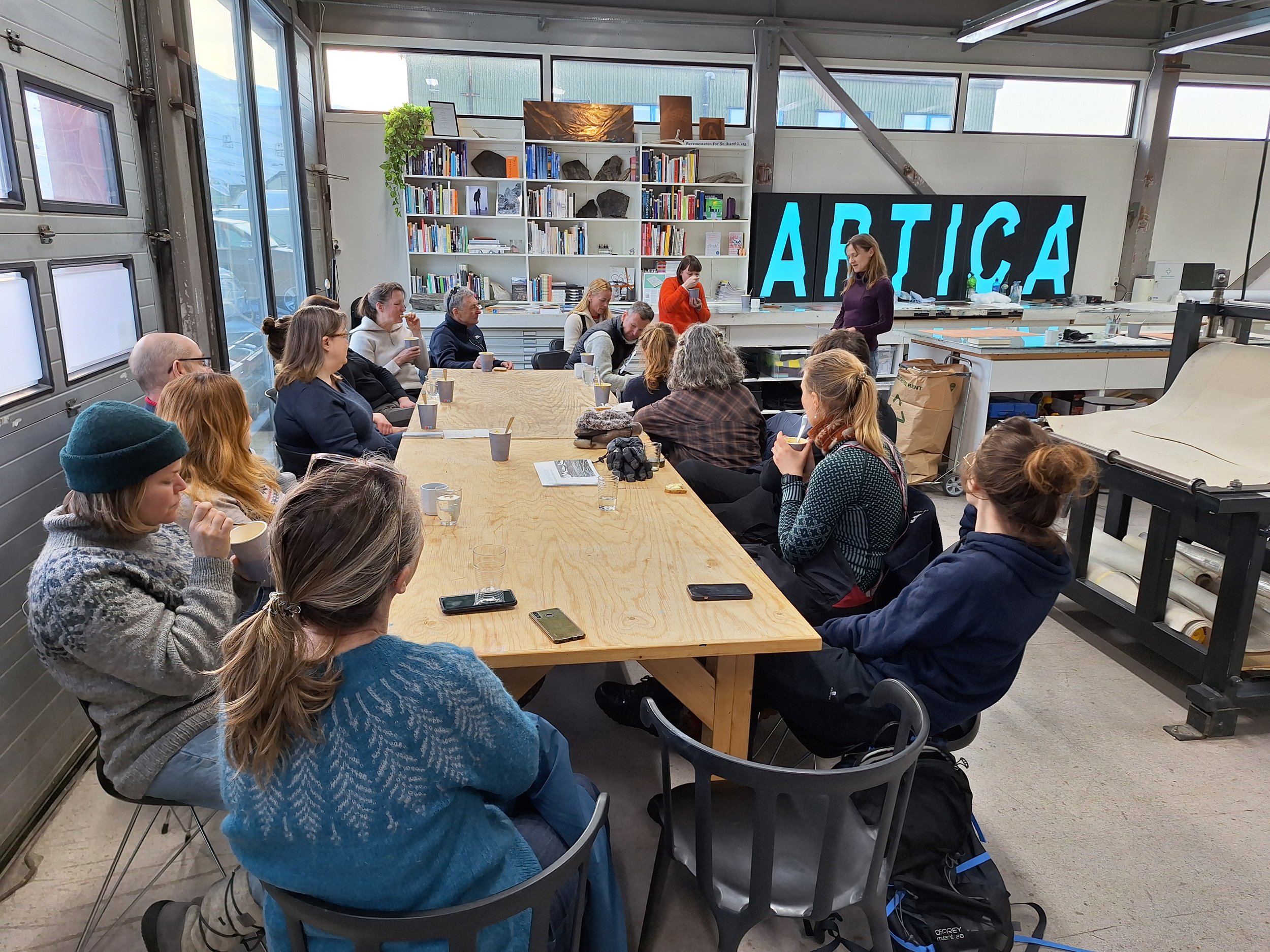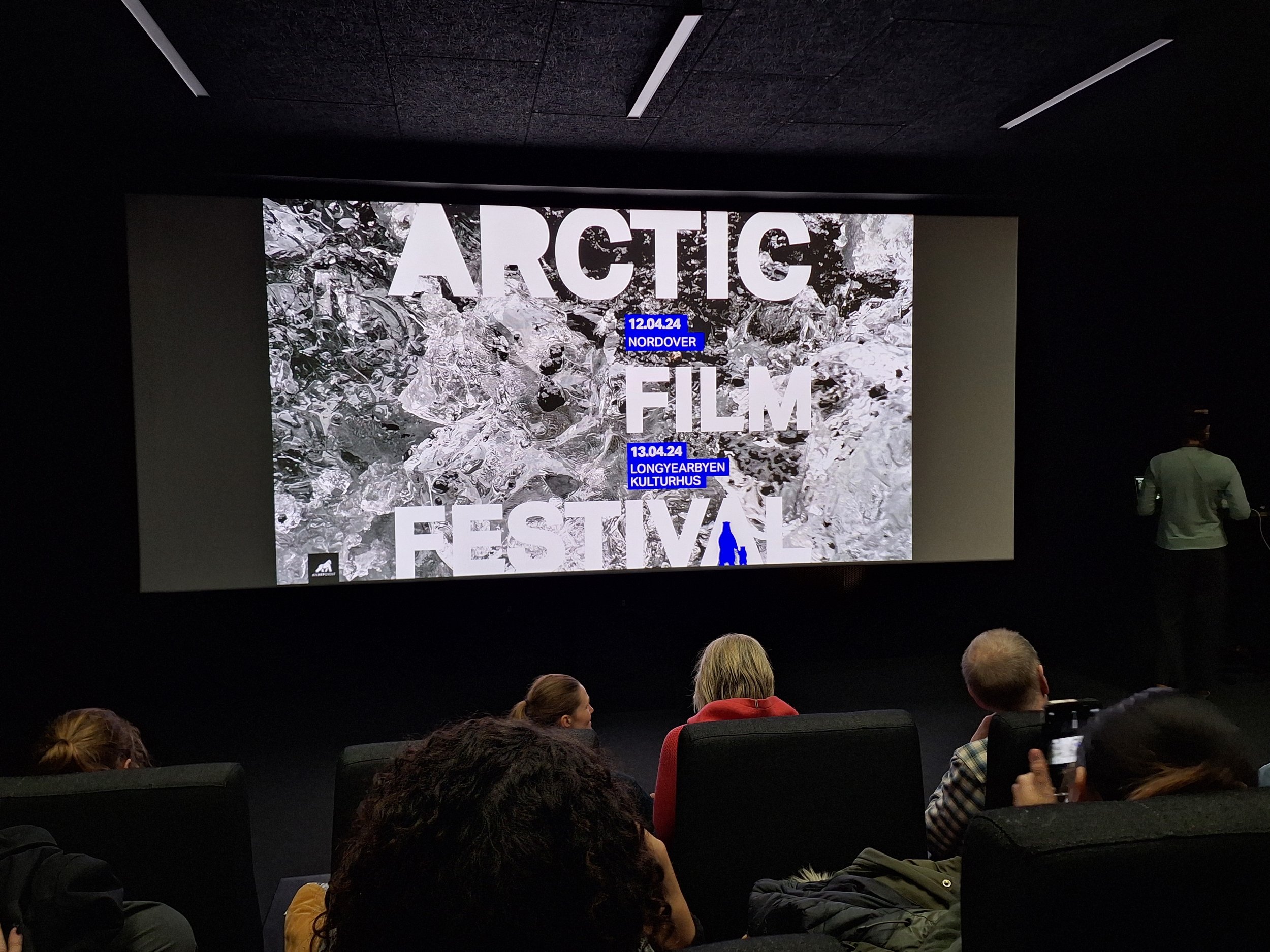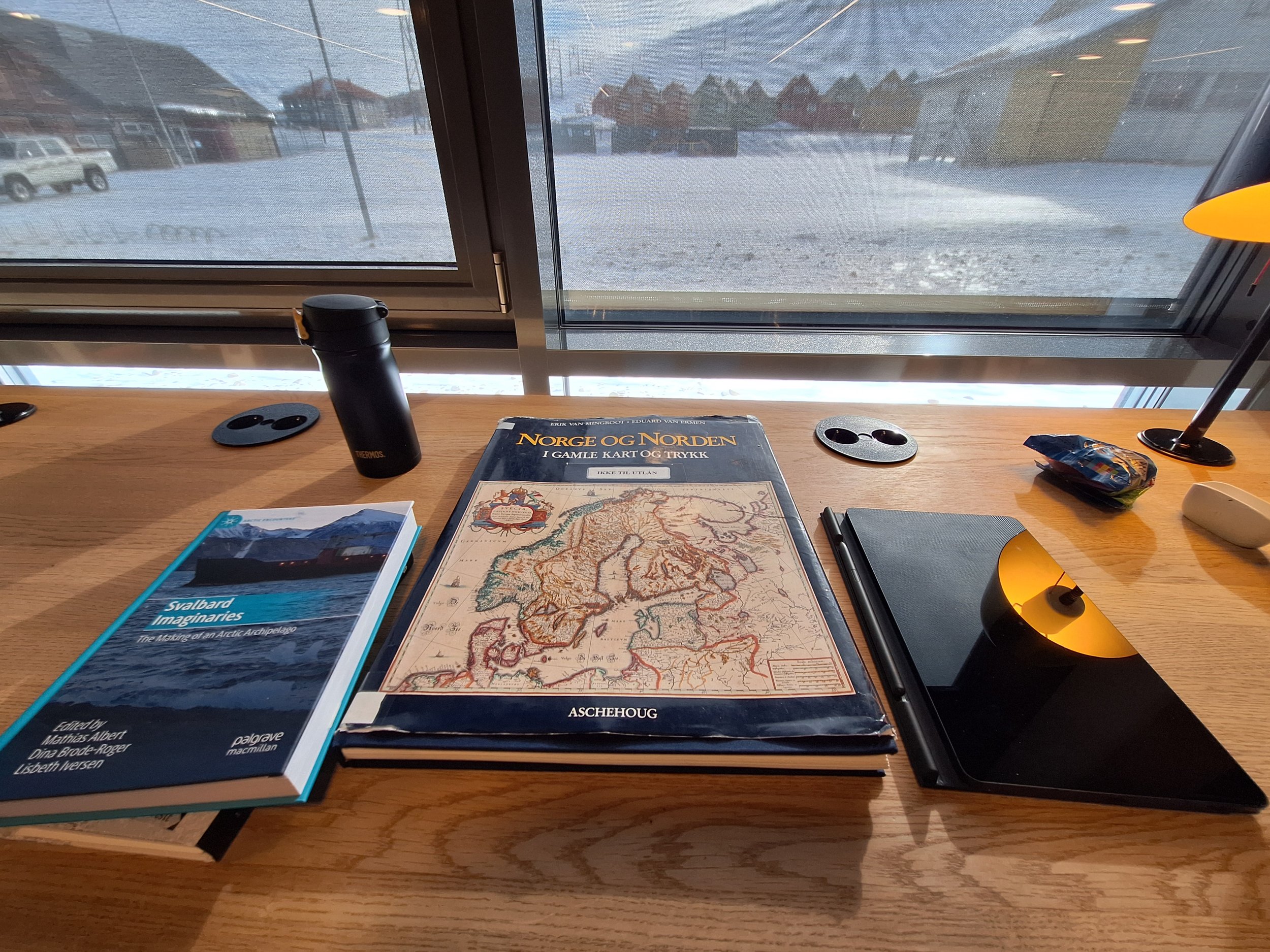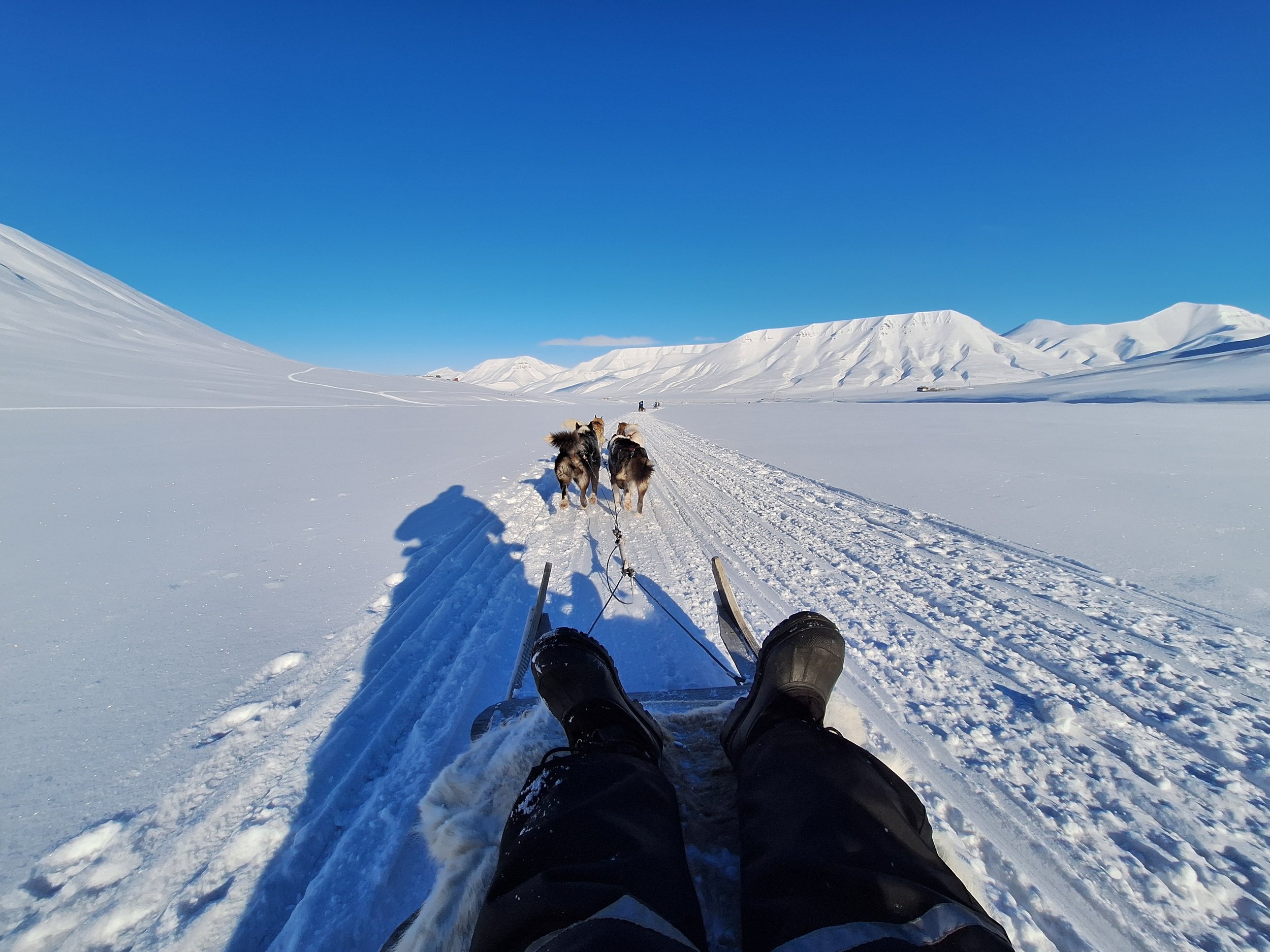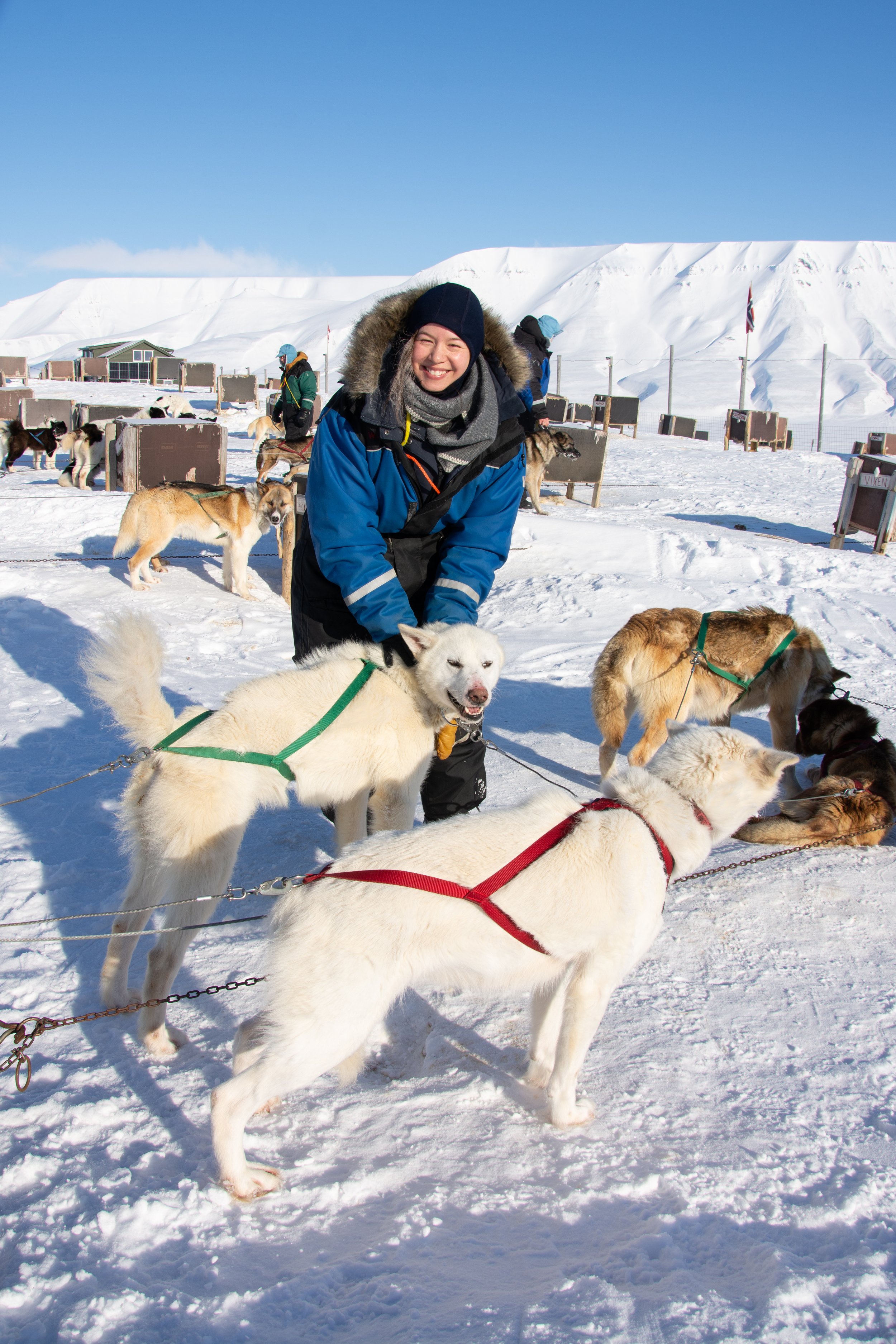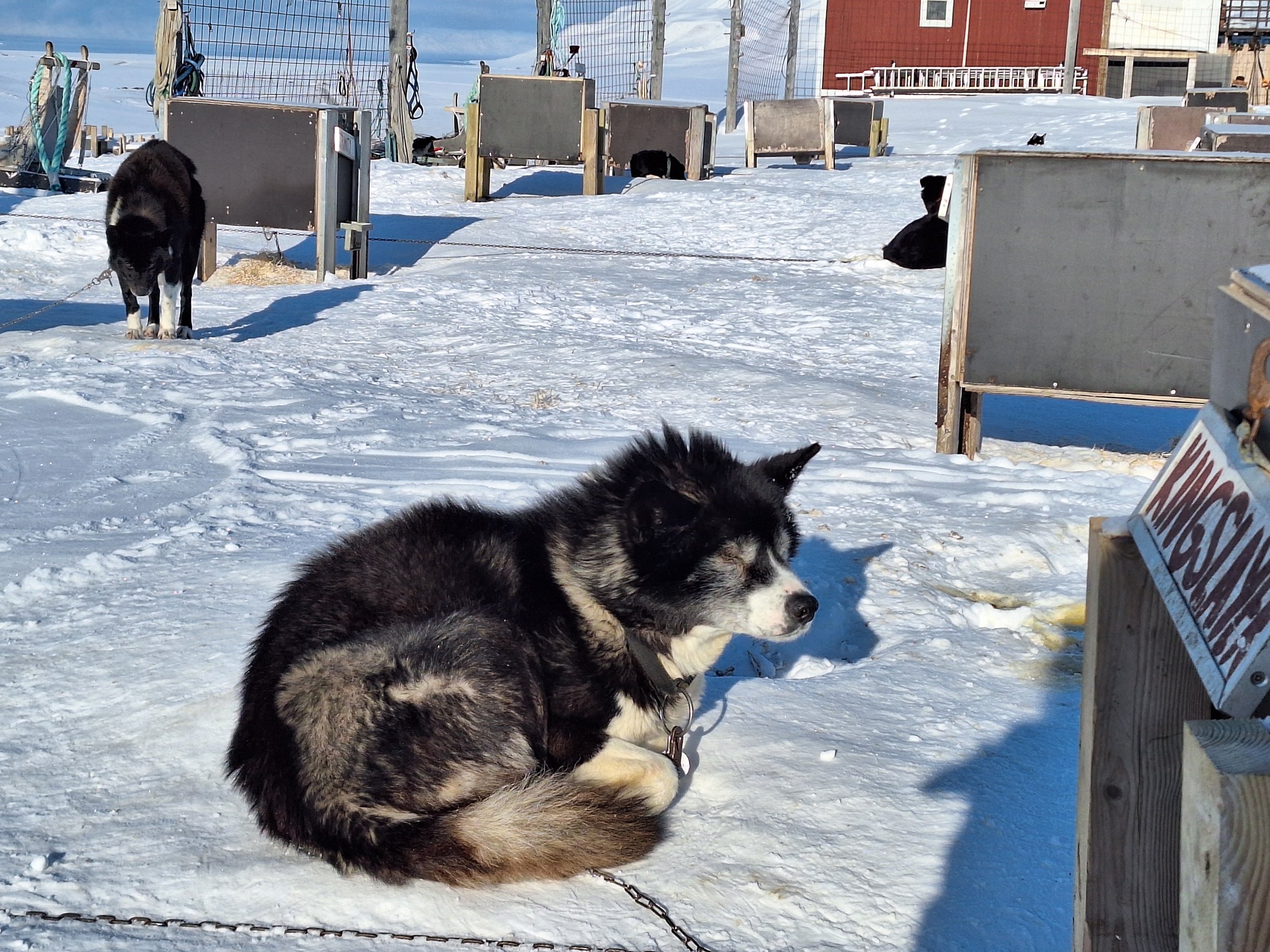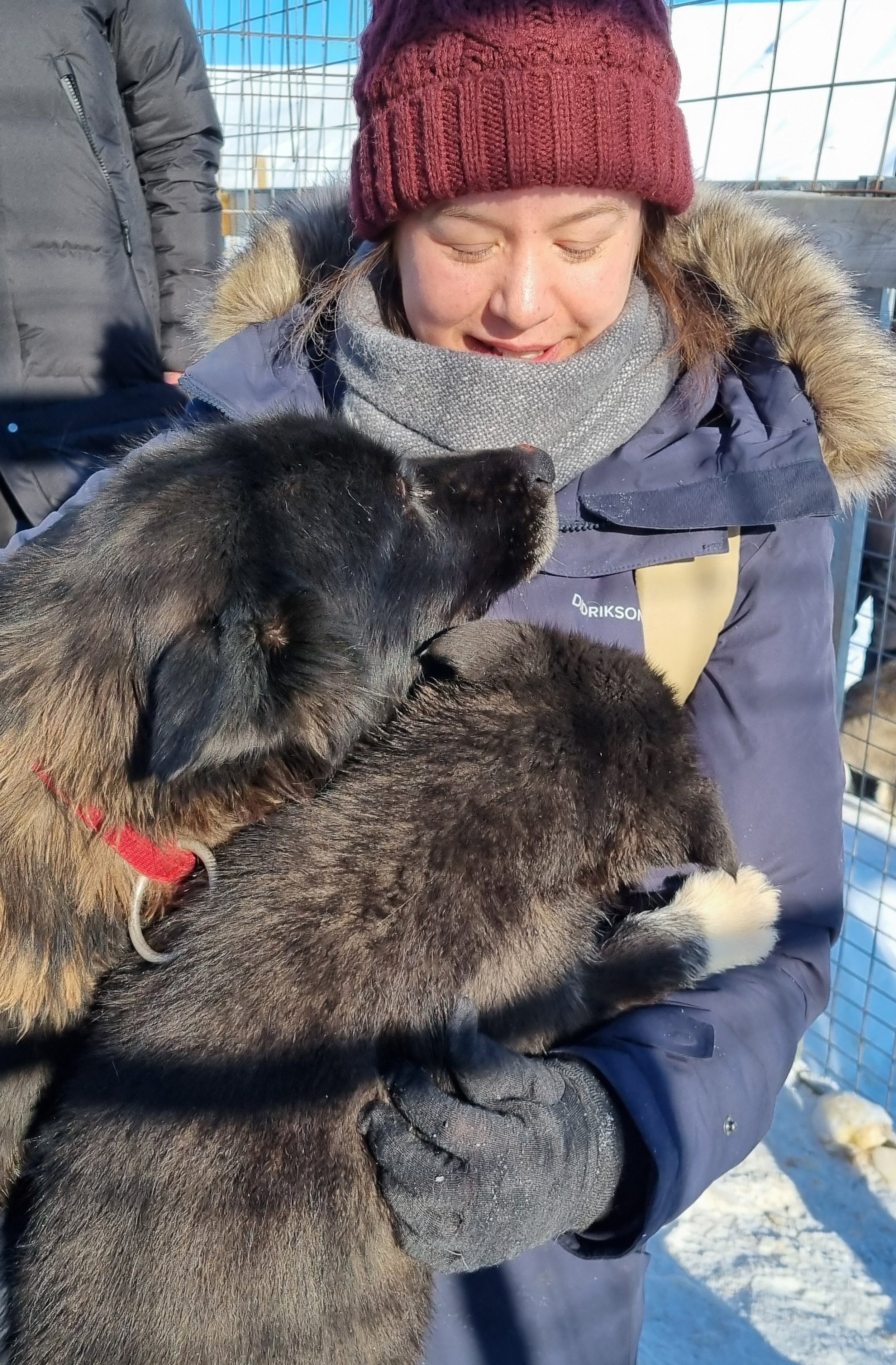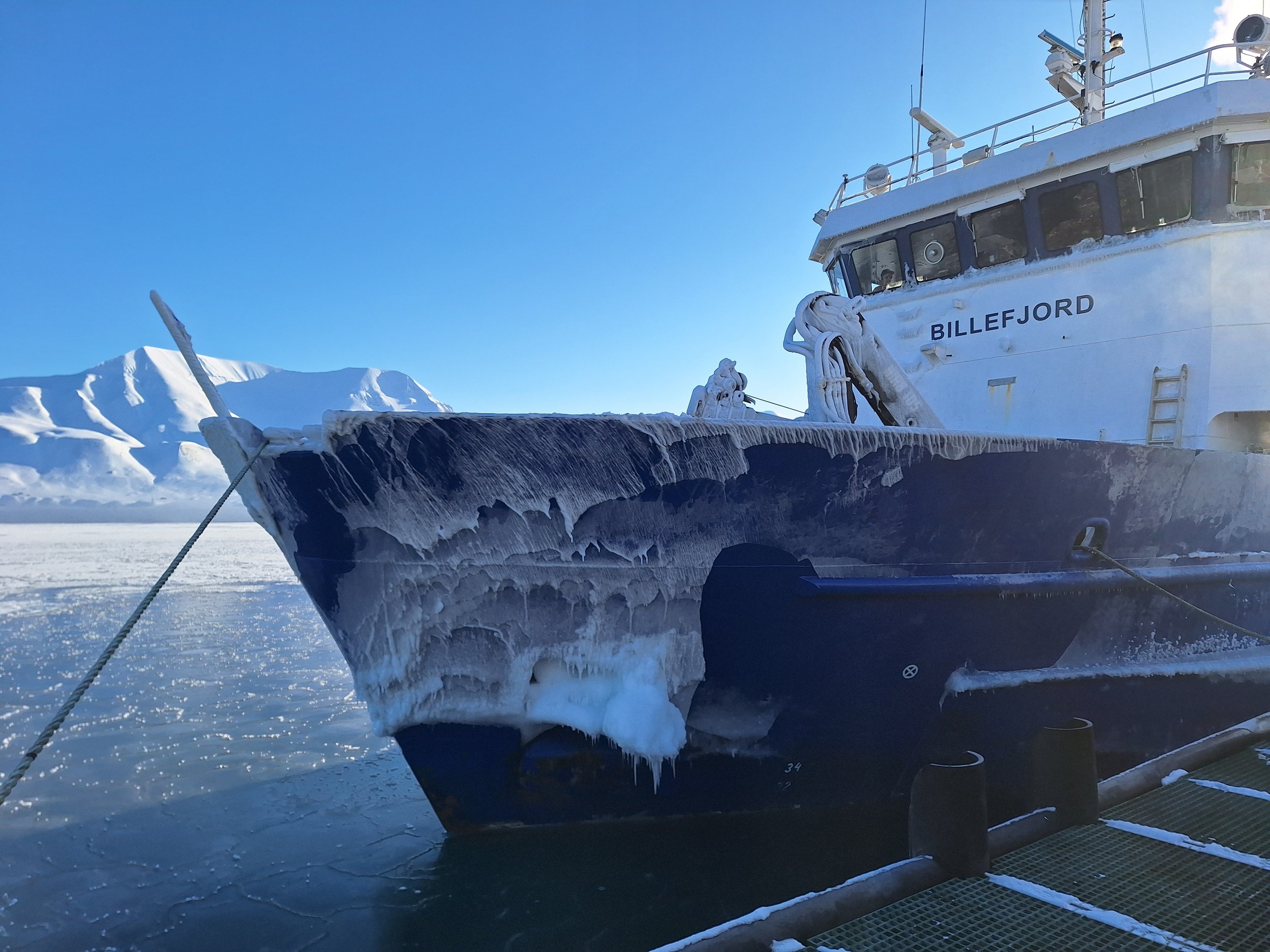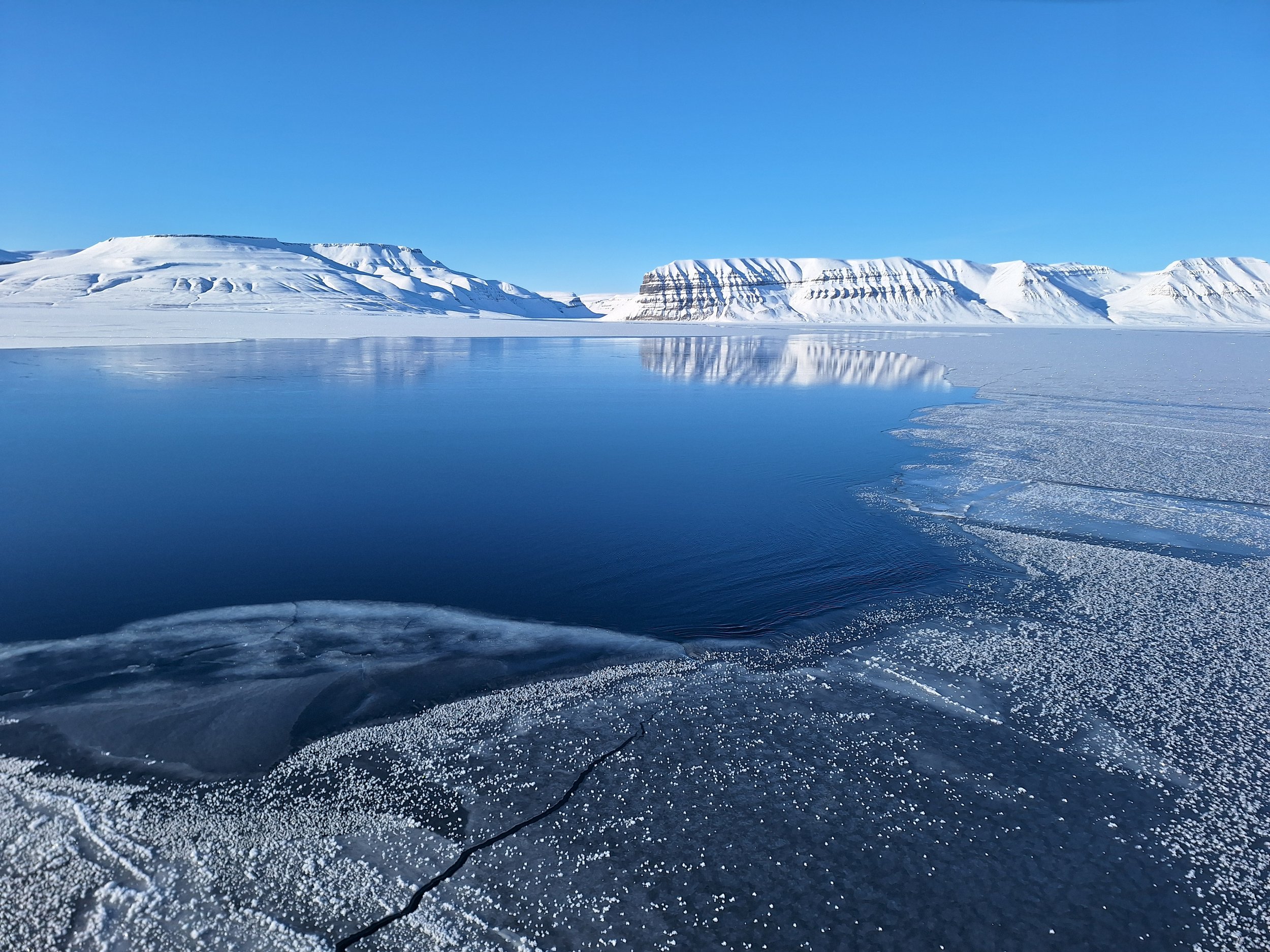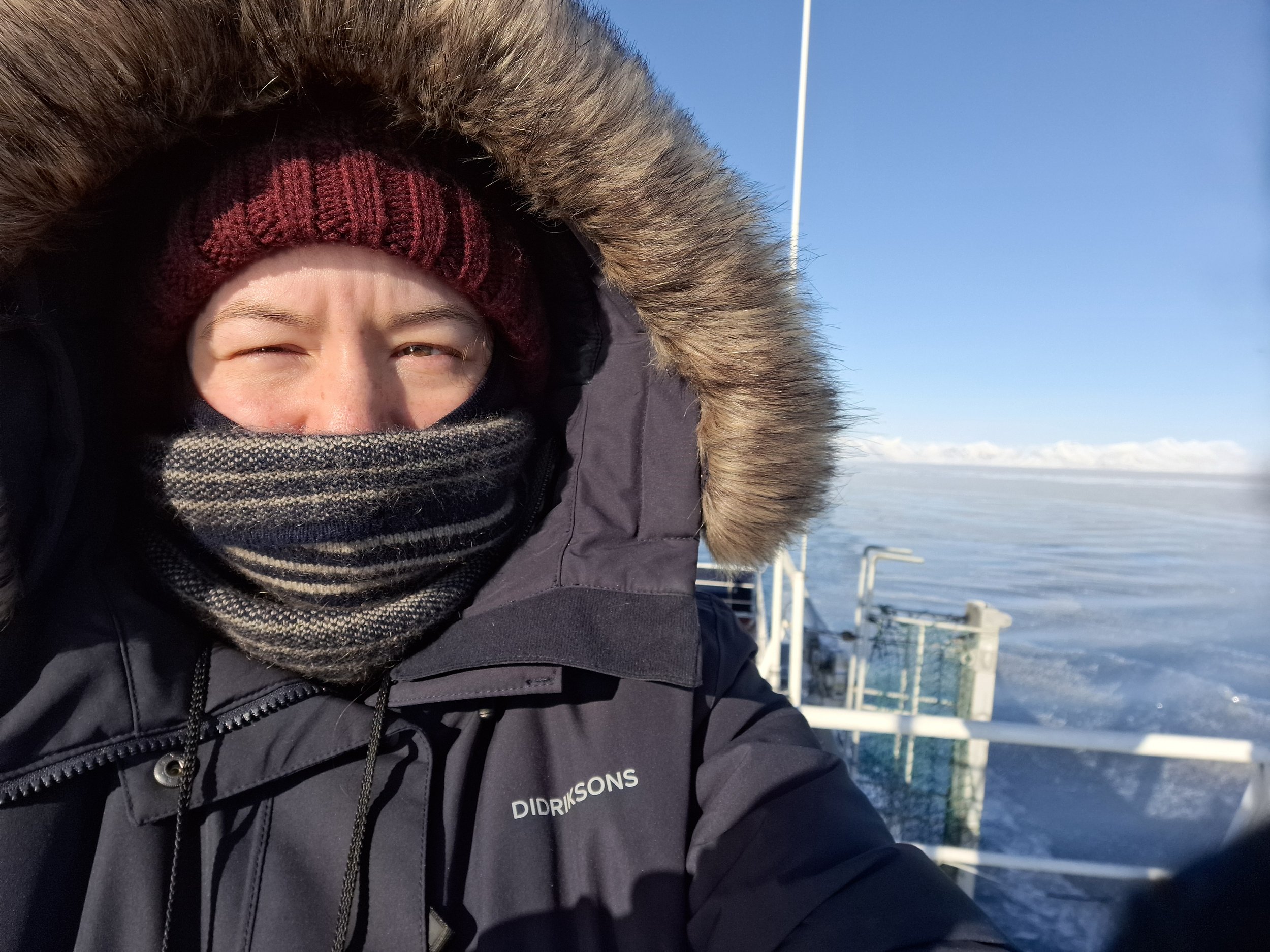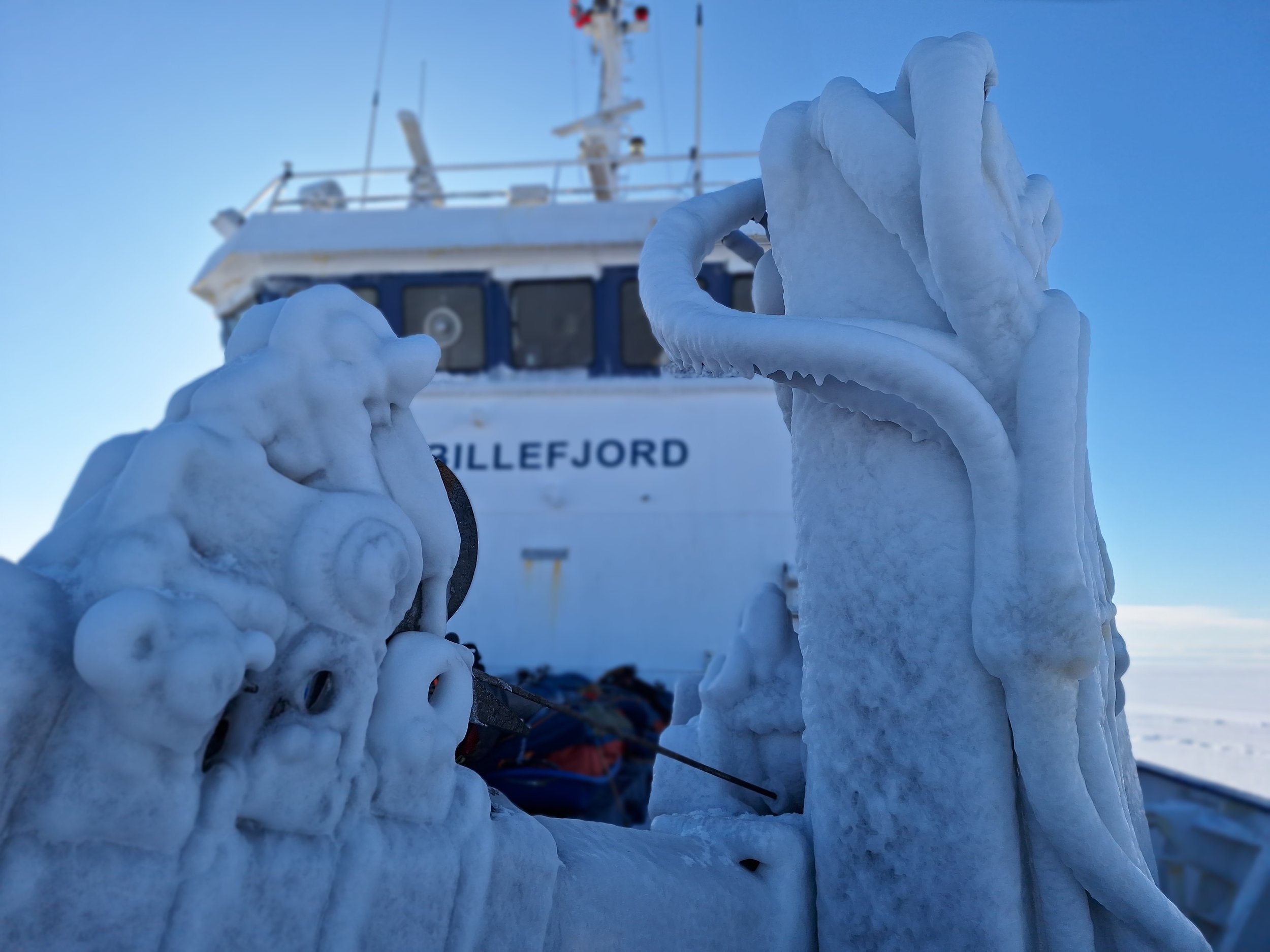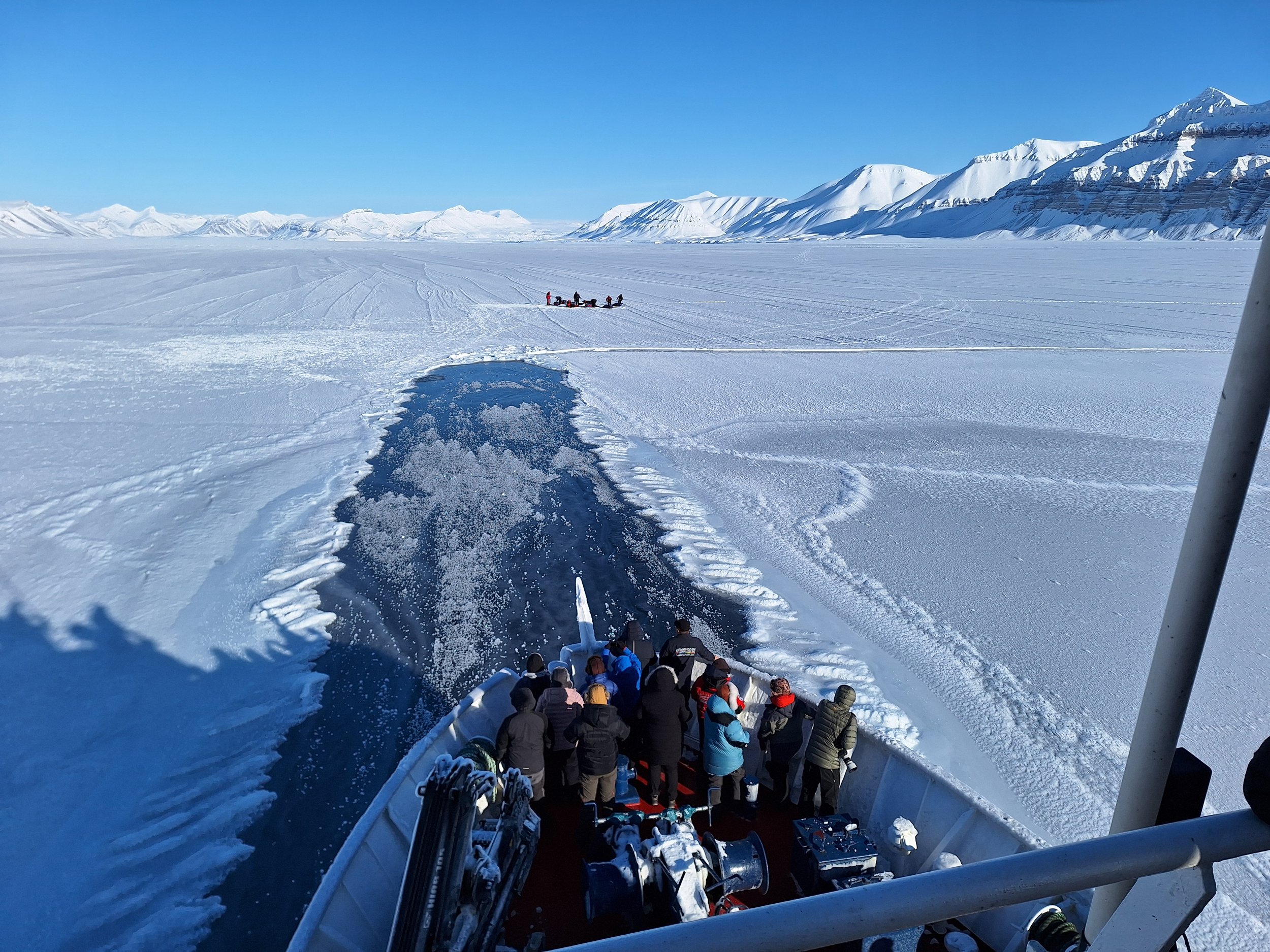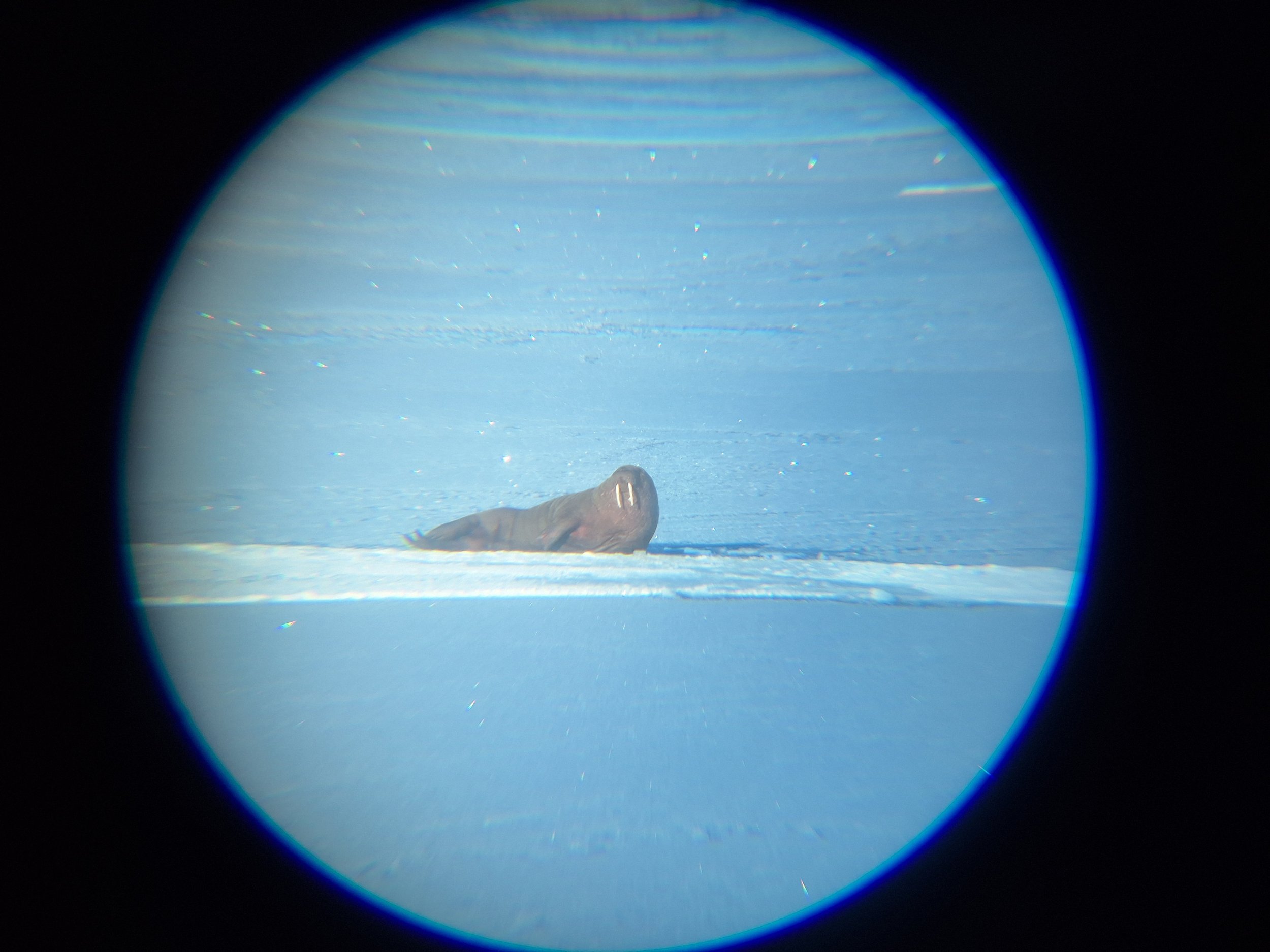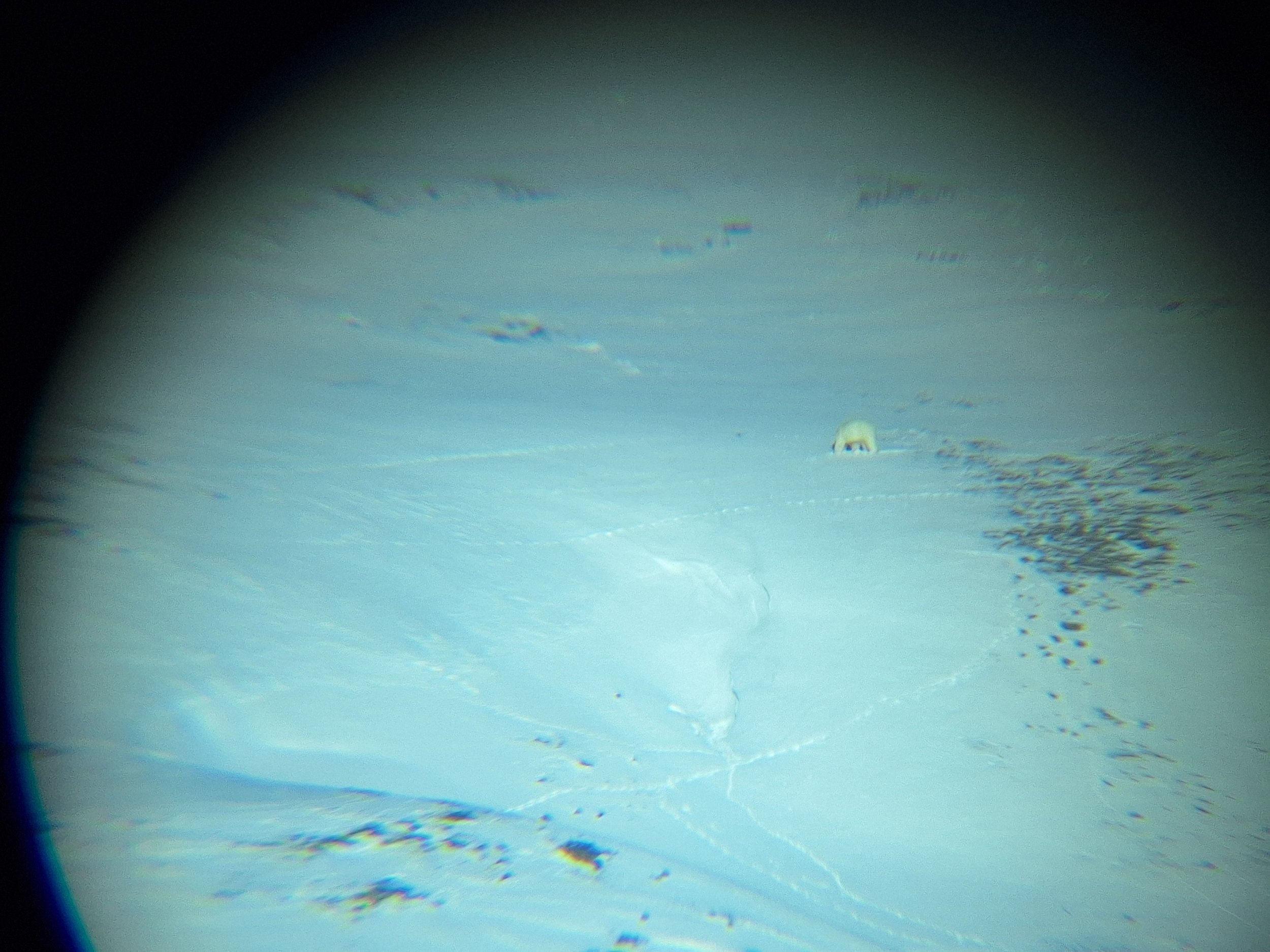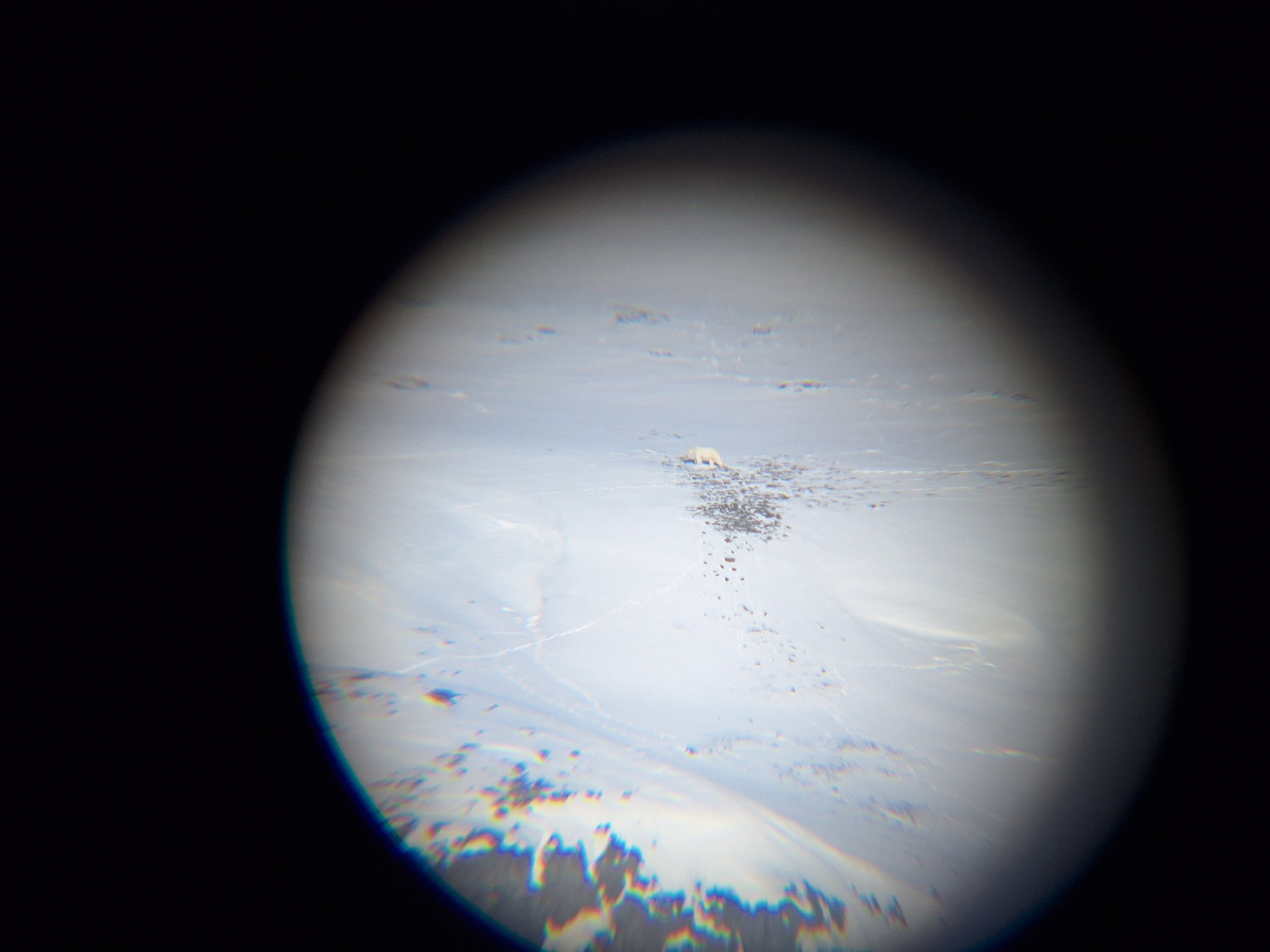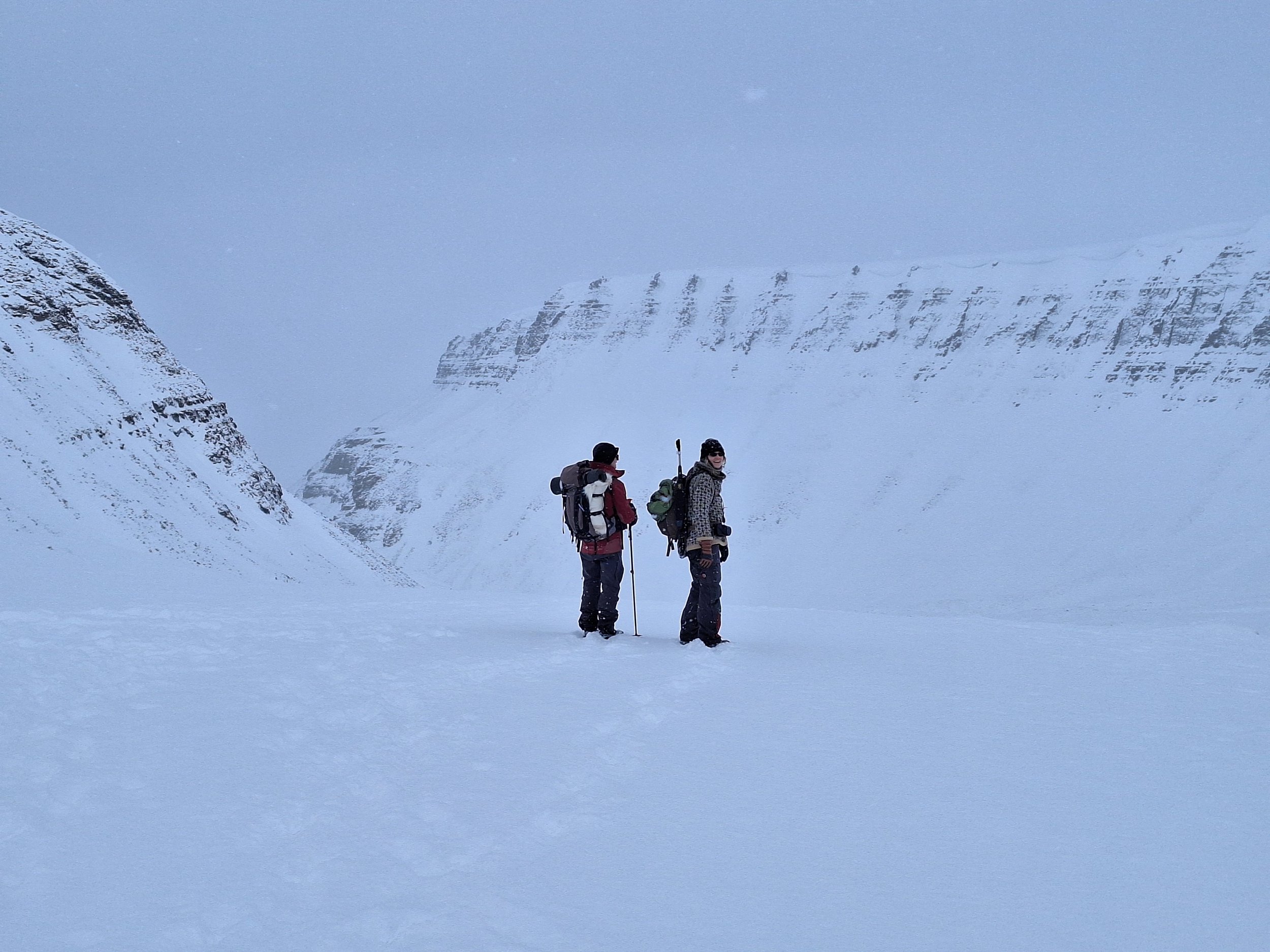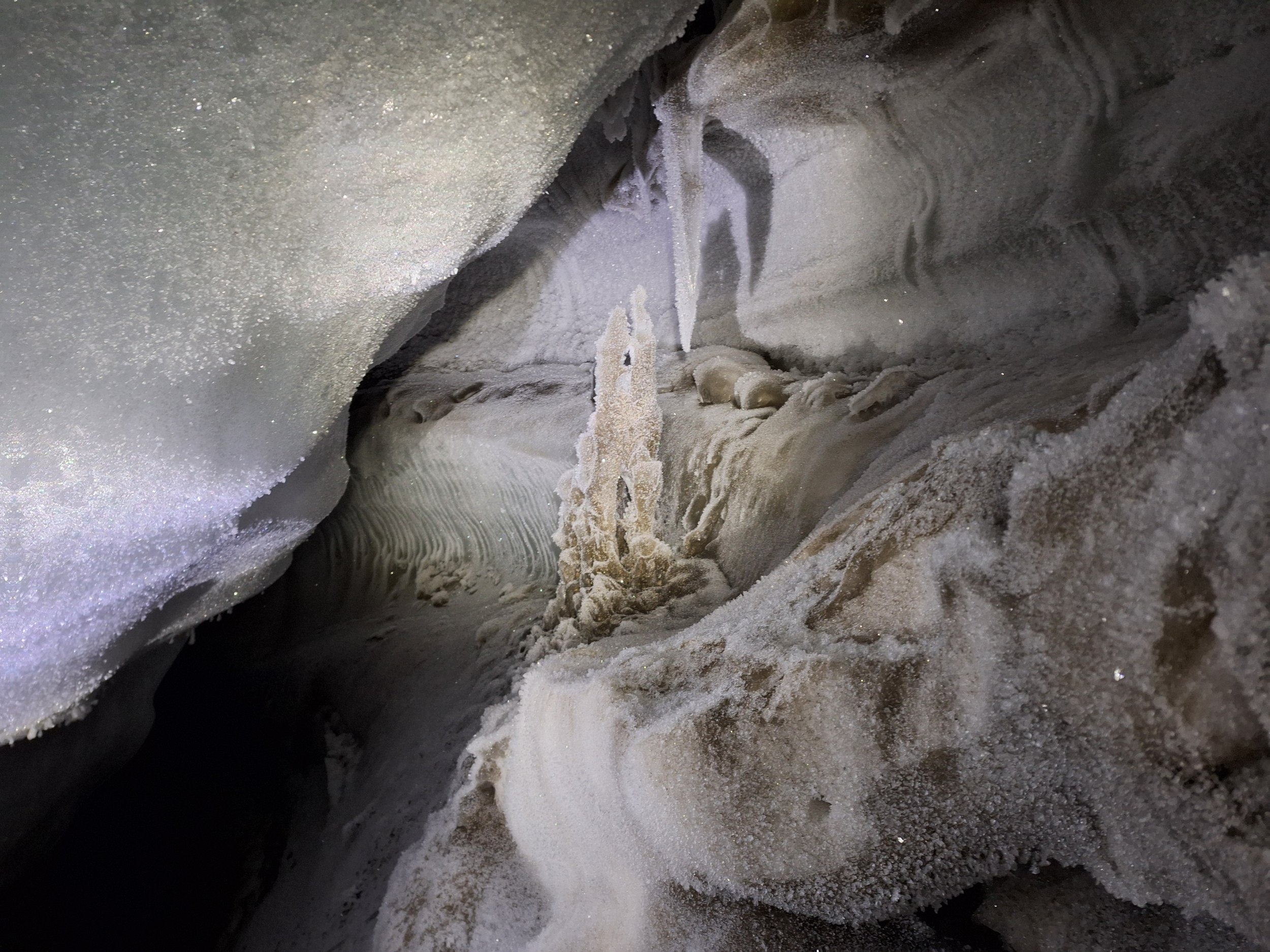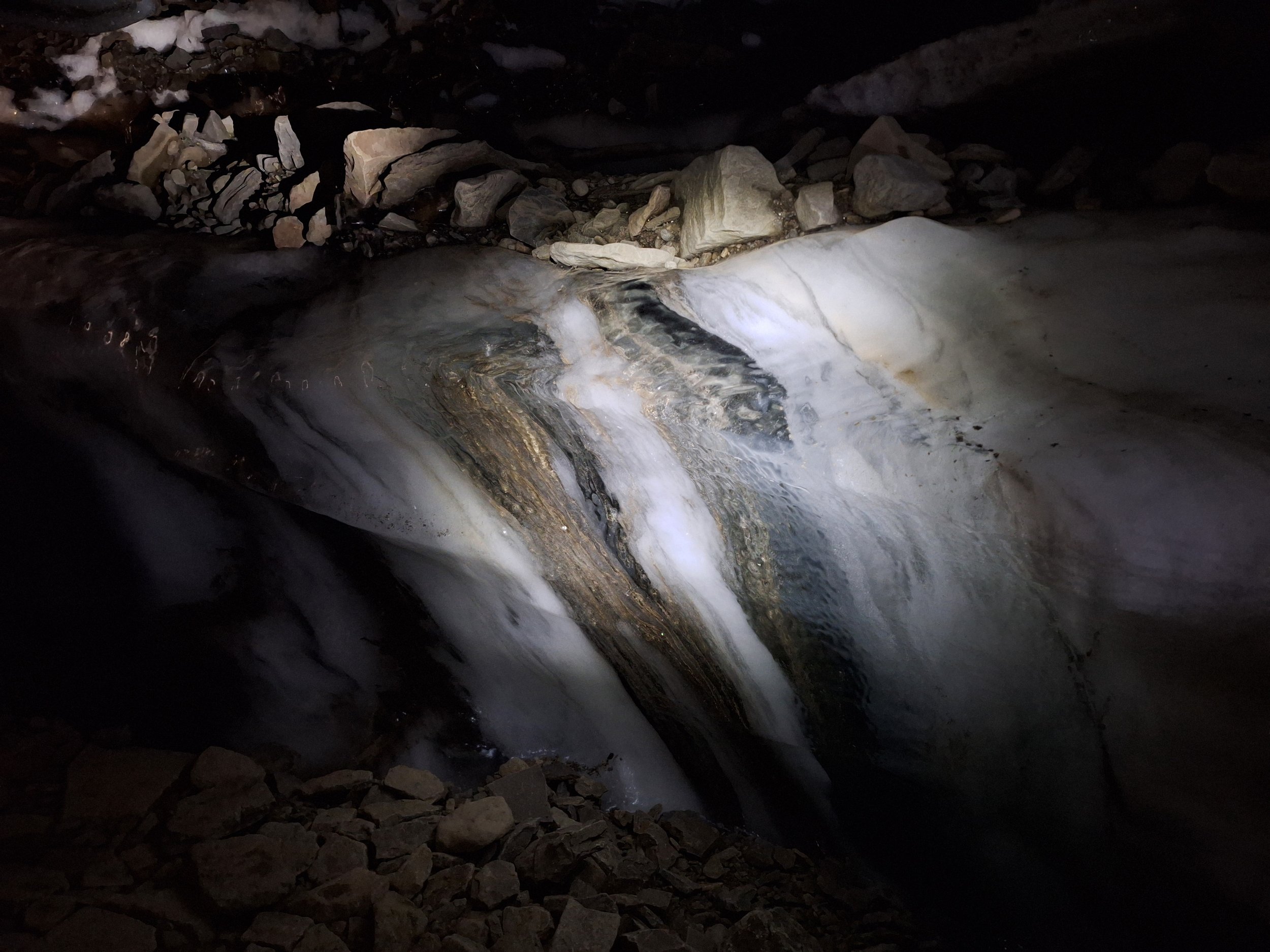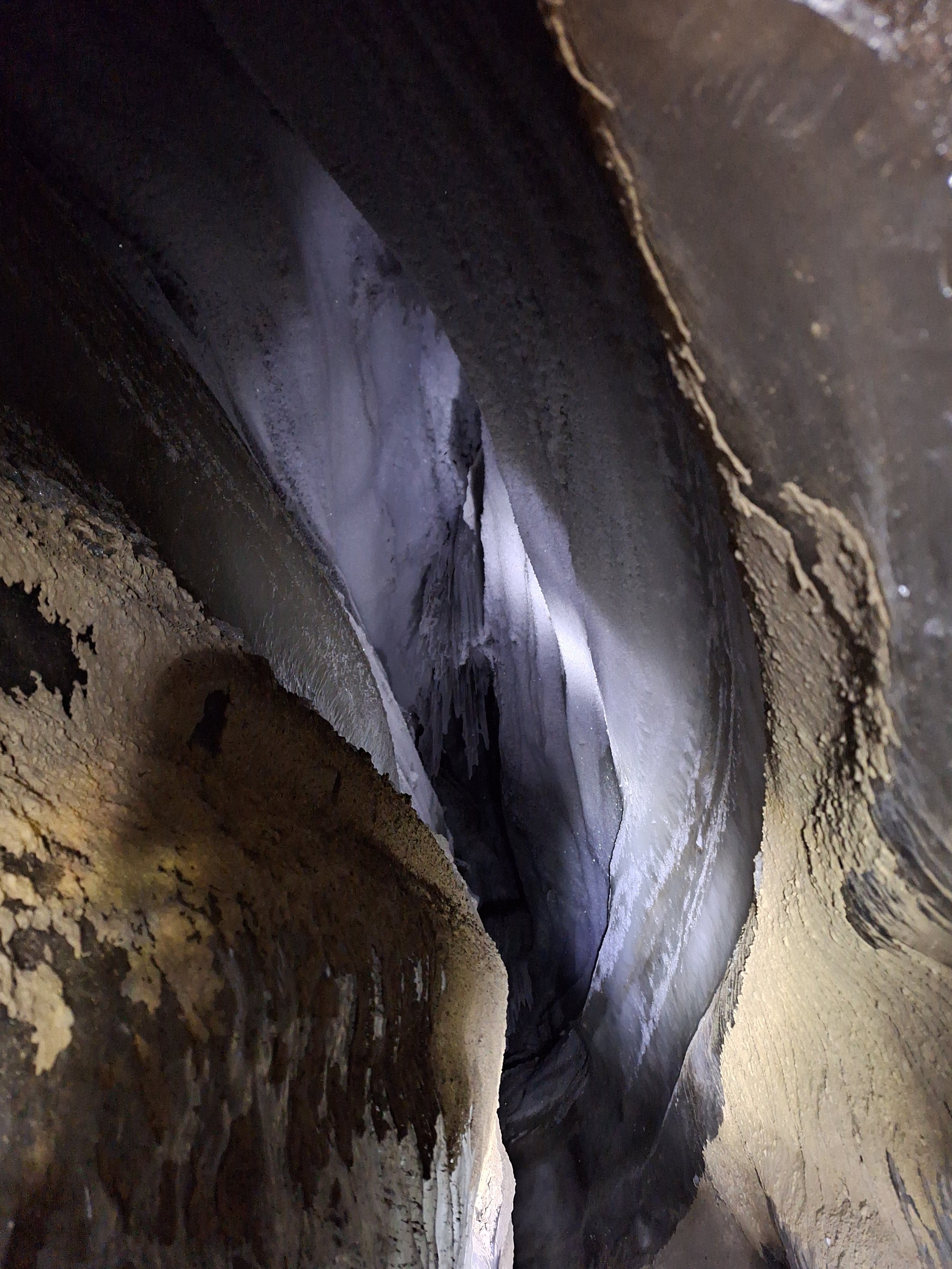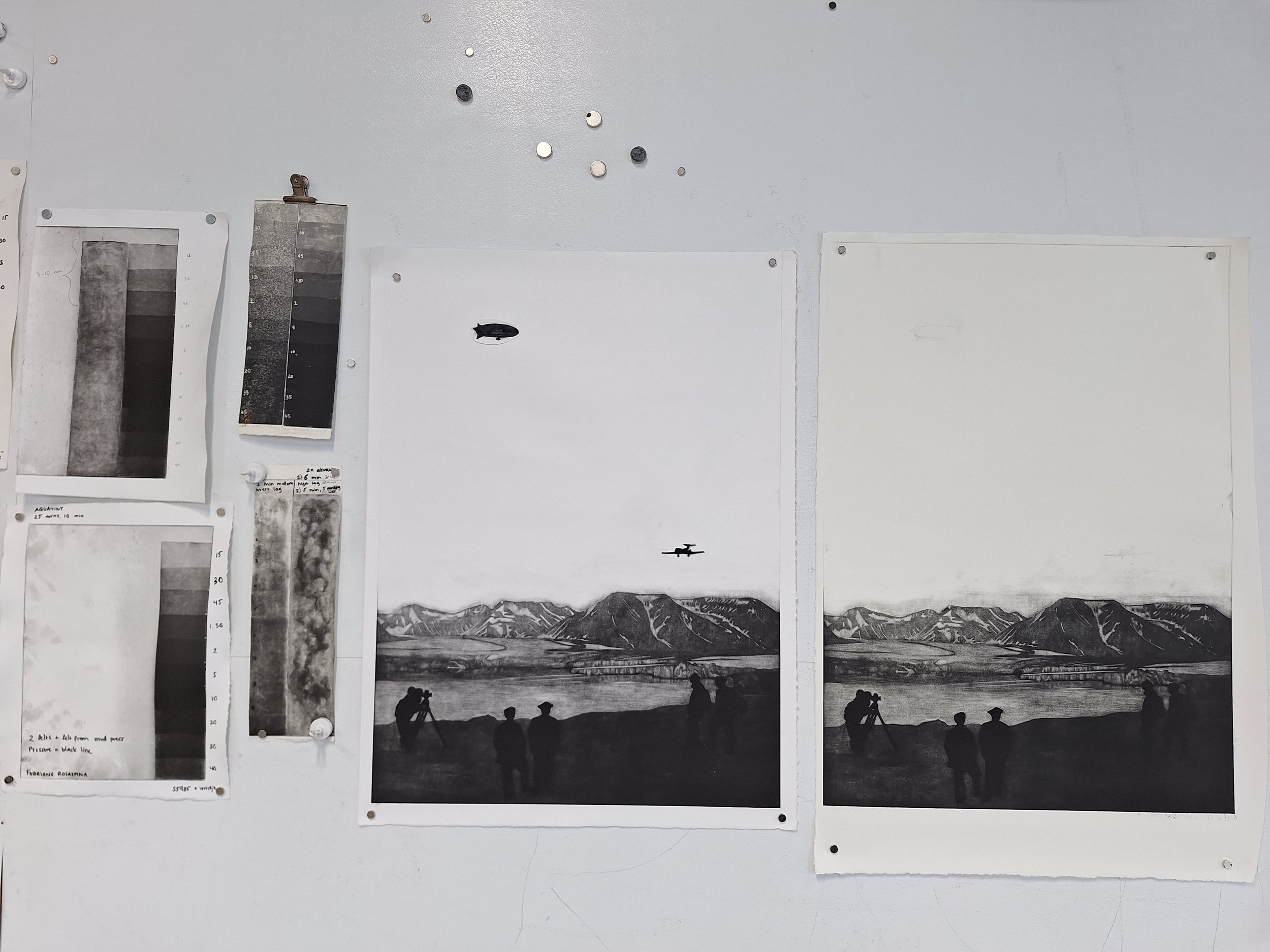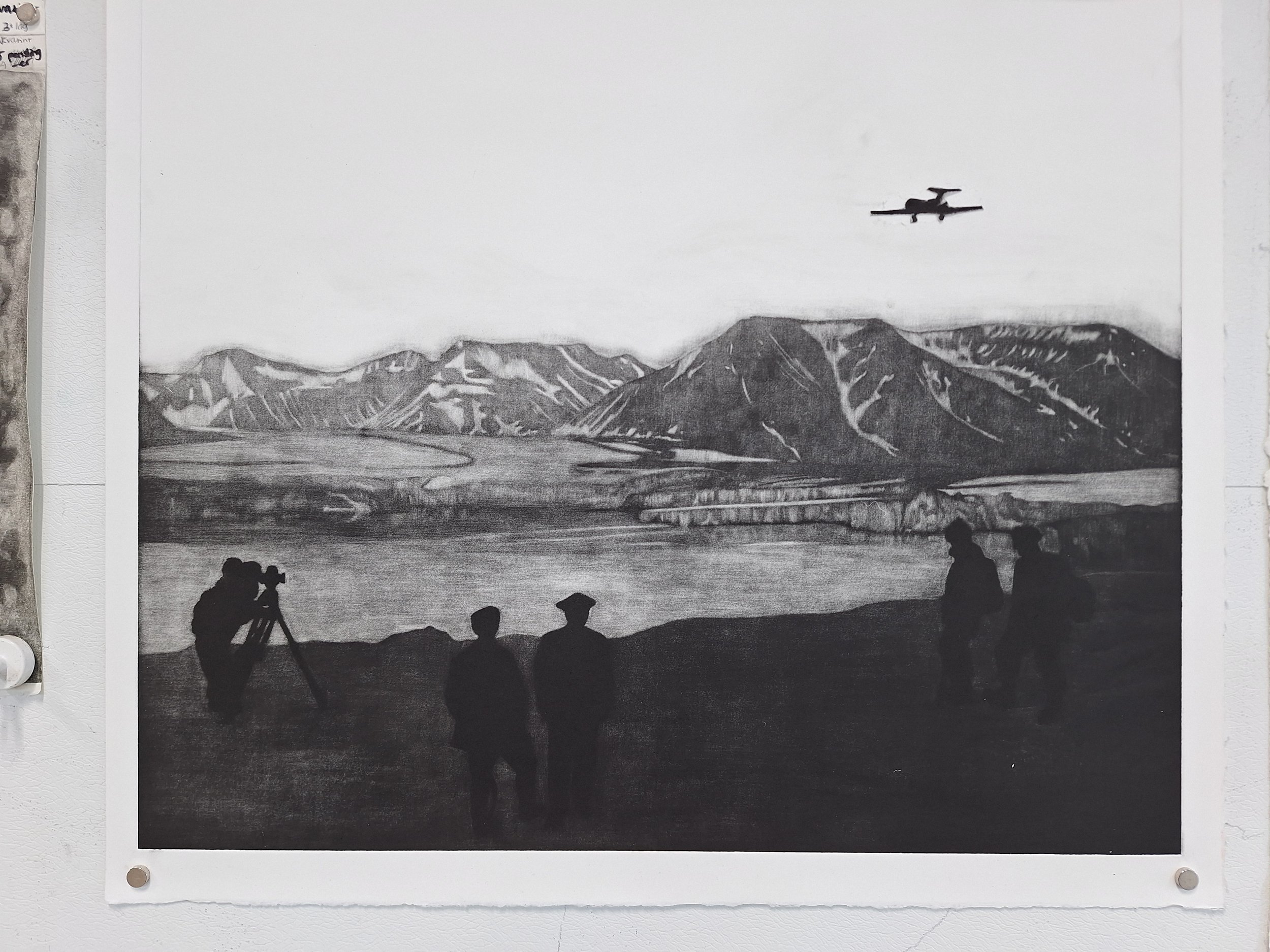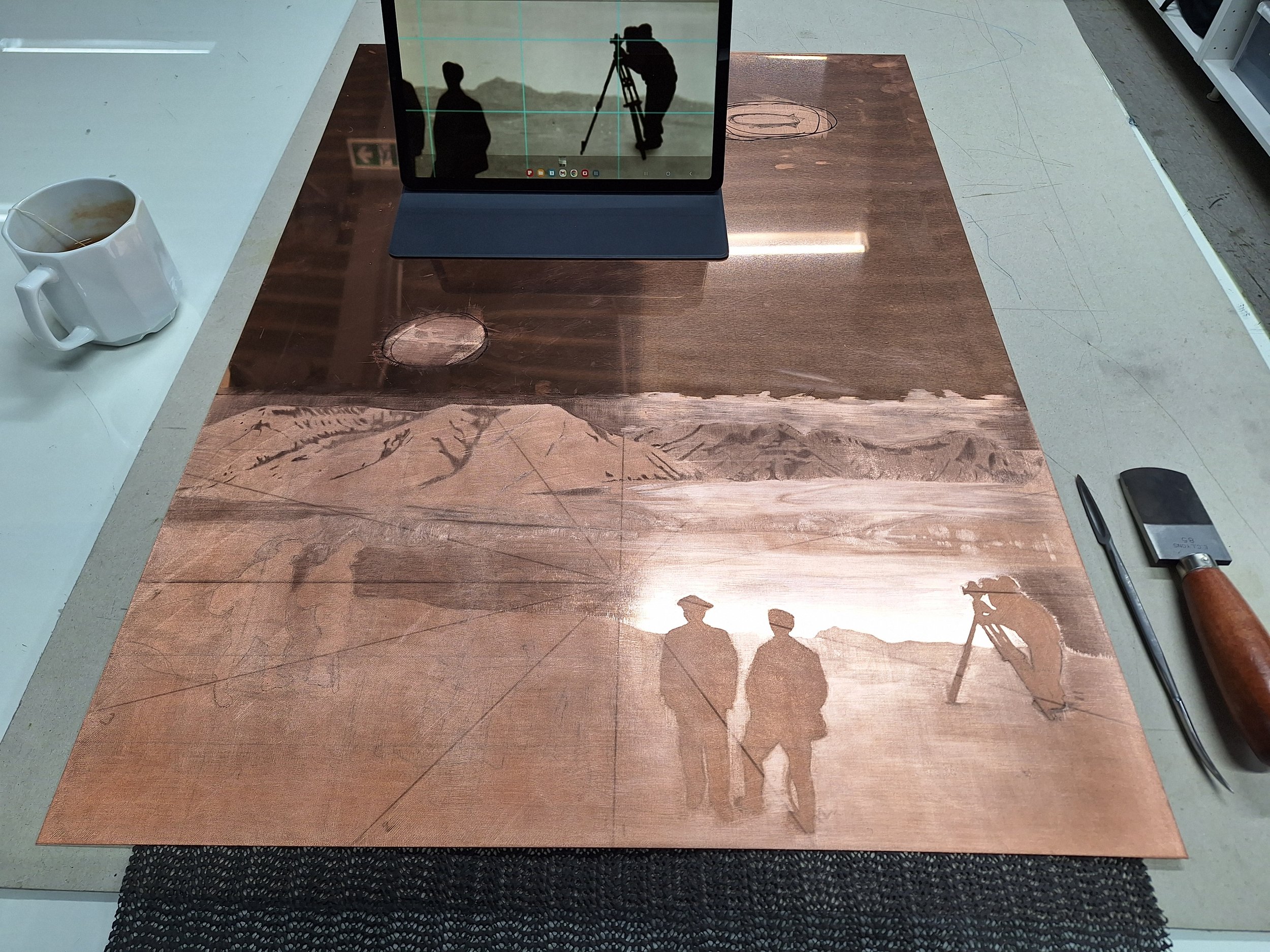Every time you think you are getting used to the landscape here, it changes. Just as I was getting used to the view of the still blue water which spring had brought with it, the beginning of this week greeted us with massive packs of drift ice which had swept into the fjord overnight. While creating a bit of a havoc for the smaller boats, the big blocks of ice looked spectacular and dramatic - just what you imagine the Arctic to be. It very much helped set the tone for my next print.
This week I paid another visit to the Svalbard Museum and the North Pole Expedition Museum to conduct some research. Since many decades back, Svalbard has been a launching point for (mainly masculine) attempts at polar exploration, and a stage (in the double meaning of the word) for conquering the great white unknown. Both museums contain some beautiful prints, objects and images which tell the tales of early polar expeditions - such as those of Walter Wellman, Solomon August Andrée, Adolf Erik Nordenskiöld, Otto Torell, Roald Amundsen, Fridjof Nansen and Umberto Nobile. They all used Svalbard as a base for their further ventures northwards.
From the Svalbard Museum:
Nowadays we know that the North Pole is in the middle of an ocean and is covered in ice, but early explorers had no idea what they might find. Open sea? A huge hole? Undiscovered land? Were there inhabitants, previously unknown peoples? Serious research designed to find answers is often overshadowed by sensational, or even foolhardy expeditions to the north. Financial backers were often more inspired by narratives that bolstered national pride than by sober pursuit of research data.
To me, the most dramatic and emotionally charged of all Arctic expeditions must be the Andrée Expedition of 1897, in which Swedish explorer Solomon August Andrée and his two men attempted to fly over the North Pole in a hydrogen balloon departing from Svalbard’s Danskøya (Dane’s Island). While a bold and ingenious (and some might say unhinged) idea ahead of its time, the balloon had severe technical issues which Andrée supposedly attempted to conceal before launch - the forces of royal sponsorships and press publicity weighing heavily enough for him to take the risk of flying. Once the balloon soared out of view behind the mountains, Andrée and his team, consisting of Nils Strindberg and Knut Frænkel, were never seen again. The trajectory of their journey remained a mystery for 33 years, until the crew of a Norwegian whaling and research vessel accidentally stumbled upon their campsite at Kvitøya (White Island) in eastern Svalbard, where they found skeletal remains, photographic negatives, journals and a vast supply of food and clothes. I would heartily recommend reading Bea Uusma’s fantastic book on the subject, Expeditionen: min kärlekshistoria, in which she attempts to once and for all to solve the mystery of what led to their ultimate demise. She also features in a great episode about the expedition on Sveriges radio (in Swedish). Fragments of the balloon, made from varnished Chinese silk, can be seen in both the Svalbard Museum and the North Pole Expedition Museum. Seeing the fragments of fragile silk gave chills down my spine.
A fragment of Andrées balloon “The Eagle”, retrieved from Kvitøya. The balloon was custom-made in France from several layers of hand stitched, varnished Chinese silk.
While few of Earth’s places remain unexplored today, Svalbard and the idea of “North” still holds a mythical place to many. Svalbard, being both accessible and distant at the same time, has served as the perfect starting point for those wishing to explore the Arctic - now mostly for personal and creative growth rather than for national honour and glory - me being one of many.
The print that I am currently working is being created with all of these stories whirling around in my head. I found some stunning old photographs of the jagged mountains and glaciers around Magdalenefjorden in the Svalbard Museum Archives, and decided to use these as reference for my next mezzotint. By happy chance, I discovered that Magdalenefjorden is very close to Danskøya, from where Andrée launched his fatal balloon expedition. It is also the area where Dutch explorer Willem Barentsz first set eyes on Svalbard, which he then named Spitzbergen from its “spisse berg”, i.e. sharp jagged mountains.
With this information in mind, I have decided to incorporate fragments of contemporary illustrations from both Andrée’s expedition and Barentz’ discovery into the scenery - layering different histories together and charging the landscape with human narratives. After all, Svalbard’s nature, while beautiful on its own, has become a tableau and stage for human folly and ambition, being littered with tragic tales and crushed dreams.
















